It seems we can’t find what you’re looking for. Perhaps searching can help.
Sign Up for newsletter!
Subscribe to get the latest eBook!
Hotline


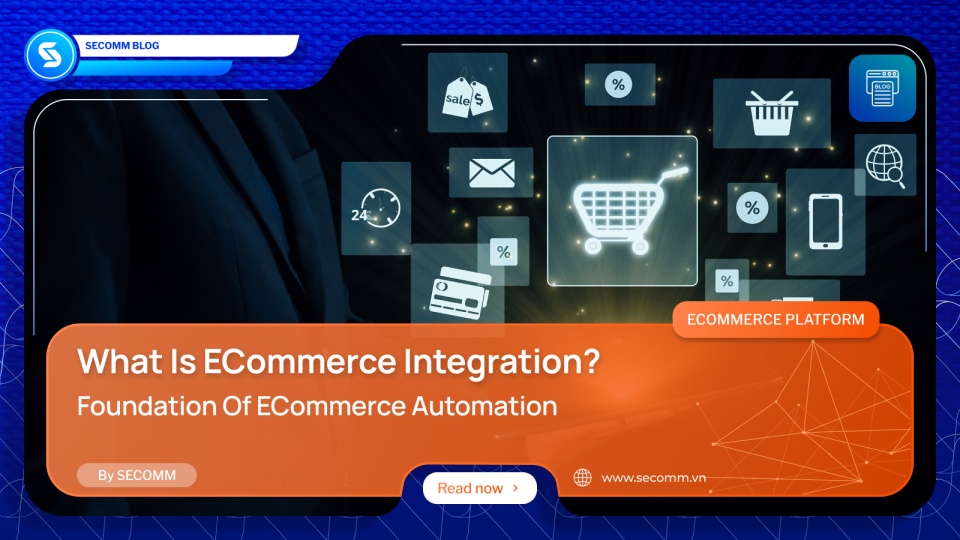
 50
50
 5,538
5,538
 0
0
 20
20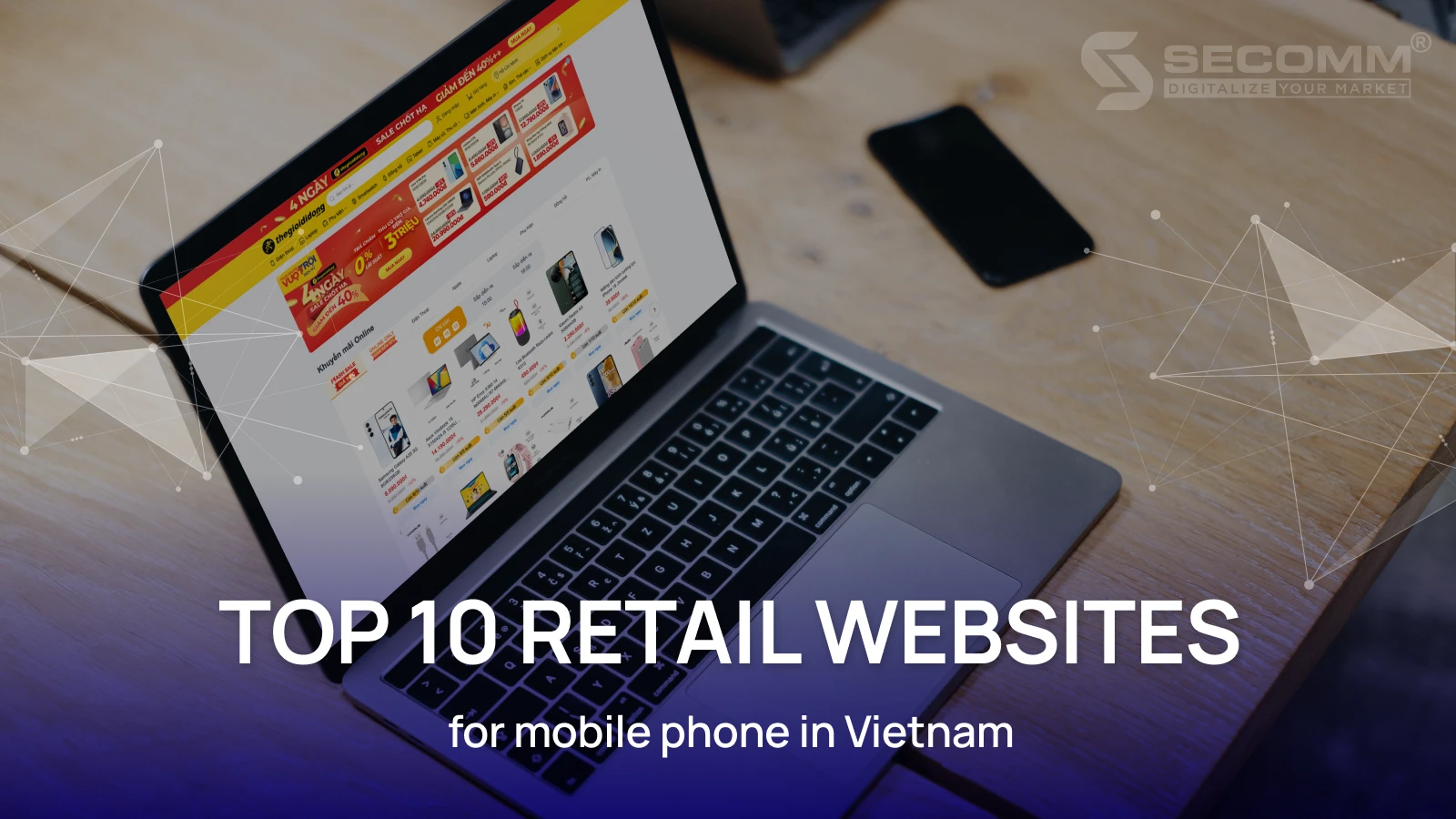
 45
45
 40,647
40,647
 0
0
 13
13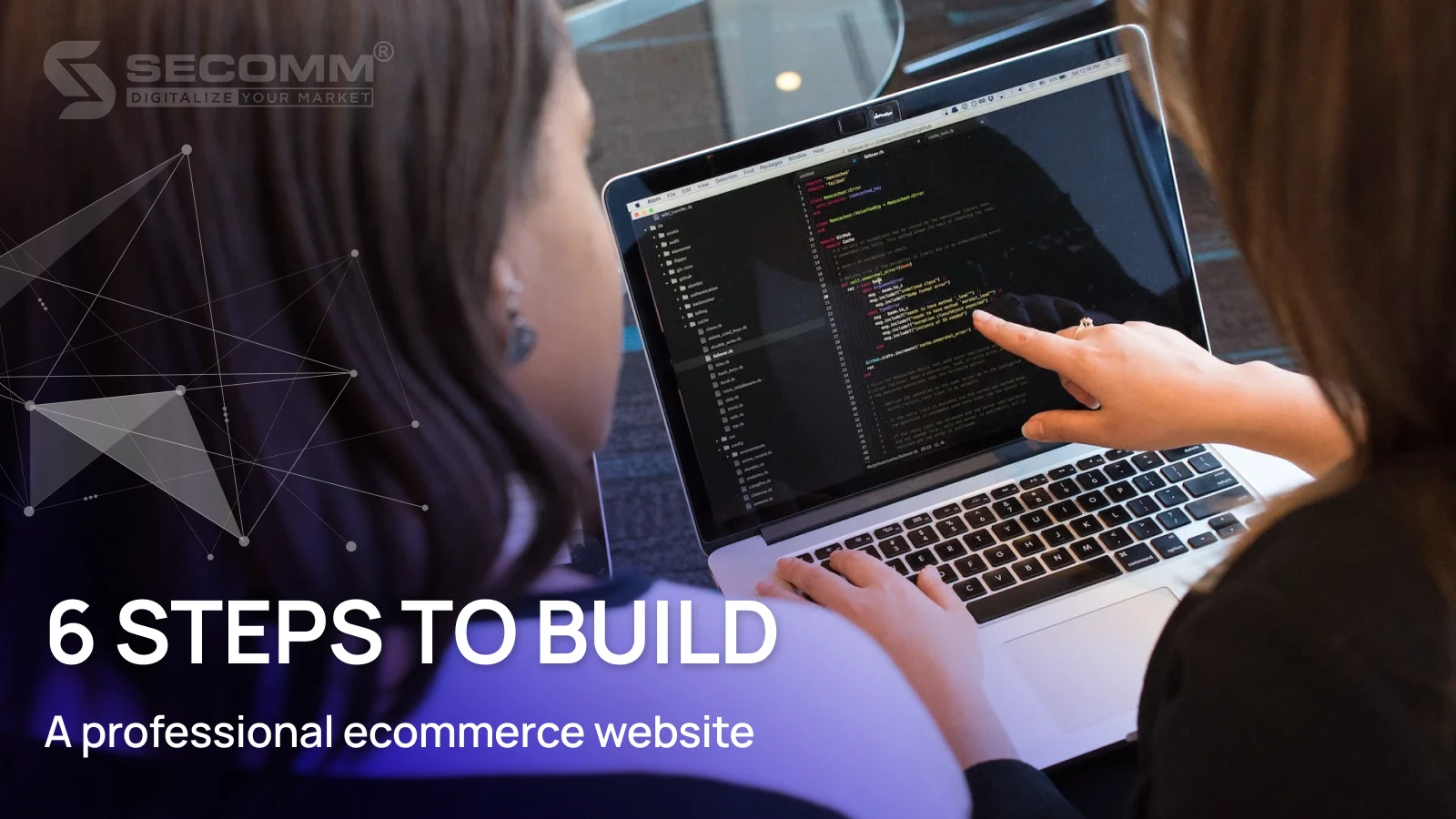
 79
79
 31,880
31,880
 1
1
 58
58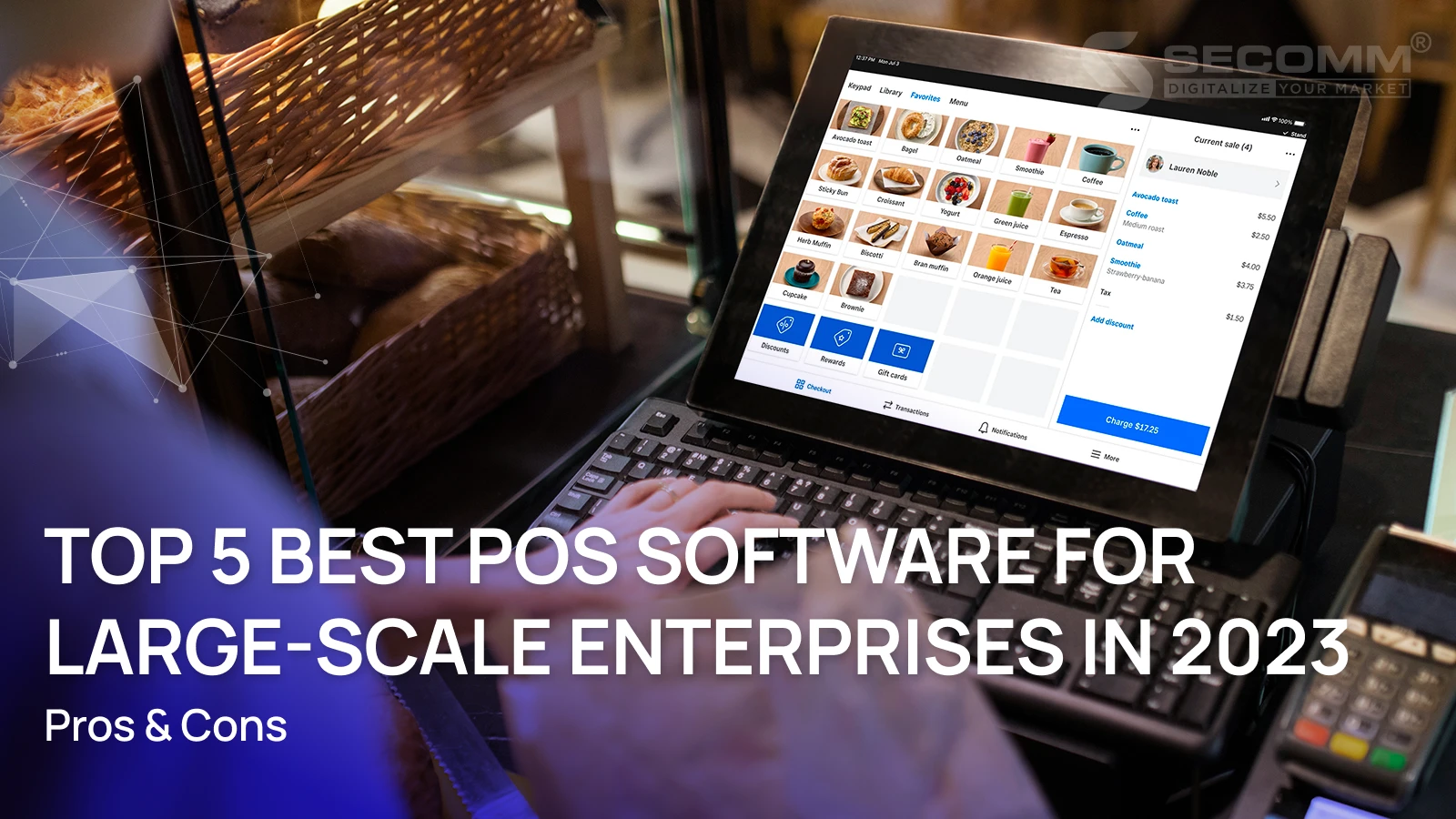
 8
8
 21,182
21,182
 1
1
 2
2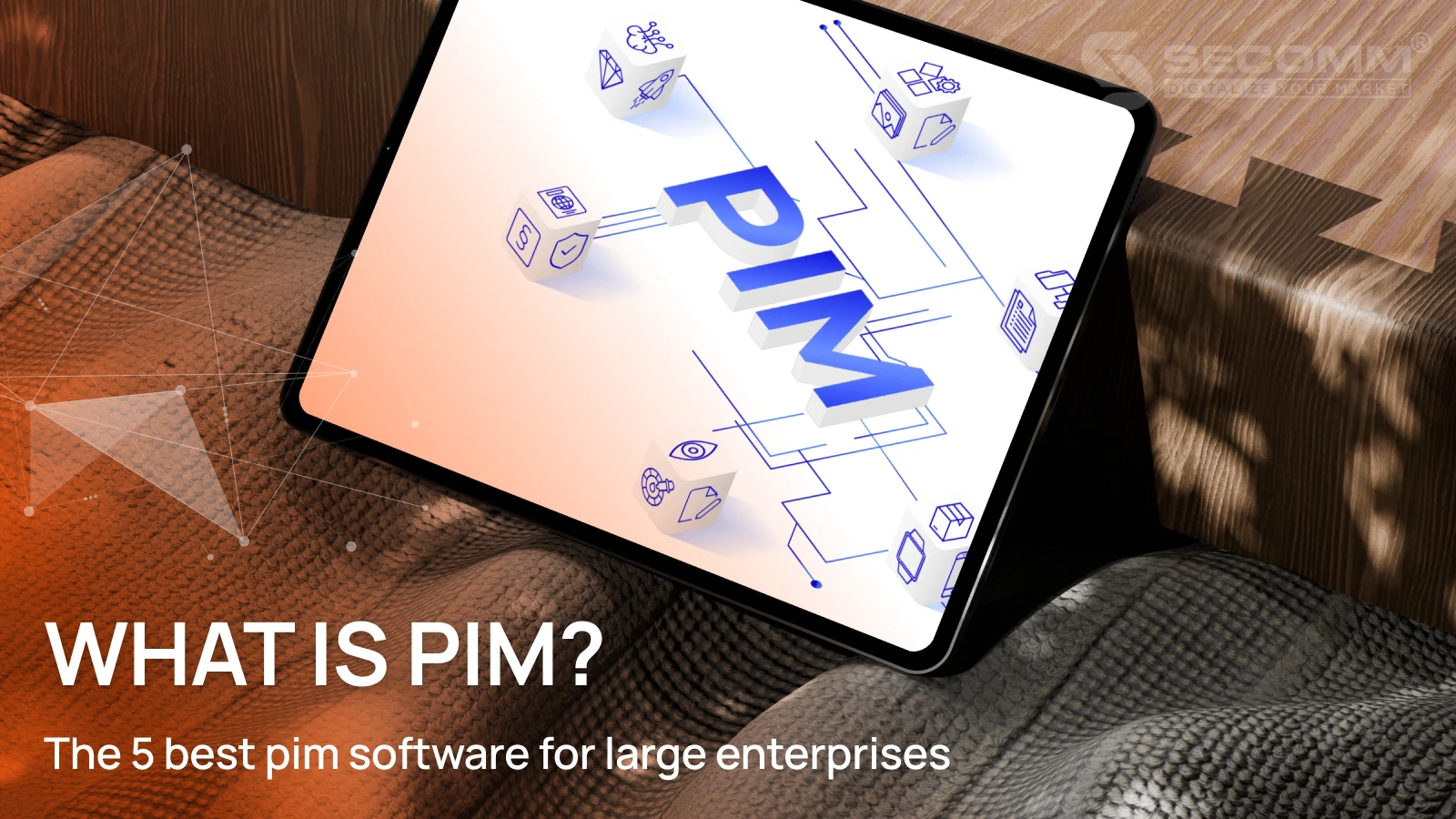
 2
2
 18,639
18,639
 0
0
 1
1




According to Business Research Insights, in 2023, the global e-commerce platform market size will exceed $7 billion, with projections to surpass $24 billion by 2031. The eCommerce market is growing fast and expected to triple by 2031. Yet, many businesses still struggle with disconnected systems that slow operations and fragment data. The solution lies in connecting everything that drives your online business – eCommerce Integration. So, What is eCommerce integration? Foundation of eCommerce automation?
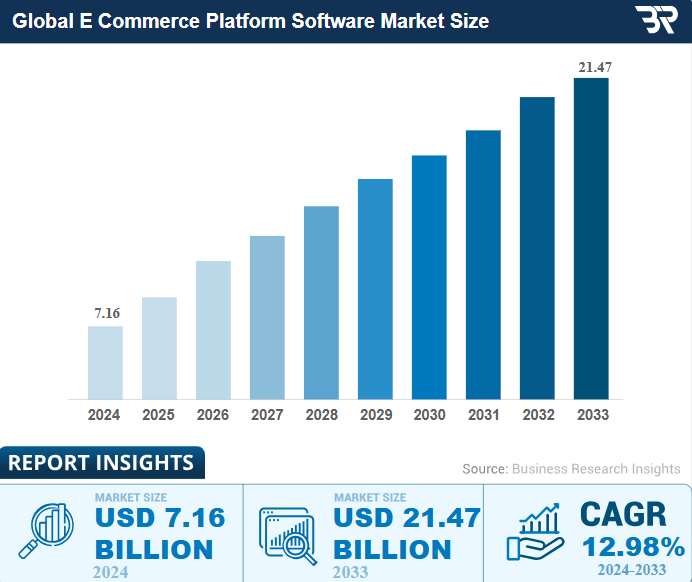
eCommerce integration is the process of connecting all digital systems that your online business relies on from storefronts and inventory to marketing and finance. Rather than treating each tool as a standalone platform, integration transforms them into one cohesive ecosystem where data flows freely, automatically, and accurately.
In simple terms, integration means your ERP, CRM, OMS, payment gateways, and marketing platforms can “talk” to each other, allowing your operations to run smoothly and your teams to focus on growth, not manual tasks.
When systems are integrated properly, your business gains transparency, speed, and scalability. You no longer need to manually update stock, export customer data, or reconcile reports – the systems do that for you, in real time.

Integration does more than link software; it creates the foundation for automation and intelligent decision-making.
When your eCommerce tools share data seamlessly, you can:
In other words, integration transforms your operations from reactive to proactive — giving you full control over your business ecosystem.
To build a truly connected and future-ready eCommerce ecosystem, businesses need a few key types of integration that unify all aspects of their operations.
Let’s explore the main categories that make modern commerce run efficiently:
ERP and CRM systems form the operational core of any eCommerce business. ERP manages financials, products, and inventory, while CRM centralizes customer profiles, interactions, and engagement data. When integrated, these systems give your business a unified view of both operations and customers.
Benefits:
Example: Integrating SAP Business One or Odoo ERP with Salesforce or HubSpot CRM enables automatic updates from orders to invoices and customer engagement data.
For enterprises managing massive data warehouses and fragmented data sources beyond standard CRM capabilities, implementing a Customer Data Platform (CDP) is the key to achieving a truly unified Single Customer View. Learn more about when to upgrade: What is a CDP? Comparing CDP and CRM
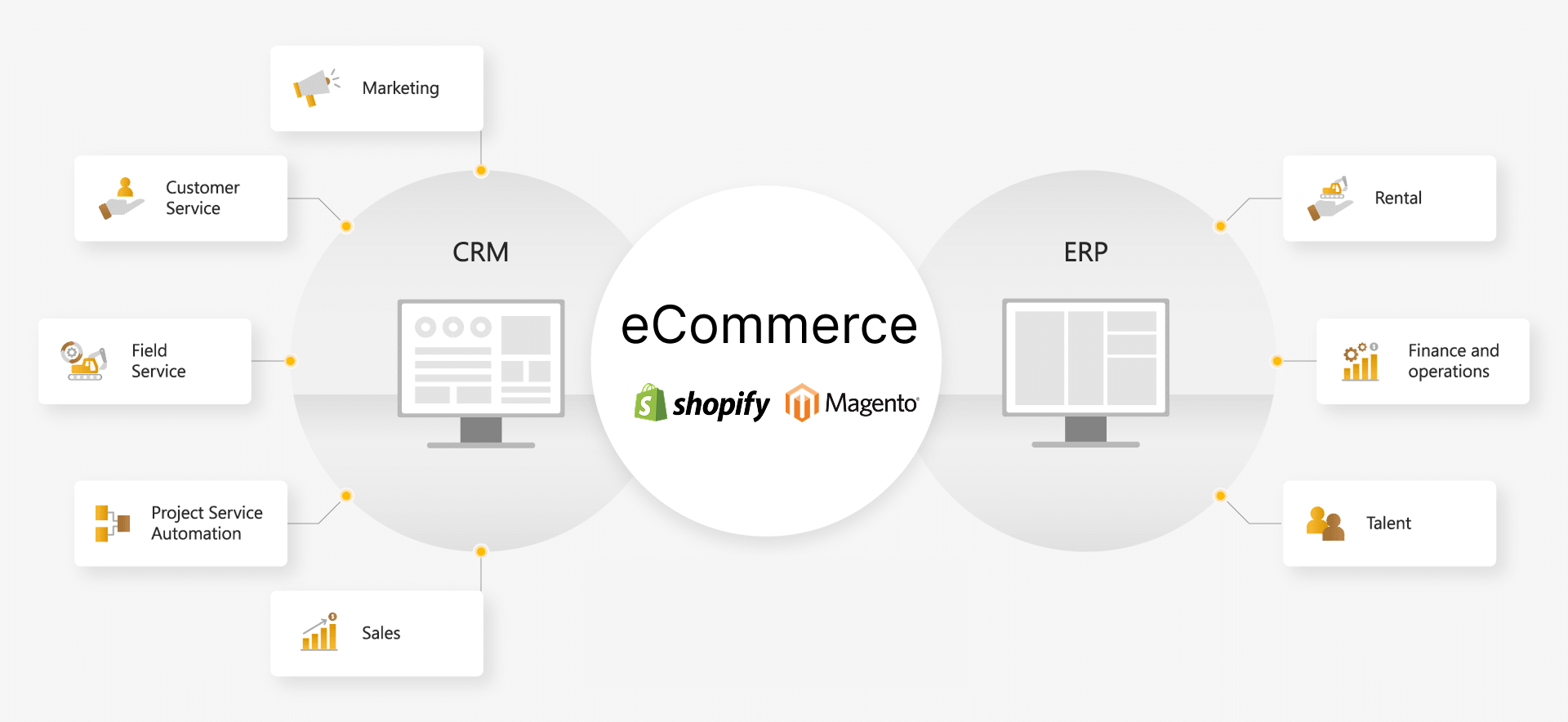
Order Management Systems (OMS) and Warehouse Management Systems (WMS) ensure that every order is processed efficiently and accurately. Integration between these systems automates fulfillment, reduces human error, and provides full visibility into inventory.
Benefits:
Example: Platforms like Manhattan Associates, NetSuite WMS, or ShipStation can integrate with eCommerce stores using middleware tools such as Boomi or Celigo.
Marketing integration bridges the gap between your online storefront and essential digital marketing ecosystems, such as Email Automation, CRM, and behavioral analytics platforms.
By establishing bi-directional data synchronization, businesses can move beyond manual processes to automate campaigns, hyper-personalize the customer journey, and measure marketing ROI with precision.
Key Benefits:
Real-Time Segmentation: Execute campaigns based on live customer data and segmentation.
Automated Workflows: Streamline post-purchase care chains or trigger abandoned cart reminders automatically.
Unified Analytics: Gain a holistic view of performance by cross-referencing sales data with marketing metrics.
Practical Application: Integrating robust platforms like Shopify or Magento with tools such as Klaviyo, Mailchimp, or HubSpot Marketing Hub allows businesses to trigger automated email flows tailored specifically to user purchasing behavior.
Payment integration connects your website directly with secure payment gateways, ensuring that every checkout process is swift, automated, and fully transparent.
By embedding these systems, businesses create a seamless financial workflow that enhances the customer experience while optimizing backend operations.
Key Benefits:
Streamlined Processing: Accelerates transaction speeds while significantly reducing manual entry errors.
Automated Financials: Enables automatic transaction reconciliation and real-time financial reporting.
Enhanced Security: Ensures strict adherence to PCI-DSS security standards, boosting brand credibility and customer trust.
Practical Application: Connecting global and local providers like Stripe, PayPal, ZaloPay, or MoMo directly to your eCommerce system ensures that every transaction is automatically updated in your accounting software and order management system.
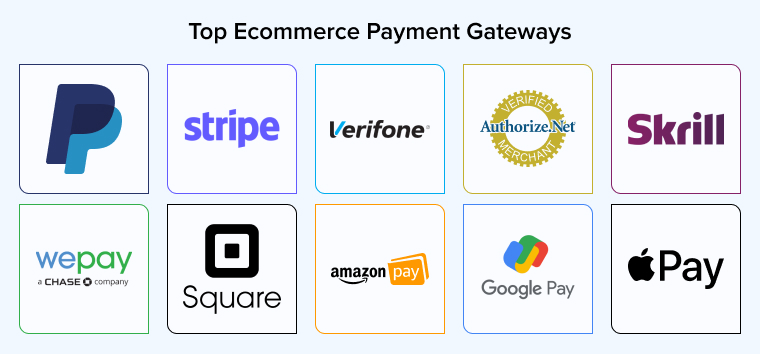
Integrating analytics tools centralizes critical information, ranging from sales and marketing to logistics into a single, unified dashboard. This creates a “Single Source of Truth” for your enterprise, eliminating data silos.
By consolidating these data streams, businesses can transition from reactive reporting to proactive, data-driven decision-making.
Key Benefits:
360° Business View: Gain comprehensive visibility over all operational activities.
Real-Time Reporting: Monitor performance metrics and KPIs as they happen, not days later.
Unified Data Consistency: Ensure all departments—from marketing to inventory—are aligned with the same accurate datasets.
Practical Application: Aggregating data streams from diverse sources (Websites, Marketing channels, CRM, and eCommerce platforms) into visualization tools like Google Looker Studio, Power BI, or Tableau. This enables deep, comprehensive analysis of omnichannel performance
.
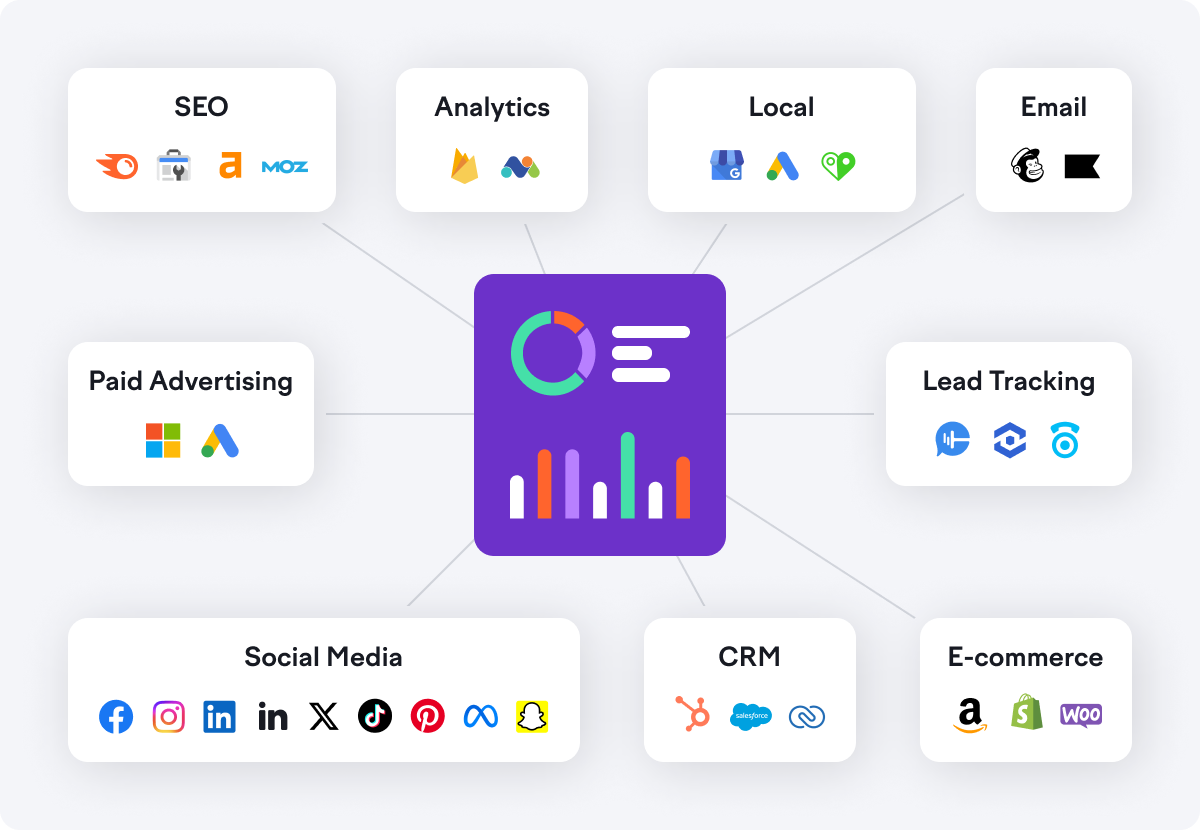
Omnichannel integration bridges the gap between your branded website, physical retail locations (POS), and third-party marketplaces, delivering a truly unified experience for your customers.
By dismantling the barriers between channels, businesses ensure that the customer journey is seamless, regardless of where the transaction begins or ends.
Key Benefits:
Unified Synchronization: Ensure pricing, promotions, and inventory levels are identical and up-to-date across every channel.
Centralized Management: Consolidate orders from all sources into a single interface, simplifying fulfillment and logistics.
Brand Consistency: Elevate customer loyalty and brand recognition by providing a consistent standard of service everywhere.
Practical Application: Leveraging middleware solutions like Celigo or Make.com to connect core platforms (e.g., Shopify Plus, Magento) with marketplaces like Shopee or Lazada. This ensures inventory, pricing, and customer data are synchronized in real-time.
Integration directly impacts every core metric that matters to online retailers:
Put simply, integration is no longer a technical upgrade; it’s a strategic necessity for sustainable eCommerce growth.
As the digital commerce landscape becomes more complex, integration defines how efficiently a business can operate and how quickly it can grow. It connects people, processes, and platforms into one intelligent system, laying the foundation for automation, innovation, and long-term success.
Secomm helps businesses design, build, and optimize integrated eCommerce ecosystems, transforming disconnected operations into streamlined, automated growth engines.
 1. Why is integration required before automation?
1. Why is integration required before automation? 2. Which systems should be integrated first?
2. Which systems should be integrated first? 3. How long does an integration project take?
3. How long does an integration project take? 4. Should small businesses invest in integration?
4. Should small businesses invest in integration? 50
50
 5,538
5,538
 0
0
 20
20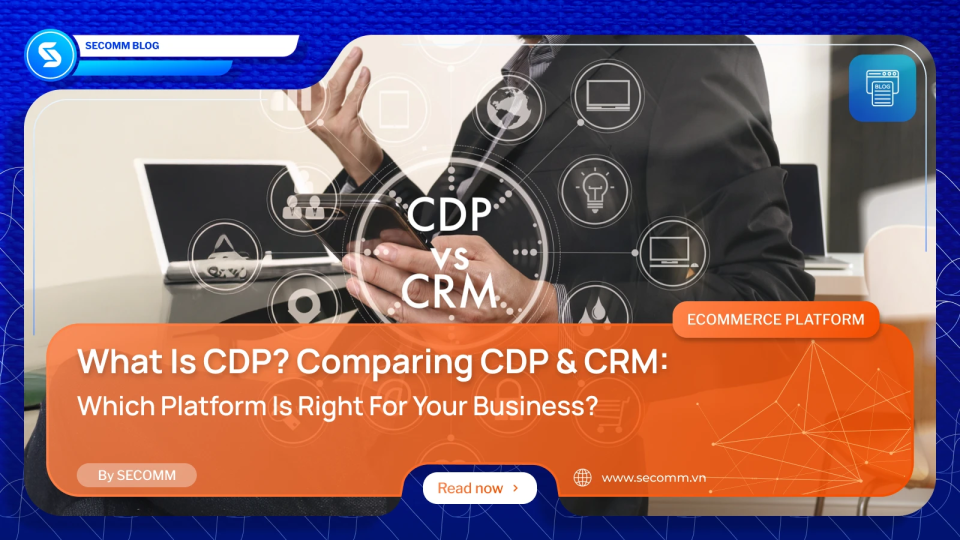
According to research by Harvard Business Review, only 15% of professionals feel they have a comprehensive view of their customer data, making it extremely challenging to create effective online experiences. A common problem is data silos existing between Sales, Marketing, Customer Service, and Product teams. Today, this issue can be resolved with a CDP. So, what is a CDP? How does it differ from CRM, and which platform suits your business best?
A Customer Data Platform (CDP) is a customer data management system that collects, unifies, and analyzes data from various sources such as websites, mobile apps, social media, CRM systems, and point-of-sale (POS) systems. CDPs enable businesses to create a comprehensive 360-degree customer profile, providing a full view of the customer journey and allowing for personalized experiences at every touchpoint.
Unlike isolated storage systems, a CDP automatically gathers, cleanses, and synchronizes first-party data (directly owned by the business) in real-time, creating a solid foundation for data analysis and marketing automation.
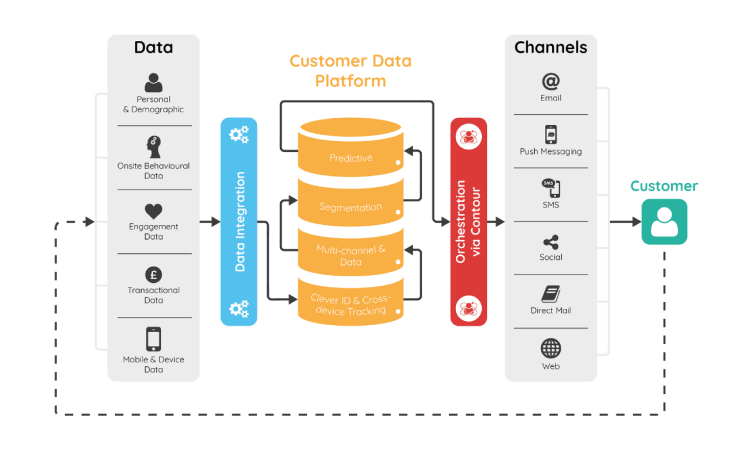
By adopting a CDP, businesses gain numerous advantages:
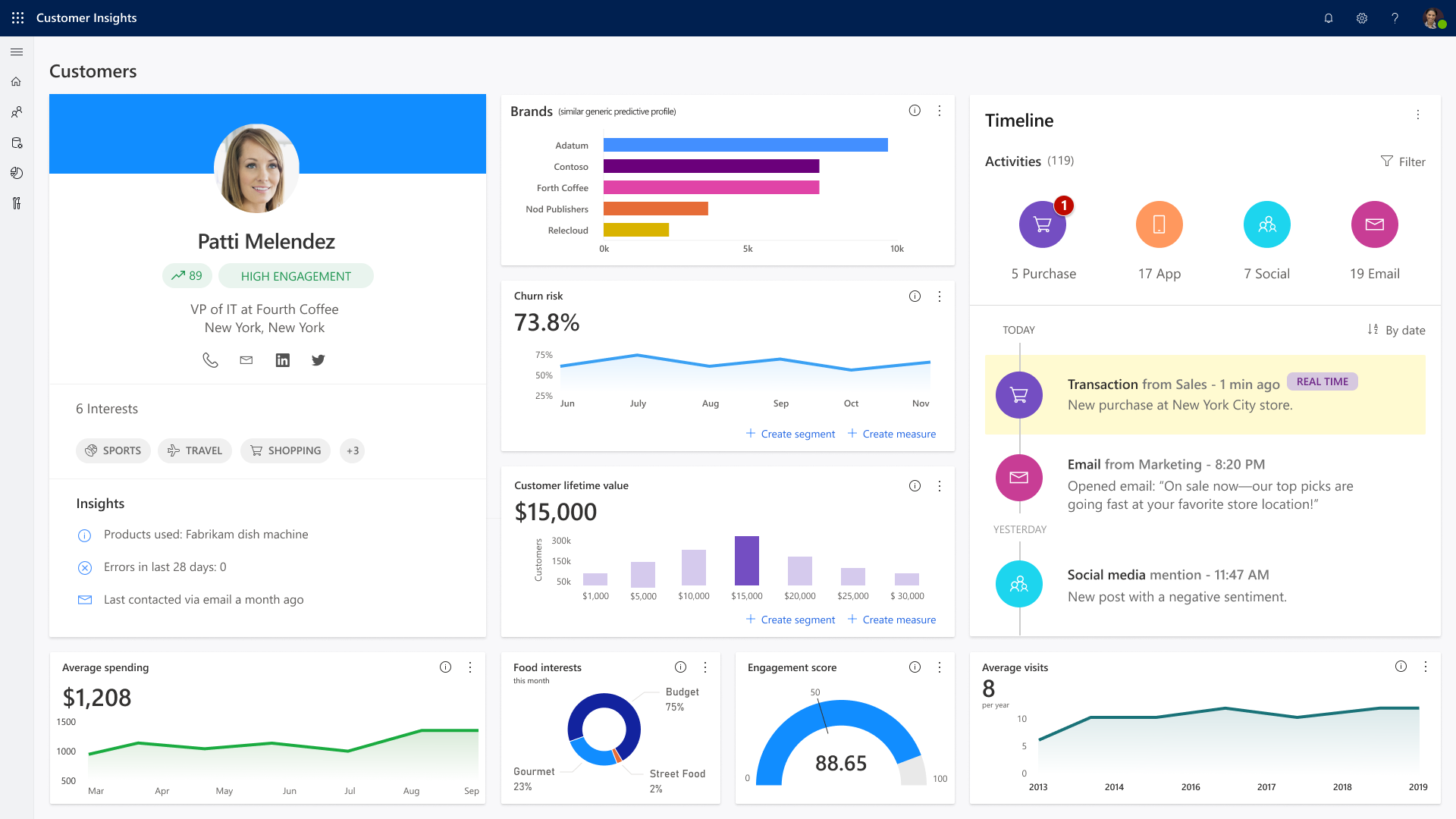
CDPs are ideal for medium to large businesses that pursue customer-centric strategies or are undergoing digital transformation.
Specifically:
Personalized Multichannel Marketing Campaigns
An eCommerce company uses a CDP to gather customer behavior data from its website, social media, email, and mobile app. When a customer frequently searches for sports products, the CDP automatically segments them and sends personalized email recommendations and timely promotions, delivers relevant content on Facebook, and displays personalized banners during website visits. This leads to significantly higher conversion rates and sales across marketing channels.
Optimizing Sales Processes and Upselling
Sales teams access consolidated CDP data: purchase history, interaction frequency, product search behavior to identify prospects likely to buy during weekends. The system can send short-term offers or related product promotions, increasing upsell and cross-sell opportunities.
Customer Journey Coordination and Performance Measurement
CDPs help marketers design seamless customer journeys from discovery to purchase and post-sale care. Businesses can identify and act on customers’ “golden moments” (e.g., purchase decisions triggered by free shipping vouchers). Detailed reports on conversion rates, average order value (AOV), customer acquisition cost (CAC), and effective customer segments optimize marketing strategy and budget.
Customer Relationship Management (CRM) software or solutions help businesses store, organize, and manage contact information and interaction histories with customers, potential clients, and current clients. CRMs track calls, emails, appointments, transactions, and service feedback and automate many sales and customer service processes. This supports improving customer experience, increasing revenue, and better customer retention.
Read more: https://secomm.vn/what-is-crm-top-5-benefits-of-using-crm-software/
| Criteria | CDP | CRM |
| Primary Purpose | Unified, analytical, and personalized multi-channel data | Manage relationships, communication history, and customer care |
| Data Type | Multi-source first-party data (behavior, transactions, journey, profiles) | Communication, existing transaction data with identified customers |
| 360° Customer Profile | Yes | Incomplete |
| Data Update Frequency | Automatic, real-time | Mainly manual or semi-automated |
| Main Use Cases | Customer insight, experience personalization, marketing optimization | Sales management, customer support, pipeline tracking |
| Primary Users | Marketing, data analysis, customer development strategy | Sales, customer service, relationship management |
In today’s competitive market, delivering a personalized customer experience is no longer optional; it’s a key driver for optimizing marketing efforts and accelerating business growth. Whether you choose a CDP or a CRM platform, selecting the right solution for your specific business needs is essential to improving operational efficiency and customer engagement.
If you’re looking for a trusted partner to help you implement, operate, and optimize your eCommerce ecosystem, don’t hesitate to reach out to SECOMM. We’re here to support you with expert guidance and tailored solutions to power your long-term growth.
 What is a CDP and how does it work?
What is a CDP and how does it work? What’s the main difference between CDP and CRM?
What’s the main difference between CDP and CRM? Which businesses should use a CDP?
Which businesses should use a CDP? Is CDP implementation complex and what is needed?
Is CDP implementation complex and what is needed? Does CDP guarantee increased leads or revenue?
Does CDP guarantee increased leads or revenue? Is the data stored on a CDP secure?
Is the data stored on a CDP secure? 57
57
 5,845
5,845
 1
1
 32
32
Vietnam’s eCommerce market is growing rapidly, driven by the rising demand for digitalization and automation among both local and international businesses. Along with this trend, many Vietnamese eCommerce Development companies have emerged as strategic partners in eCommerce platform development, offering end-to-end solutions from consulting and system development to operations and marketing. Below is a list of the top 10 leading eCommerce solution providers in Vietnam for 2025.

SECOMM is a full-service provider of eCommerce solutions, developing bespoke suits that work in any complex system. With deep expertise across B2B and B2C sectors, SECOMM helps brands build scalable, conversion-focused platforms on Magento, Shopify, Headless Commerce, and more. Their services deliver full-circle ecommerce solutions from initial consulting to complete product deployment.
What sets SECOMM apart is their commitment to agile execution, dedicated development teams, and a strong client-centric approach. Trusted by leading enterprises like Changi Airport Group, Vinamilk, Annam Group, Landnow, Suzuverse, My Market,… which across Vietnam, Singapore, Australia, and beyond.
Key Services:
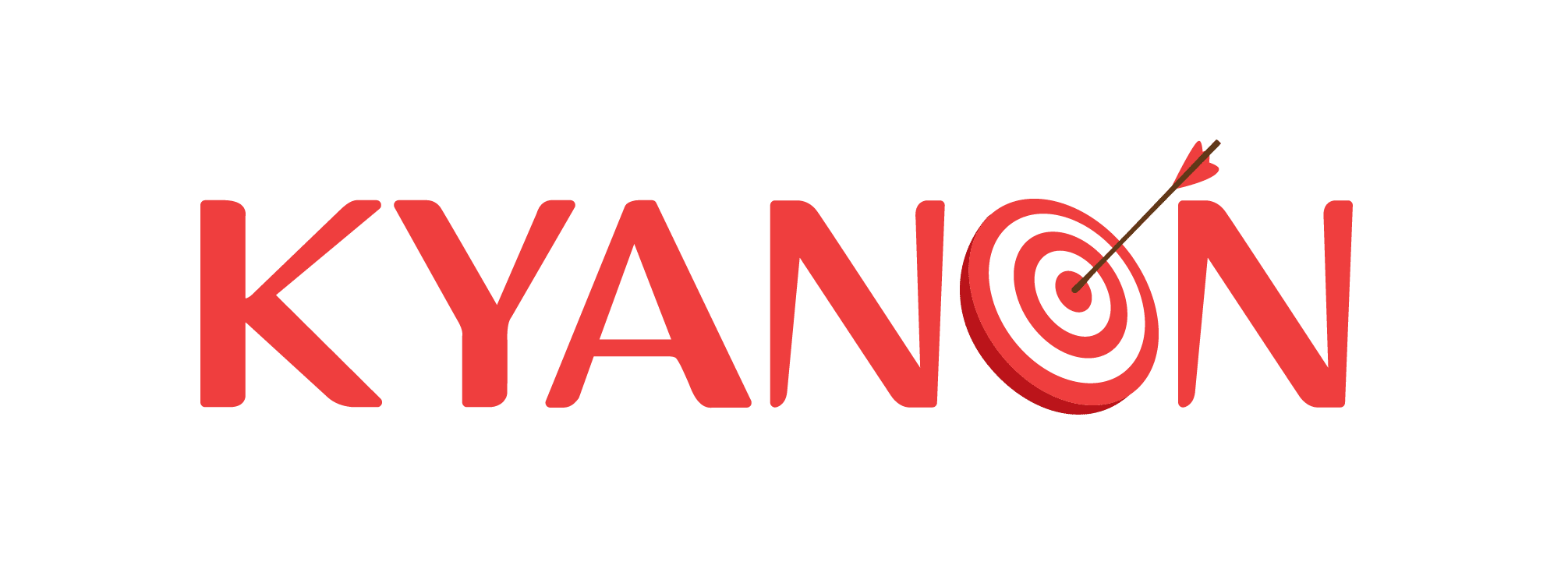
Kyanon Digital a digital transformation solution consulting and implementation company, especially solutions related to e-commerce and omnichannel experience platform. With an experienced team, Kyanon Digital is gradually becoming a reliable tech partner of many large retail corporations in the region from consulting on digital transformation models, choosing and implementing appropriate technology solutions to e-commerce logistics operations. In addition, Kyanon Digital is also chosen to be a strategic partner of many international technology companies in the same field.
Key services:

Magenest is one of Vietnam’s most recognized eCommerce solution providers, focusing on digital transformation and enterprise integration. As an official Adobe (Magento) and Odoo partner, Magenest helps global brands build scalable, secure, and data-driven eCommerce systems. Magenest stands out for its holistic approach, bridging the gap between technology, operations, and marketing for medium to large enterprises.
Key Services:

BSS Commerce is a powerhouse in the Magento ecosystem, offering a full suite of B2B extensions, custom development, and integration services. With years of experience serving international clients, BSS Commerce is known for delivering highly functional and scalable B2B commerce systems. Their B2B suite for Magento is widely adopted by enterprises seeking to enhance their online business workflows and customer experience.
Key Services:
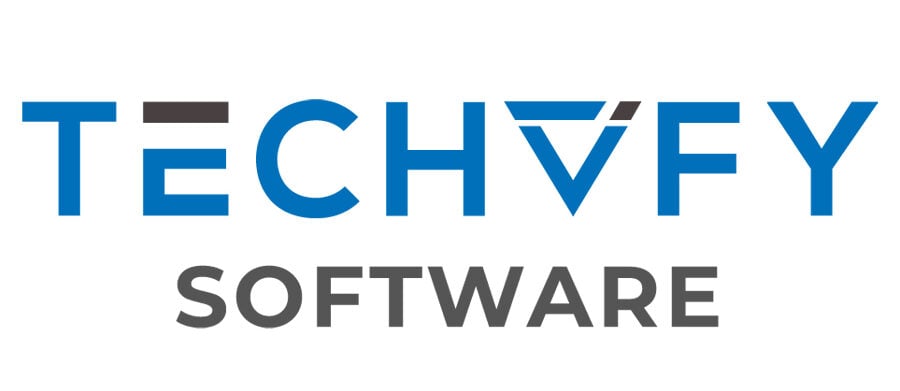
TECHVIFY Software is a rapidly growing software development company providing custom eCommerce, web, and mobile solutions for global clients. Their strength lies in combining cutting-edge technologies with an agile development approach. TECHVIFY’s solutions are tailored for scalability, enabling businesses to optimize efficiency while enhancing user engagement.
Key Services:

Part of CMC Corporation, one of Vietnam’s largest IT groups, CMC Software Solution provides enterprise-grade digital transformation and eCommerce services. Their expertise covers complex system integration and high-level cybersecurity. CMC’s ability to integrate technology into large organizations makes them a preferred partner for enterprises transitioning into digital commerce.
Key Services:

Founded in 2006, SmartOSC is an award-winning eCommerce agency with a global presence across Asia, Europe, and the U.S. They provide comprehensive digital commerce services that help brands scale internationally. SmartOSC is trusted by major global brands for its technical excellence, customer-centric approach, and strategic execution.
Key Services:

OnPoint is Vietnam’s leading eCommerce enabler, helping brands manage and grow their online presence across multiple marketplaces and platforms. Unlike pure tech developers, OnPoint provides full eCommerce operation services tailored for B2B and B2C brands. With a strong local market presence, OnPoint enables global and domestic brands to succeed in Vietnam’s fast-growing eCommerce landscape.
Key Services:
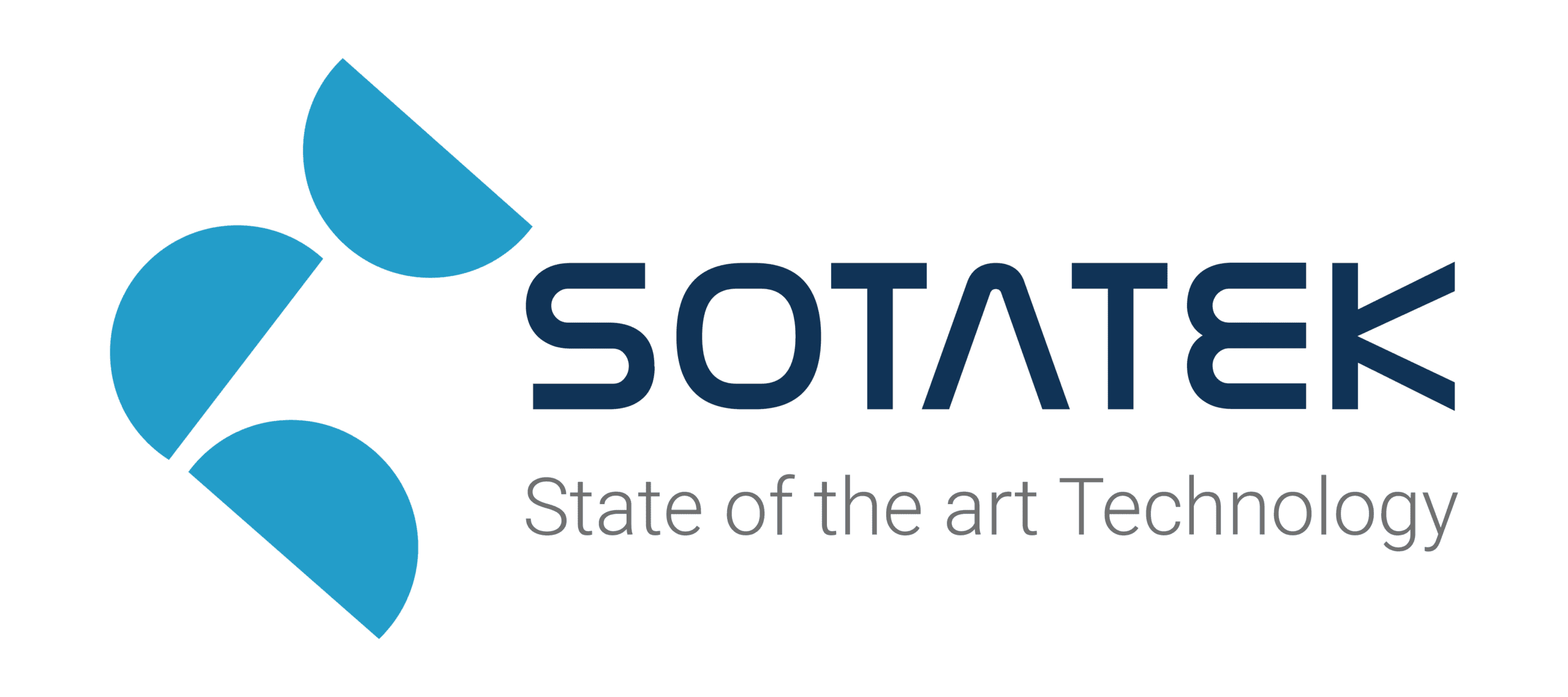
SotaTek is a global software development company offering blockchain, web, and eCommerce solutions. Their development team delivers tailored B2B commerce platforms powered by modern technologies. SotaTek’s versatility and deep tech expertise make it a solid partner for businesses looking to build advanced, future-ready eCommerce ecosystems.
Key Services:

Tigren is a specialized Magento development company with extensive experience in B2B and B2C eCommerce solutions. Known for its cost-effective and high-quality services, Tigren caters to clients worldwide. Tigren’s focus on performance and usability makes it ideal for businesses seeking reliable and affordable Magento-based eCommerce solutions.
Key Services:
Vietnam’s eCommerce industry is entering a booming phase, marked by the rise of reputable technology companies with international standards. Companies like SECOMM, SmartOSC, Magenest, BSS Commerce, TECHVIFY, and Kyanon Digital not only empower businesses to build robust eCommerce platforms but also accompany them on their journey of digital transformation, market expansion, and customer experience enhancement.
If your business is looking to develop a fully optimized eCommerce system tailored to your needs, don’t hesitate to contact SECOMM, our team is always ready to support you every step of the way.
 2
2
 658
658
 0
0
 1
1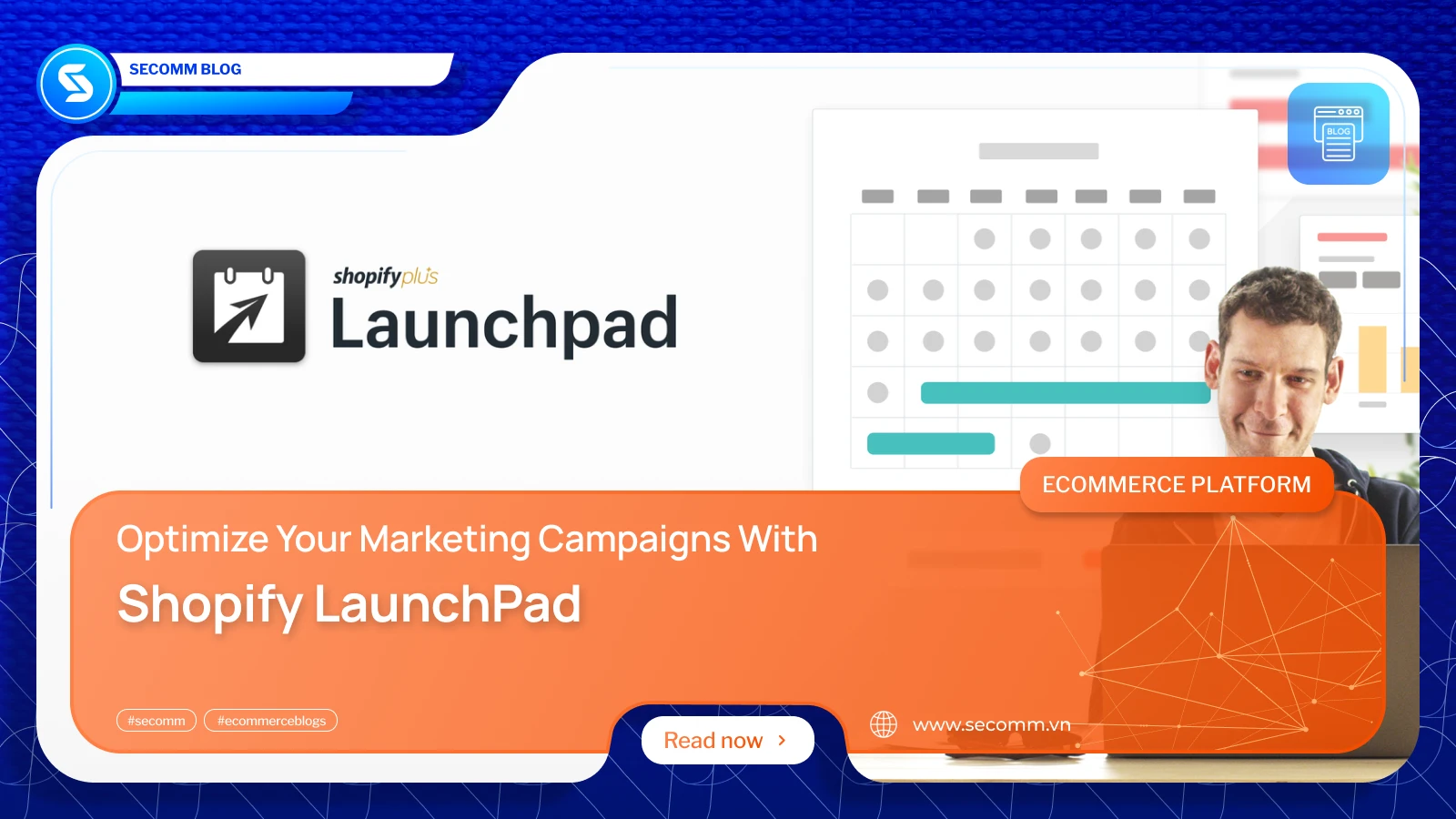
In today’s eCommerce world, staying ahead of the competition requires not only a great product but also effective tools to manage and optimize your store’s operations. Shopify, one of the leading eCommerce platforms, offers a variety of features designed to help businesses thrive. Among these is Shopify LaunchPad, a powerful tool aimed at automating and streamlining promotional events.
In this blog post, we’ll dive into what Shopify LaunchPad is, how it works, and the key features that make it a valuable asset for online store owners. We’ll also explore the benefits and drawbacks of using this tool, helping you decide if it’s the right fit for your business needs. Whether you’re planning a major sale, a product launch, or a special campaign, understanding the capabilities of Shopify LaunchPad can help you execute your strategies more efficiently and effectively.
Shopify LaunchPad is a specialized feature within the Shopify platform designed to facilitate the management and execution of promotional events for e-commerce businesses. It serves as a comprehensive toolset that allows store owners to automate the setup, scheduling, and execution of events such as product launches, flash sales, and holiday promotions.
Essentially, Shopify LaunchPad enables businesses to plan and implement their marketing strategies more efficiently by automating repetitive tasks and ensuring timely execution of events, thereby enhancing overall store management and customer engagement.
There are two common ways to utilize Shopify LaunchPad. One is creating new events, another is modifying the existing events. Let’s break it down:
To create a new LaunchPad event, you’ll follow these steps:
To modifying the existing LaunchPad events, you’ll need to:
Navigate to the LaunchPad events section in your Shopify dashboard.
Shopify LaunchPad offers a comprehensive suite of features designed to enhance the management and execution of promotional events for eCommerce businesses.
Automated Event Scheduling: LaunchPad automates the activation and deactivation of events based on preset start and end dates, eliminating the need for manual intervention and ensuring timely execution of promotional campaigns.
Event Customization: Businesses can extensively customize their promotional events within LaunchPad. This includes defining event types such as sales, product launches, or holiday promotions, setting specific start and end dates (including time zones for global campaigns), configuring discounts (whether percentage-based or fixed amounts), excluding certain products or collections, and customizing promotional messaging and banners to align with branding strategies.
Integration Capabilities: Shopify LaunchPad seamlessly integrates with other Shopify features and third-party apps. It syncs with Shopify’s inventory management to ensure accurate stock availability during promotions, integrates with email marketing tools for targeted promotional campaigns, and connects with analytics platforms to track campaign performance and customer behavior.
Performance Analytics: The platform provides robust analytics and reporting capabilities, offering insights into event performance metrics such as total revenue generated, units sold, average order value, click-through rates, conversion rates, customer acquisition cost, top-performing products, best-selling categories, and geographic sales distribution. This data empowers businesses to make data-driven decisions to optimize future promotions and marketing strategies.
Using Shopify LaunchPad offers several key benefits for eCommerce businesses:
Time-saving through automation: Shopify LaunchPad automates the entire process of setting up and managing promotional events. This includes scheduling events to start and end at specific times, activating discounts or special offers automatically, and deactivating them once the event concludes. By automating these tasks, businesses can save significant time that would otherwise be spent manually coordinating promotions.
Improved sales management: By automating event activation and deactivation, LaunchPad ensures precise control over sales periods, product launches, and promotional campaigns. Businesses can schedule events in advance, allowing for strategic planning and coordination across different channels. This capability not only improves the efficiency of sales management but also enhances the effectiveness of promotional efforts by ensuring timely execution and optimized sales strategies.
Enhanced customer experience: Streamlined and well-managed promotional events contribute directly to a better shopping experience for customers. With LaunchPad, businesses can communicate promotions clearly and effectively to their audience, reducing confusion and improving transparency. Timely execution of promotions also enhances customer satisfaction by delivering on expectations and providing a seamless shopping experience.
Reach new potential customers: Shopify LaunchPad is instrumental in helping businesses reach new audiences and expand their customer base. Whether through targeted promotions, cross-channel campaigns, or innovative marketing strategies, LaunchPad enables businesses to attract and engage with new potential customers effectively.
While Shopify LaunchPad offers significant benefits, it also has certain limitations that businesses should consider:
Dependence on Proper Setup: The effectiveness of LaunchPad heavily relies on the accurate setup of events, including dates, discounts, and promotional content. Improper configuration or oversight in setup can lead to inconsistencies in promotions or missed opportunities to maximize sales.
Analytics and Reporting Depth: While LaunchPad provides basic analytics and reporting on event performance, businesses looking for advanced analytics capabilities or deeper insights may find the built-in features somewhat limited. Integrating with external analytics tools may be necessary for more comprehensive data analysis.

Cheak, an innovative sportswear brand, leveraged Shopify LaunchPad to streamline its product launches and manage seasonal sales effectively. By scheduling product releases and flash sales in advance, Cheak was able to create buzz and anticipation among its customer base. The automation provided by LaunchPad ensured that promotions started and ended precisely as planned, enhancing the overall shopping experience and boosting sales during peak periods. By using Shopify LaunchPad, Cheak increased 20% month-on-month growth in online store traffic, 100% month-on-month rise in Malaysian expansion store visits, and reduced product launch time, from 1 week to 2 days.
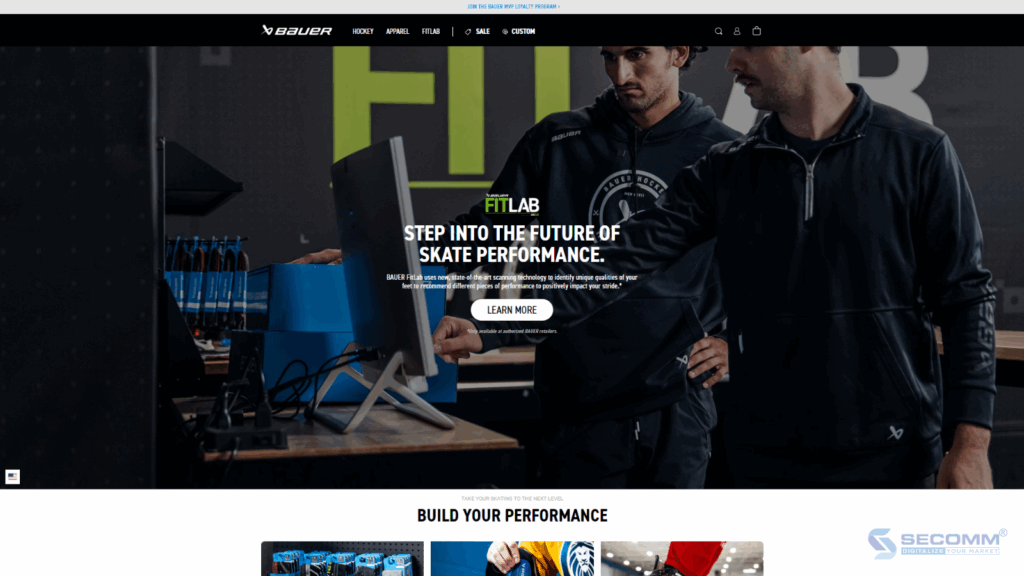
Bauer, a renowned hockey equipment manufacturer, used Shopify LaunchPad after re-platform from Salesforce Commerce Cloud to coordinate large-scale promotional events across multiple regions. By utilizing LaunchPad’s scheduling and automation features, Bauer was able to synchronize discounts and special offers for major events like Black Friday and Cyber Monday. This approach not only simplified the management of these complex campaigns but also maximized their impact, resulting in significant increases in both online traffic and sales.
Shopify Plus and the LaunchPad feature has helped Bauer with 60% revenue increase, 30% order increase, 20% cost savings, 18% conversion rate increase since moving to Shopify, within 6 months year-over-year.
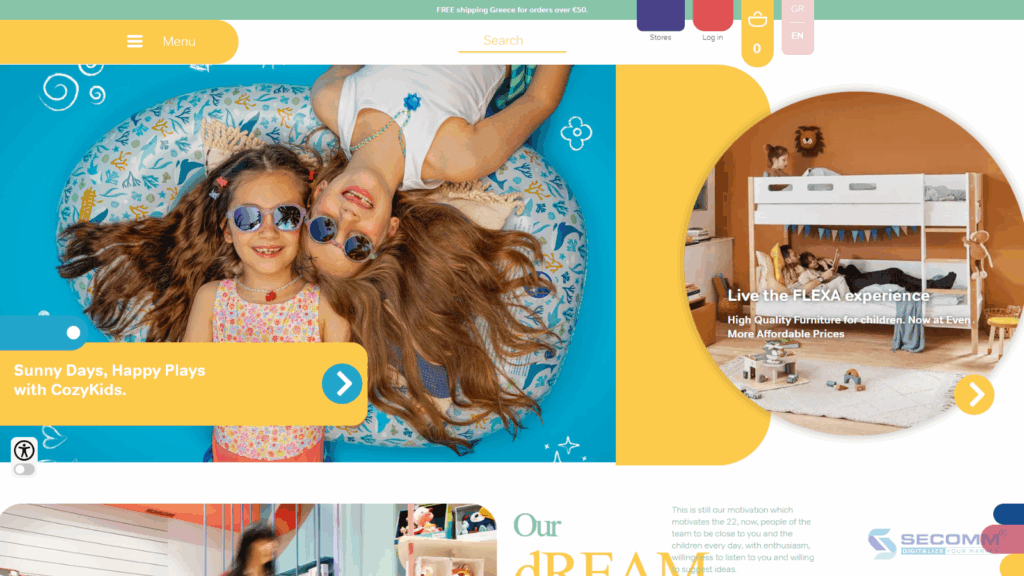
Cozykids, a popular children’s clothing retailer, implemented Shopify LaunchPad to manage its frequent sales and special promotions. The brand utilized LaunchPad to automate discount application and promotional messaging, ensuring a seamless and consistent customer experience. With LaunchPad, Cozykids could easily modify ongoing events and respond quickly to market trends, leading to improved customer engagement and satisfaction. By using LaunchPad, Cozykids has seen: 40% site traffic increased, 82% revenue increased, human error reduced and stock management efficiency increased.
Shopify LaunchPad is a powerful tool that can transform the way eCommerce businesses manage and execute promotional events. By automating event scheduling, enhancing sales management, and improving customer experiences, LaunchPad offers significant benefits. However, it also has limitations that businesses need to consider. Real-world examples like Cheak, Bauer, and Cozykids showcase its potential to drive sales and engagement effectively. Overall, Shopify LaunchPad is a valuable asset for any eCommerce store looking to streamline its promotional strategies and achieve better results.
Want to implement Shopify LaunchPad right now? Contact SECOMM for free consultation!
 113
113
 5,884
5,884
 1
1
 40
40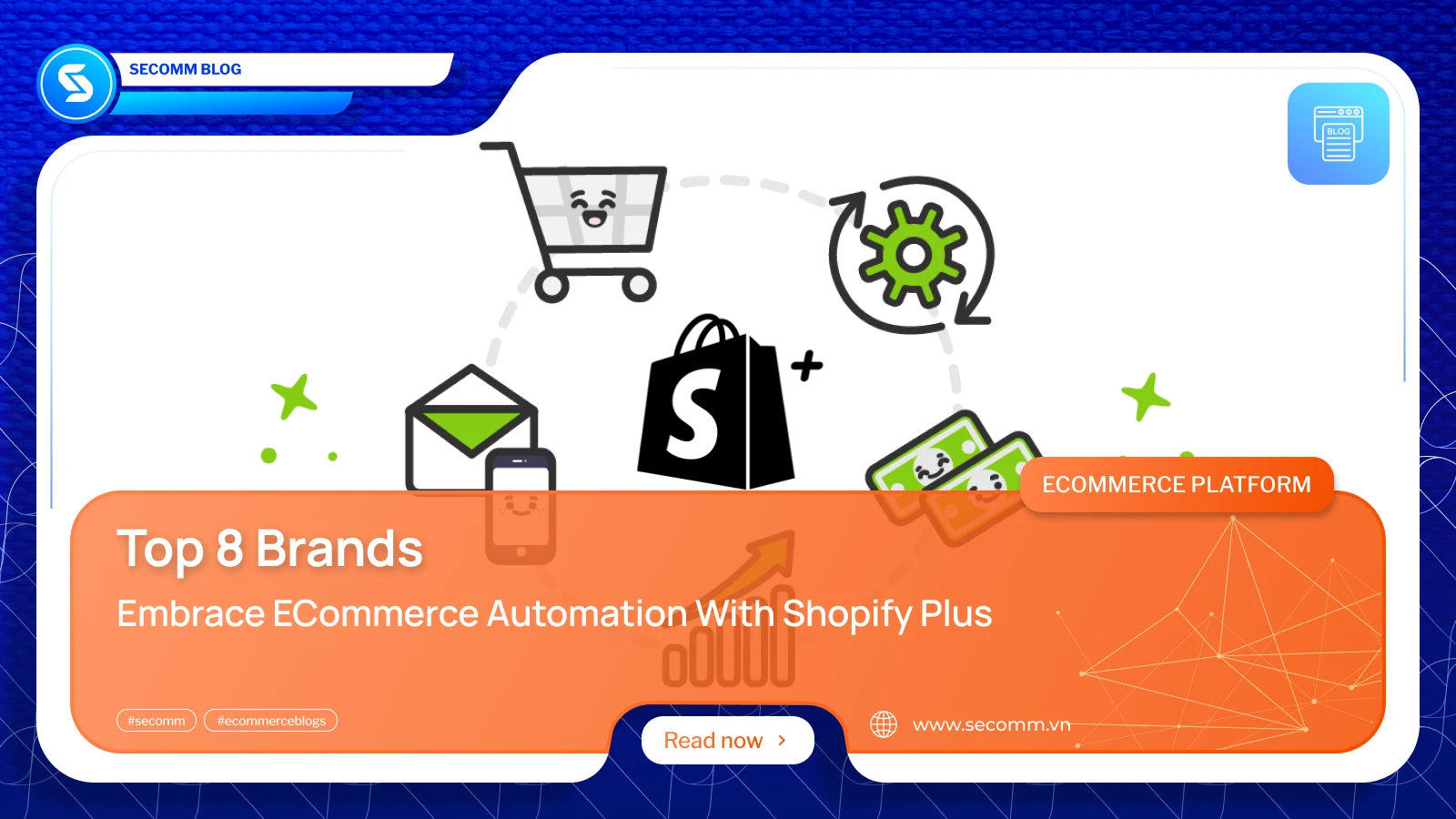
In today’s digital age, eCommerce automation not only helps businesses optimize their sales processes but also creates a seamless shopping experience for customers. Shopify Plus has become one of the most popular SaaS eCommerce platforms, helping both large and small brands automate and enhance their business efficiency. Below is a list of leading brands that have successfully automated their eCommerce with Shopify Plus.

Good American, the renowned fashion brand co-founded by Khloé Kardashian, achieved $1 million in sales on the first day of operating its sales system on the Shopify Plus platform. Building on this success, the brand established multiple automated processes to eliminate manual tasks, allowing its team to focus on providing customers with a rich shopping experience and excellent support services.
Good American utilized Shopify Flow to automatically tag products as “Out of Stock” on their website for items that are sold out and “Low Stock” for items that have reached a certain inventory threshold. This not only improved inventory management but also encouraged customers to purchase items that were running low. Additionally, for out-of-stock products, customers could sign up to be notified when the items were back in stock, helping Good American reclaim potential lost sales.
With Shopify Flow, Good American was able to create nine automated processes in less than a day, significantly contributing to the overall efficiency of their eCommerce operations.

Boody is an Australian brand specializing in eco-friendly clothing, founded in 2012. After operating on the complex Magento platform for several years, the brand decided to switch to Shopify Plus for its specialized solutions and user-friendly interface. This transition allowed Boody to easily customize and provide their customers with a more engaging and seamless online shopping experience while expanding into international markets.
After switching platforms, Boody leveraged Shopify Flow to automate several key eCommerce processes, including order processing, email marketing, payments, and inventory management. This automation enabled Boody’s team to focus more on business strategies and market expansion. As a result, Boody has expanded to 10 different international stores and increased its online revenue share from 0% to 70%.
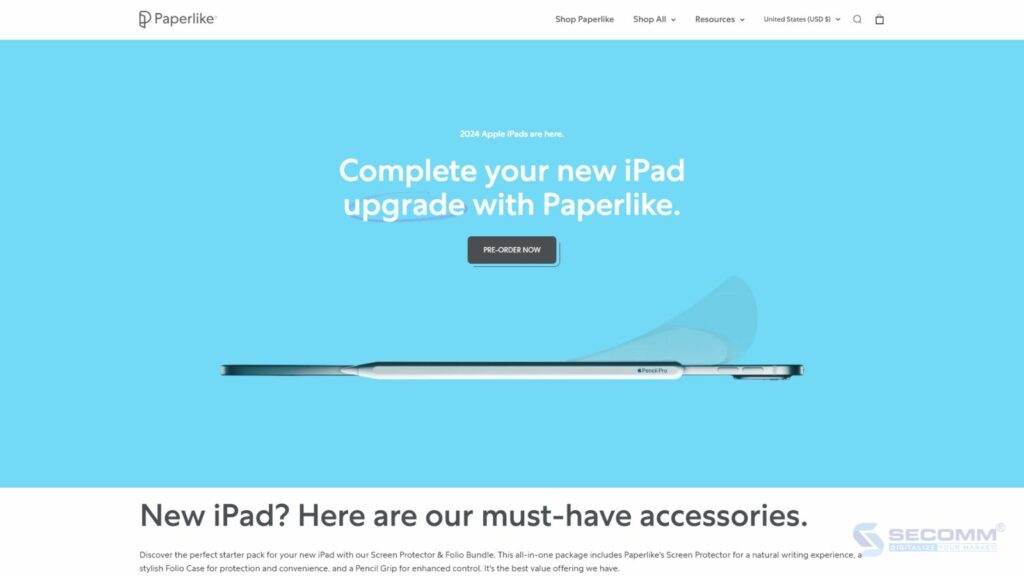
Paperlike is known for producing and supplying accessories for iPads. Given the small team and limited technological resources at Paperlike, operational efficiency is a top priority for their eCommerce activities. After running their eCommerce website on the standard Shopify platform for a long time, Paperlike switched to Shopify Plus to find solutions to handle their increasing sales volume.
Despite having a small team, Paperlike successfully operates their Shopify Plus store thanks to unique automation tools such as Flow, LaunchPad, and Script.
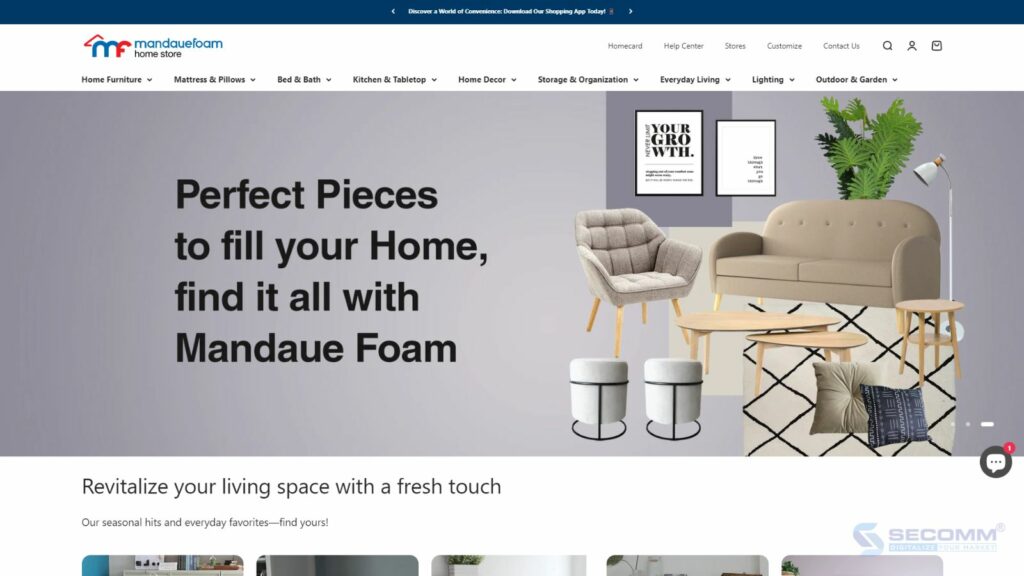
Since its establishment in 1971, Mandaue Foam has become an indispensable name in the furniture industry in the Philippines. After four years of using the standard version of Shopify, Mandaue Foam upgraded to Shopify Plus to seek solutions for expansion and customization.
The brand utilized LaunchPad—a feature exclusive to Shopify Plus—to schedule marketing campaigns and automate product price updates and discounts. Since LaunchPad allows real-time tracking of each campaign’s performance, the Mandaue Foam team could understand customer behavior and adjust their campaigns accordingly.
Additionally, using Shopify Flow, Mandaue Foam automated their order management process. They created a workflow where, once an order is placed, one of their 28 physical locations with inventory for that product is notified to process the order. This ensured swift order fulfillment while eliminating the need for manual order tracking.
The platform switch and the implementation of eCommerce automation helped Mandaue Foam achieve a 200% increase in order volume, a 151% year-over-year increase in total sales, and a 16% increase in customer return rate.
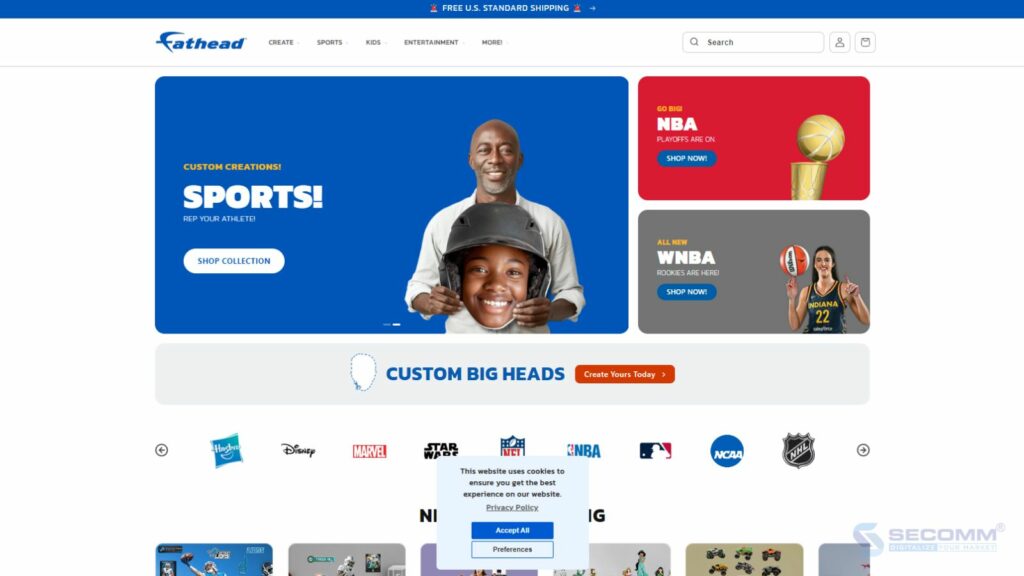
Fathead is a provider of decorative products and decals featuring famous cartoon characters, superstars, and top athletes. The eCommerce system at Fathead encountered numerous issues over time, including frequent errors, poor performance, and time-consuming manual processes.
To address these challenges, Fathead decided to migrate to Shopify Plus for its easy and flexible customization options on a user-friendly interface. Fathead leveraged Shop Pay to simplify the checkout process, providing a streamlined shopping experience and boosting conversion rates. The brand also utilized Shopify Flow to set up multiple automated processes, including optimizing order processing. As a result, Fathead increased average order value by 46%, conversion rates by 10%, and overall revenue by 50%.
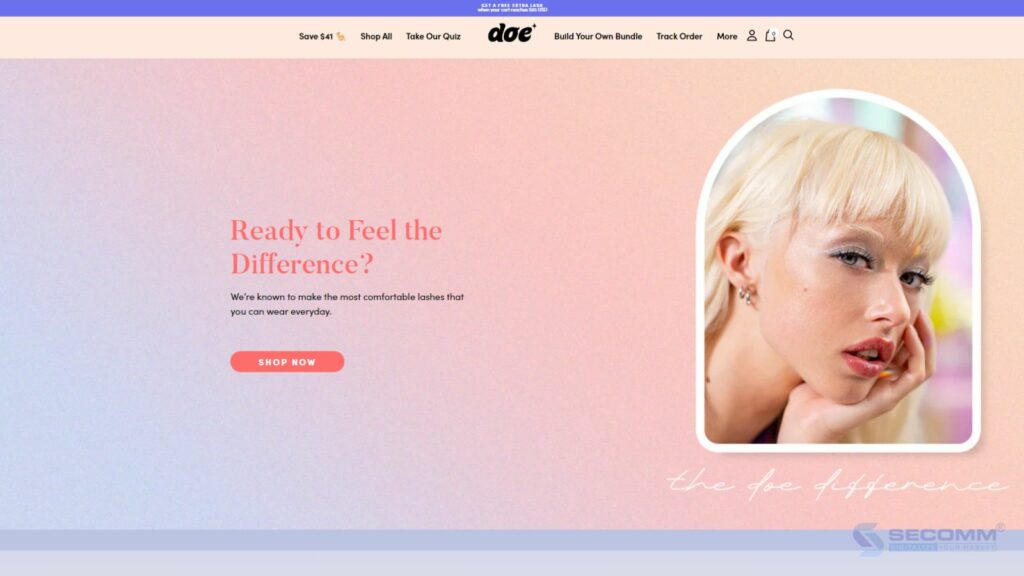
Doe Beauty is a beloved Korean cosmetics brand across Asia. From the early days of eCommerce, Doe Beauty built its website on the Shopify platform. Later, witnessing rapid growth and the need for system expansion, Doe Beauty decided to switch to Shopify Plus. Since then, 80% of the operations on their Shopify Plus store have been automated.
Thanks to Shopify Flow, Doe Beauty’s team can focus on creative and strategic business aspects. The order processing and inventory management are optimized and automatically monitored, enabling faster delivery. As a result, Doe Beauty provides customers with a smooth and convenient shopping experience. E-commerce automation with Shopify Plus has helped the Doe Beauty team save an average of 4 hours and increase the average order value by 5%.

For over 60 years, Jack Rogers’ sandals and shoes have been loved by generations of consumers across the United States. Dissatisfied with their existing eCommerce system, Jack Rogers switched to Shopify Plus. This move provided access to a comprehensive infrastructure and outstanding solutions, optimizing inventory management—a persistent issue for Jack Rogers over the years.
After transitioning to the Shopify Plus store, the brand leveraged Shopify Flow to automate several operational processes, freeing their team from time-consuming manual tasks. The intuitive and user-friendly interface of Shopify Plus allowed the Jack Rogers team to easily add and edit products and categories, set up sales campaigns, and run advertisements. This led to remarkable growth in a short time, with website traffic increasing by over 60% and conversion rates by more than 30%.

Cozykids is a popular destination for children’s products in Greece. The old WordPress-based system at Cozykids faced numerous issues due to manual operations and inadequate performance. As a result, Cozykids switched to Shopify Plus in search of a solution for performance and automation problems.
By using Shopify Flow, Cozykids automated inventory management for out-of-stock and low-stock products, eliminating the need for staff to manually monitor inventory levels. Additionally, Cozykids used Flow to automate customer interactions with out-of-stock products, allowing customers to pre-order at a discounted price and sign up for notifications when the products were back in stock. This automation was particularly important for the marketing team, as it helped them know when to stop promoting low-stock items and focus on other products.
For launching and promoting new products, Cozykids used Shopify LaunchPad to automate these processes. With both Flow and LaunchPad, Cozykids increased eCommerce website traffic by 40% and revenue by 80%. Additionally, the automated processes significantly reduced the time staff spent monitoring inventory levels, decreased errors from manual operations, and enhanced operational efficiency.
eCommerce automation not only helps brands optimize their operational processes but also creates a better shopping experience for customers. The aforementioned brands have successfully used Shopify to enhance business efficiency and build customer trust. Shopify has proven to be a powerful and flexible tool, supporting businesses of all sizes and across various industries.
Need advice on implementing eCommerce automation with Shopify Plus? Contact SECOMM today!
 57
57
 5,887
5,887
 0
0
 32
32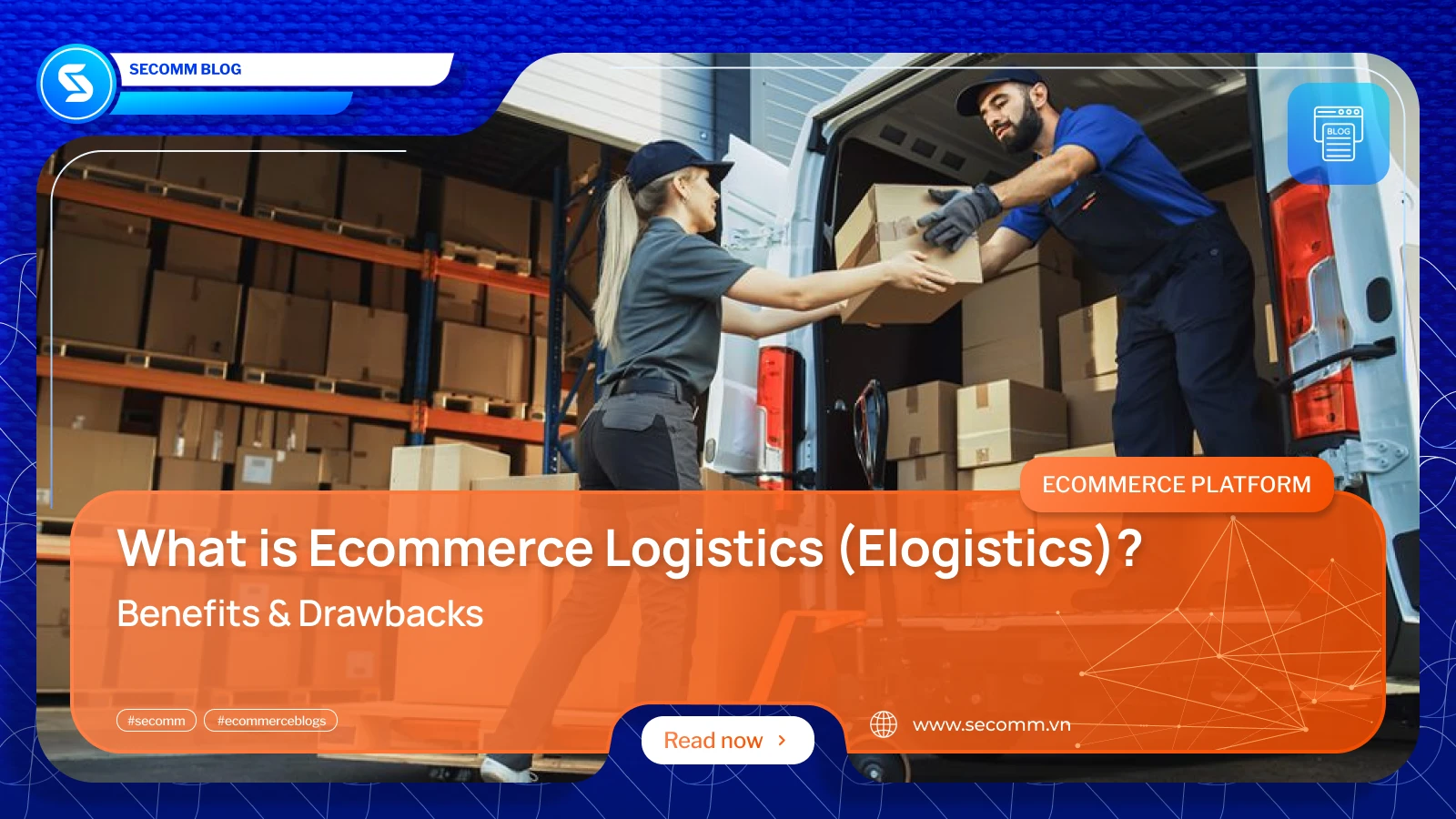
In today’s rapidly evolving digital landscape, eCommerce logistics, or eLogistics, plays a pivotal role in the seamless operation of online retail. It encompasses the intricate processes of managing and delivering goods from suppliers to customers efficiently and effectively. As businesses worldwide increasingly embrace digital platforms for sales, understanding the fundamentals of eCommerce logistics becomes indispensable for optimizing operations and staying competitive in the dynamic marketplace.
ECommerce logistics, often referred to as eLogistics, is the specialized process of managing and fulfilling online orders from the point of sale to delivery to the customer’s doorstep. Unlike traditional logistics, which primarily focuses on moving goods through physical stores or distribution centers, eCommerce logistics is tailored to the unique challenges and opportunities of the online retail environment. It encompasses a range of activities including order processing, inventory management, warehousing, packaging, and transportation logistics. The goal of eCommerce logistics is to ensure that products are delivered to customers swiftly, accurately, and cost-effectively, thereby enhancing customer satisfaction and optimizing operational efficiency for online merchants.
The eLogistics process includes some critical components. They work together to ensure that eCommerce businesses can fulfill orders accurately, efficiently, and on time, thereby meeting customer expectations and enhancing overall operational performance.
Order Processing:
This involves receiving and confirming orders placed on the eCommerce platform. It includes order verification, payment processing, and order entry into the system.
Inventory Management:
Efficient inventory management is crucial to eCommerce logistics. It involves tracking stock levels, monitoring inventory movements, and ensuring accurate stock counts to prevent stockouts or overstock situations.
Warehousing:
eCommerce logistics often utilizes warehouses or fulfillment centers strategically located to facilitate quick order processing and shipping. Warehouses are organized to efficiently store and pick items for orders.
Packaging:
Packaging in eCommerce logistics involves selecting appropriate packaging materials, ensuring products are securely packed to prevent damage during transit, and sometimes includes branding for a positive customer experience.
Shipping and Transportation:
This component includes selecting the optimal shipping method (e.g., ground, air) based on factors like delivery speed and cost-efficiency. It also involves managing logistics partners or carriers for timely delivery.
Returns Management:
Handling returns is a critical aspect of eCommerce logistics. It includes processing returned items, assessing their condition, restocking inventory, and issuing refunds or exchanges as per the company’s policies.
Technology and Integration:
eCommerce logistics relies heavily on technology for automation and integration. This includes using inventory management systems, order management systems, and transportation management systems (TMS) to streamline operations and enhance efficiency.
Customer Service:
While not always considered a logistics component, customer service plays a vital role in eCommerce logistics by managing inquiries related to orders, tracking shipments, and resolving any issues that may arise during the fulfillment process.
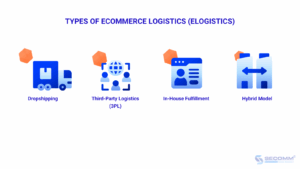
There are 4 common types of eLogistics. Each type of eCommerce logistics has its own advantages and challenges, and the choice depends on factors such as business size, product characteristics, target market, and strategic goals. Selecting the right logistics strategy is crucial for optimizing operational efficiency, enhancing customer satisfaction, and supporting business growth in the competitive eCommerce landscape.
3.1 Dropshipping
Dropshipping is a fulfillment method where the online retailer (the dropshipper) does not keep products in stock. Instead, when a customer places an order, the retailer forwards the order details and shipment instructions to a third-party supplier or manufacturer. The supplier then ships the product directly to the customer.
Dropshipping is advantageous because it eliminates the need for inventory storage and management, reducing upfront costs and risks for the retailer. However, it also means the retailer has less control over fulfillment and may face challenges in maintaining consistent product availability and quality.
3.2 Third-Party Logistics (3PL)
3PL providers offer outsourced logistics and supply chain management services to eCommerce businesses. These providers specialize in warehousing, order fulfillment, inventory management, shipping, and often additional services like reverse logistics (handling returns).
eCommerce businesses can benefit from partnering with a 3PL provider by leveraging their expertise, infrastructure, and established carrier relationships. This can lead to cost savings, improved efficiency in order fulfillment, and scalability as 3PL providers can handle fluctuations in order volume and seasonal peaks. However, businesses must carefully select a 3PL partner that aligns with their specific needs and standards for service quality.
3.3 In-House Fulfillment
In-house fulfillment involves eCommerce businesses managing their own logistics operations internally. This includes setting up and managing warehouses or fulfillment centers, hiring staff for picking, packing, and shipping orders, and overseeing the entire fulfillment process.
In-house fulfillment gives businesses greater control over the entire logistics chain, allowing for customization of processes and direct management of customer interactions. However, it requires significant upfront investment in infrastructure, technology, and manpower, as well as ongoing operational costs. Businesses opting for in-house fulfillment must also ensure they have the capability to handle fluctuations in demand and maintain service levels during peak periods.
3.4 Hybrid Model
Some businesses opt for hybrid logistics models that combine elements of dropshipping, 3PL services, and in-house fulfillment. For example, a business may use dropshipping for certain products or suppliers while managing warehousing and fulfillment for core or high-demand items.
Hybrid models offer flexibility and the ability to tailor logistics strategies to specific product lines or market conditions. However, managing multiple logistics models requires careful coordination and integration to ensure seamless operations and consistent customer experience.
Implementing eLogistics brings your business many benefits. By leveraging these benefits, you optimize the logistics operations to support growth, improve customer experiences, and maintain a competitive position in the online retail market.
Cost Efficiency:
By optimizing processes such as warehousing, inventory management, and shipping, eCommerce logistics helps reduce operational costs. This includes minimizing storage expenses, improving inventory turnover, and leveraging bulk shipping discounts.
Faster Delivery Times:
Efficient eCommerce logistics enable quicker fulfillment and shipping of orders. This not only enhances customer satisfaction but also meets the expectations for fast delivery set by major eCommerce platforms.
Improved Customer Satisfaction:
Timely and accurate order fulfillment contributes to higher customer satisfaction. eCommerce logistics ensure that orders are processed promptly, shipments are tracked effectively, and customers receive their purchases in good condition.
Operational Transparency:
Modern eCommerce logistics systems often include real-time tracking and reporting capabilities. This transparency allows businesses to monitor inventory levels, track shipments, and analyze performance metrics to optimize operations continually.
Integration with Technology:
eCommerce logistics systems integrate with advanced technologies such as automation, AI-driven analytics, and cloud-based platforms. These technologies streamline processes, reduce errors, and enhance overall operational efficiency.
Enhanced Flexibility:
eCommerce logistics provide flexibility in adapting to changing market demands and seasonal fluctuations. Businesses can adjust inventory levels, shipping methods, and distribution strategies dynamically to meet customer needs and market conditions.
Beyond the benefits that eCommerce logistics system can offer, there are some drawbacks to consider before applying logistics to eCommerce
Initial Setup Costs:
Setting up an effective eCommerce logistics system requires significant initial investment in infrastructure, technology, and personnel. This includes costs for warehouses or fulfillment centers, inventory management systems, transportation logistics, and training staff.
Complexity and Integration Challenges:
Integrating various components of eCommerce logistics, such as inventory management, order processing, and shipping systems, can be complex. Ensuring seamless integration often requires technical expertise and may involve compatibility issues with existing systems.
Dependency on Third-Party Providers:
Many eCommerce businesses rely on third-party logistics (3PL) providers for warehousing, fulfillment, and shipping. While this outsourcing can reduce operational burdens, it also introduces dependencies on external partners. Issues like service disruptions, communication gaps, and quality control concerns can arise, affecting overall service reliability.
Logistical Errors and Delays:
Despite technological advancements, logistical errors such as inventory discrepancies, shipping delays, and order inaccuracies can occur. These errors may lead to customer dissatisfaction, increased costs for returns and replacements, and potential damage to brand reputation.
Risk of Data Breaches:
eCommerce logistics involves handling sensitive customer data, including payment information and personal details. Protecting this data from cyber threats and data breaches is crucial but requires robust cybersecurity measures and compliance with data protection regulations.
Environmental Impact: The logistics and transportation involved in eCommerce can have a significant environmental impact, including carbon emissions from shipping vehicles and packaging waste. Implementing sustainable practices, such as optimizing delivery routes and using eco-friendly packaging, can mitigate these effects but may add to operational costs.
Understand Your Requirements:
Begin by assessing your business needs, including order volume, product characteristics, target market locations, and seasonal demand fluctuations. This understanding will guide your logistics strategy and help you choose the most suitable fulfillment model.
Choose the Right Logistics Partners:
Select reliable logistics partners or 3PL providers based on their expertise, track record, scalability, and ability to meet your specific requirements. Conduct thorough due diligence and consider visiting their facilities to ensure they align with your standards.
Invest in Technology:
Implement robust eCommerce and logistics management software that integrates order processing, inventory management, and shipping operations. Automation tools can streamline processes, reduce errors, and improve efficiency in fulfillment and customer service.
Automate Repetitive Tasks:
Implement automation for repetitive tasks such as order processing, inventory updates, and shipment tracking. Use robotic process automation (RPA) or software integrations to streamline workflows and reduce manual errors. Automation not only improves efficiency but also frees up resources to focus on strategic initiatives and customer-centric activities. Regularly review processes to identify opportunities for further automation and integration with your eCommerce platform and logistics systems.
In the rapidly expanding world of eCommerce logistics, several key players stand out for their comprehensive services and innovative approaches. Companies like Amazon Logistics, FedEx Supply Chain, and UPS have reshaped the landscape with their extensive networks and advanced technologies.
Amazon Logistics
Known for its robust fulfillment network, Amazon Logistics leverages cutting-edge technology to offer fast and reliable shipping services to customers worldwide. Amazon’s fulfillment centers are strategically located, facilitating quick delivery times and efficient order processing. Their integration with Amazon Prime ensures premium shipping options and customer loyalty benefits, setting them apart in the eCommerce logistics sphere.
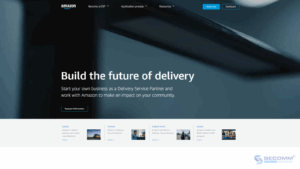
FedEx Supply Chain
FedEx Supply Chain specializes in providing end-to-end supply chain solutions tailored to eCommerce businesses. They offer warehousing, fulfillment, transportation, and reverse logistics services, supported by advanced analytics and technology-driven solutions. FedEx’s global network and commitment to innovation make them a preferred partner for businesses seeking scalable logistics solutions.
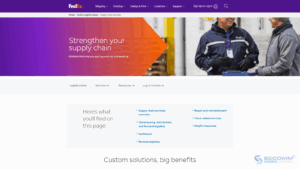
UPS
UPS is renowned for its extensive transportation and logistics capabilities, including parcel delivery, freight forwarding, and supply chain management services. UPS offers customizable logistics solutions designed to optimize efficiency and meet specific business needs. Their focus on sustainability and technological innovation, such as UPS My Choice and advanced tracking systems, enhances transparency and reliability in eCommerce logistics.
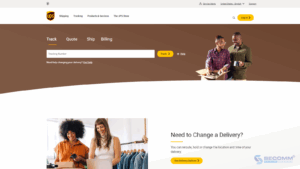
Ecommerce Logistics contributes to the success of online businesses by ensuring efficient order fulfillment, timely delivery, and enhanced customer satisfaction. From managing inventory and processing orders to optimizing shipping routes and leveraging technology, every aspect of eLogistics contributes to operational excellence in the digital marketplace.
A key takeaway from this article is the critical importance of selecting the right logistics partner. By partnering with a logistics provider that aligns with your specific business needs, you can streamline operations, mitigate logistical challenges, and position your eCommerce venture for sustained success.
SECOMM team has extensive experience of eCommerce in many APAC markets like Vietnam, Australia, NewZealand, HongKong and Singapore. We can help you apply logistics to eCommerce, optimize your customer shopping experience, streamline checkout, and more to make your eCommerce empire shine!
Contact us today for free consultation!
 40
40
 5,811
5,811
 0
0
 24
24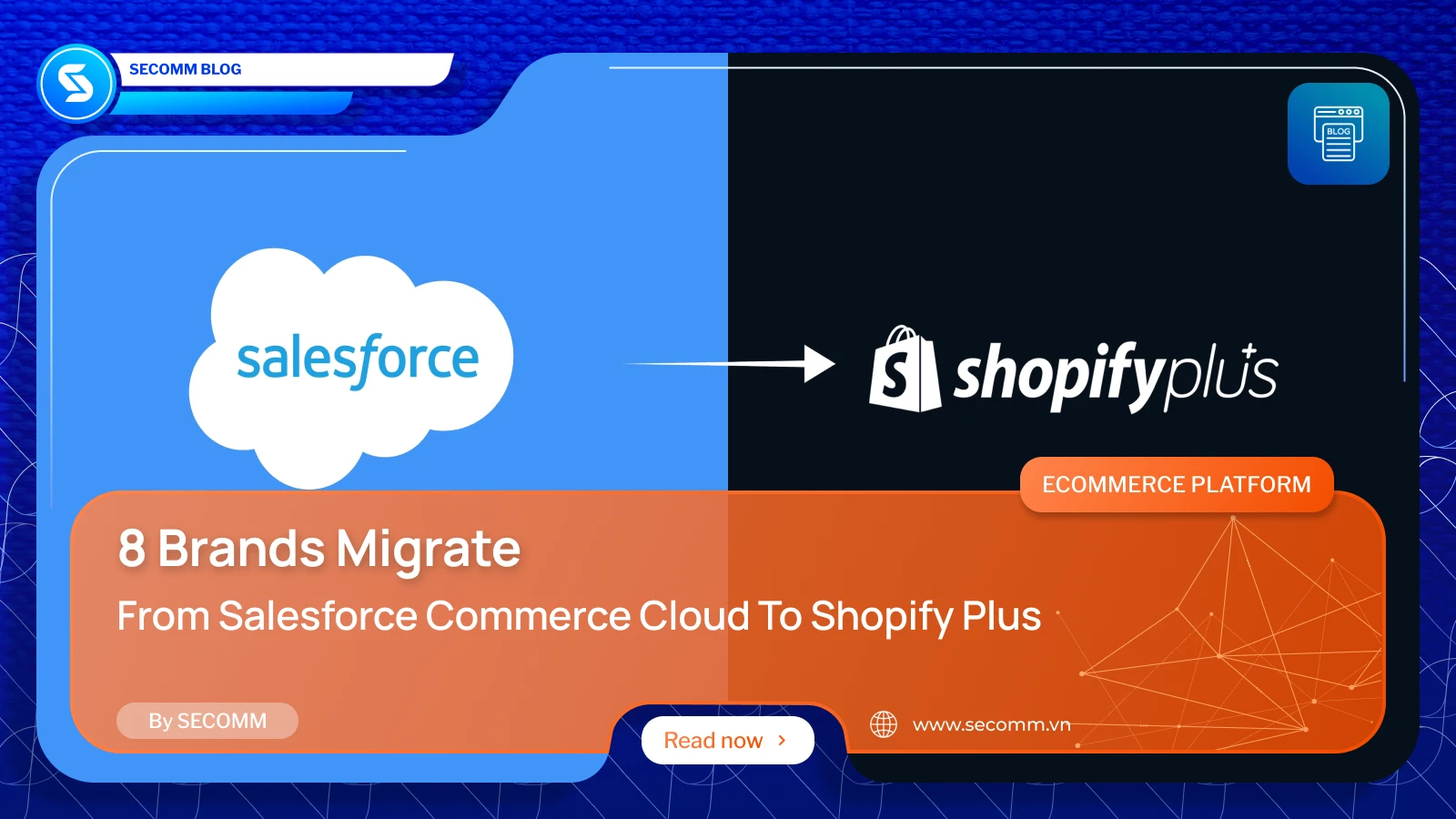
Replatforming is not only a business decision but also creates a leap to help businesses optimize operations and create a competitive advantage in the market. In this article, let’s dive into the journey of 8 iconic brands that have switched platforms from Salesforce Commerce Cloud to Shopify Plus. Not only that, the platform transformation has impacted the development and growth of these brands in the ever-changing eCommerce market.

Established in 1989, famous Italian fashion brand Slam Jam has served many fashionistas around the world. Slam Jam has implemented Omnichannel very successfully on the Shopify Plus platform. However, previously on the Salesforce Commerce Cloud platform, trying to reach an omnichannel approach caused Slam Jam to incur a lot of costs and technical difficulties.
After about a year after transitioning to the Shopify Plus platform, Slam Jam decided to use Shopify POS to increase omnichannel efficiency and build a longer-term omnichannel strategy. This has helped this fashion brand increase its average daily orders by 15%, reducing setup and operating costs by 50%.
Website: https://slamjam.com/
Industry: Fashion
Traffic: 2.3M/month
Rank: #40,182 (USA) & #54,510 (Global)

NYDJ, the fashion brand known for its premium denim and womenswear products, decided to make a big pivot in its eCommerce strategy by migrating from Salesforce Commerce Cloud to Shopify Plus. This decision comes from the desire to optimize the online shopping experience and better meet customer needs.
Migrating to Shopify Plus gave NYDJ access to many unique features and a robust and mature infrastructure for eCommerce growth. This helps NYDJ quickly respond to market changes and expand its business without encountering technical limitations. Thanks to that, NYDJ has enhanced the shopping experience, increased customer satisfaction and promoted sustainable sales growth.
Website: https://nydj.com/
Industry: Fashion
Traffic: 1.5M/month
Rank: #15,226 (USA) & #64,453 (Global)
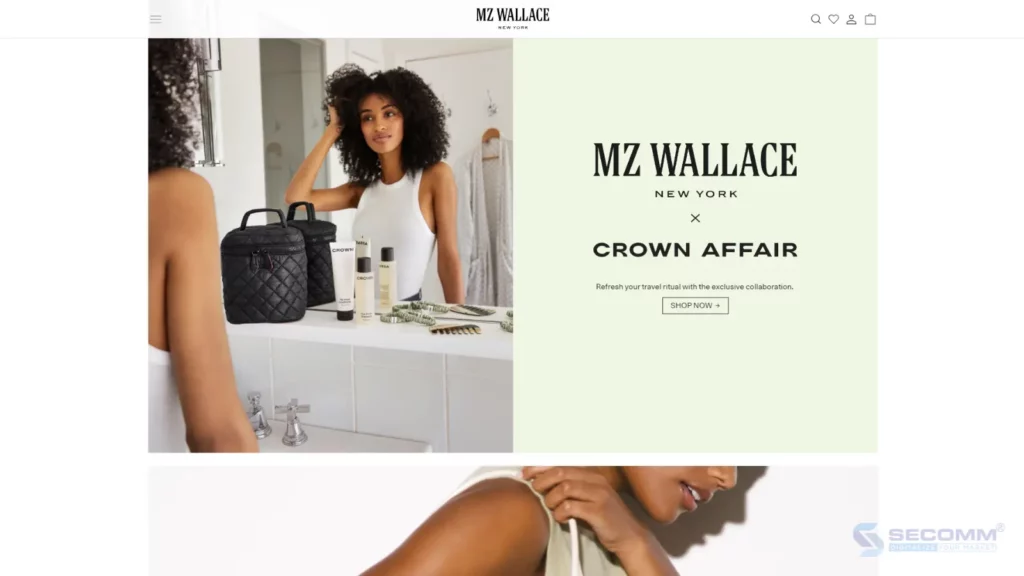
MZ Wallace is a brand famous for its high-end handbags and accessories. After a period of operating the eCommerce system, this brand found that Salesforce Commerce Cloud (SFCC) was difficult to manage as well as development and maintenance costs were quite high, and customizing new features was also difficult. .
After considering many platforms, MZ Wallace decided to switch to Shopify Plus because this solution helps save a lot of development and maintenance costs. As a result, when operating on Shopify Plus, MZ Wallace can customize many new powerful features and functions to optimize operational efficiency. Moving to Shopify Plus freed up time and resources, allowing MZ Wallace to grow quickly and proactively focus on attracting, converting, and retaining customers, rather than overcoming growth and development barriers. budget constraints.
Website: https://www.mzwallace.com/en-vn
Industry: Fashion
Traffic: 1M/month
Rank: #18,292 (USA) & #108,437 (Global)
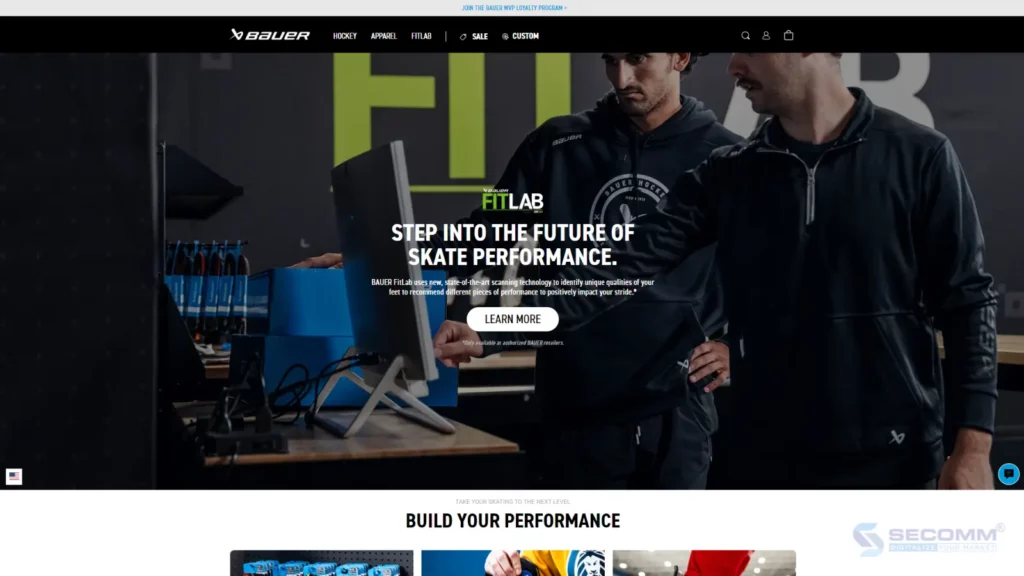
Since its founding in 1927, Bauer has gradually become a tycoon in manufacturing and selling products for the sport of hockey. After operating an eCommerce system on the Salesforce Commerce Cloud platform, Bauer realized they needed more than what their current platform could give them to expand and customize.
With many growth goals such as expanding international markets, customizing hockey warranties, and implementing a loyalty program, Bauer converted to Shopify Plus to find the best solution for its needs. Since moving to Shopify, Bauer has been able to save on technology costs and redirect those dollars toward improvements that drive results for the business. They can also bring new features to market faster than before. Shopify’s checkout feature was also strong for Bauer, especially on mobile, contributing to an 18% increase in conversion rate and 30% increase in orders.
Website: https://www.bauer.com/
Industry: Sport
Traffic: 765,322/month
Rank: #44,392 (USA) & #134,184 (Global)
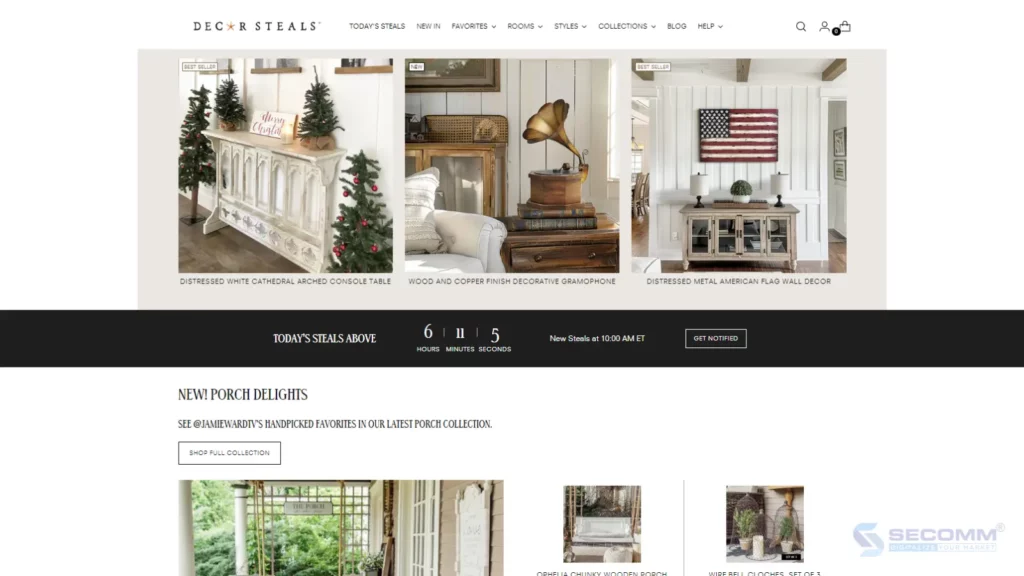
Decor Steals is an online store based in the US specializing in selling home decoration products with a variety of designs, beautiful and on-trend. At 10 am every day, Decor Steals will introduce on the website 3 carefully selected products at affordable prices and will be sold within 24 hours until sold out.
This strategy helps keep inventory flowing and creates an engaging experience for customers looking for decorative items at more accessible prices. At the same time, this helped Decor Steals’ online sales skyrocket and it was time for them to customize more in-depth features and integrate more sales channels, but the current SFCC system did not meet their needs. this bridge. As a result, Decor Steals converted to the Shopify Plus platform and launched the website in less than 6 months.
The brand only has a lean team for operations consisting of an internal manager and several external contractors, which helps them save more than $300,000 in implementation costs compared to operating with Salesforce Commerce Cloud.
Website: https://www.decorsteals.com/
Industry: Home Decor
Traffic: 745,010/month
Rank: #40,759 (USA) & #218,245 (Global)
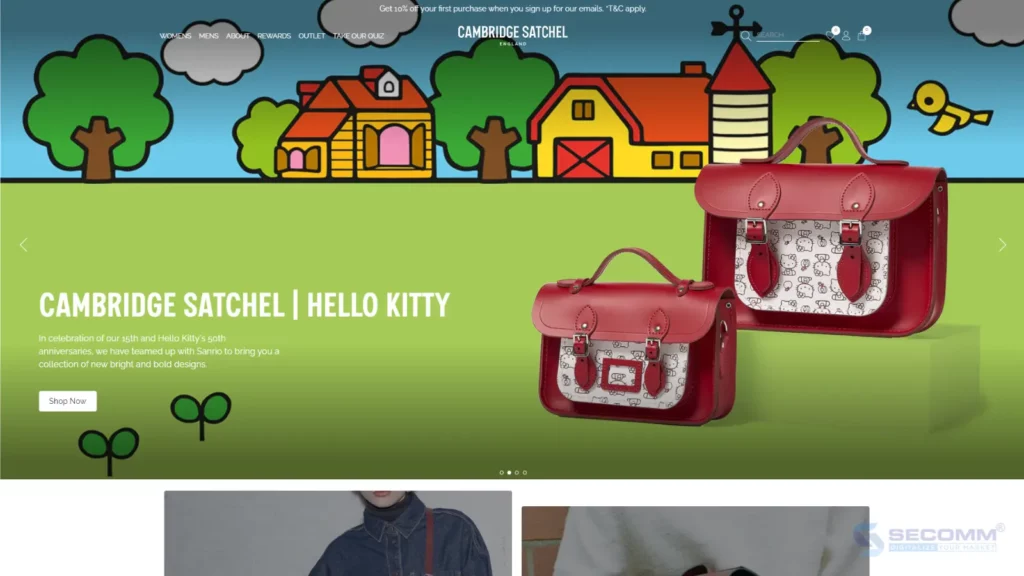
The Cambridge Satchel Company, the prestigious British brand known for its exquisitely crafted leather briefcases, has decided to make a major move by migrating from Salesforce Commerce Cloud to Shopify Plus. The reason is because the company finds that the investment to reach new customers is more than the revenue each new customer brings. As a business that always places its value on product quality and business ethics, The Cambridge Satchel Company fell into a cycle of burning more money on the technology than on the product itself.
Not long after switching to Shopify Plus, technology investment costs were significantly reduced and Satchel’s specialized team could operate well with very little development support from third parties. The Cambridge Satchel Company also uses Shopify to provide AR experiences to customers with the “Try On” feature via smartphones.
Website: https://www.cambridgesatchel.com/
Industry: Fashion
Traffic: 411,724/month
Rank: #143,743 (USA) & #329,411 (Global)
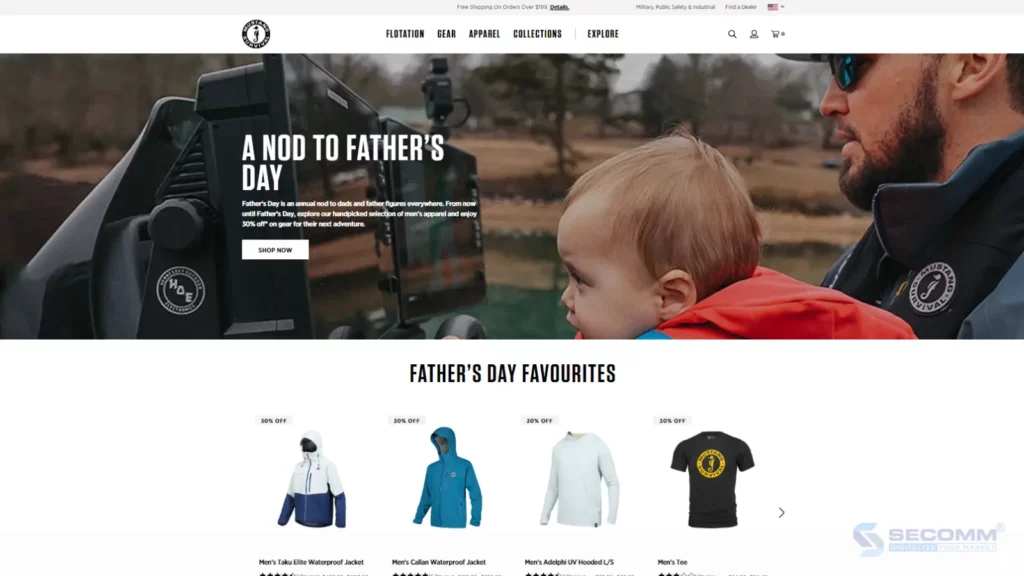
Established in Canada for more than 50 years, Mustang Survival specializes in designing, manufacturing and supplying products for water rescue professionals, military personnel, and water recreation enthusiasts.
As eCommerce websites become the dominant sales channel, gradually replacing the remaining sales channels in their business strategy, Mustang Survival needs a platform that provides a higher level of customization and expansion. As a result, Mustang Survival moved its entire operations from Salesforce Commerce Cloud to Shopify Plus.
The brand quickly took advantage of the platform’s two most cutting-edge automation solutions, Flow and LaunchPad, to save time and costs and increase accuracy and efficiency. This helped Mustang Survival increase conversion rates by 172% and reduce average page load time by 50% in just under 3 months of switching to Shopify Plus.
Website: https://mustangsurvival.com/
Industry: Sport
Traffic: 157,988/month
Rank: #144,575 (Canada) & #626,414 (Global)

Rémy Cointreau is a famous French luxury spirits group, owning more than 14 different brands. But as shopping moved online during the pandemic, traditional in-store and on-premise purchases stagnated – while online deliveries soared. Rémy Cointreau recognized the urgent need to rapidly expand its eCommerce capabilities and continue serving customers online across multiple channels over the long term.
This brand has converted to Shopify Plus and uses the Shopify POS solution, allowing the implementation of an effective sales process on many different channels such as eCommerce websites, traditional stores and direct sales through personal sales managers. This seamless omnichannel approach gives Rémy Cointreau unprecedented flexibility. The platform transformation has helped this giant grow incredibly, and eCommerce operations have become a pillar of Rémy Cointreau’s sales strategy.
Website: https://www.remy-cointreau.com/en/
Industry: Wine & Spirits
Traffic: 50,768/month
Rank: #88,991 (France) & #1,704,449 (Global)
Final Words
The transition from Salesforce Commerce Cloud to Shopify Plus is not only a technological change, but also an important strategy that helps brands like Bauer, Slam Jam, Rémy Cointreau, NYDJ, MZ Wallace, Mustang Survival, Decor Steals and The Cambridge Satchel Company enhance customer experience and optimize business operations. The right choice of foundation not only brings immediate results but also lays a solid foundation for sustainable development and prosperity in the future.
Need advice on switching platforms from Salesforce Commerce Cloud to Shopify Plus? Contact SECOMM now!
 2
2
 5,750
5,750
 1
1
 1
1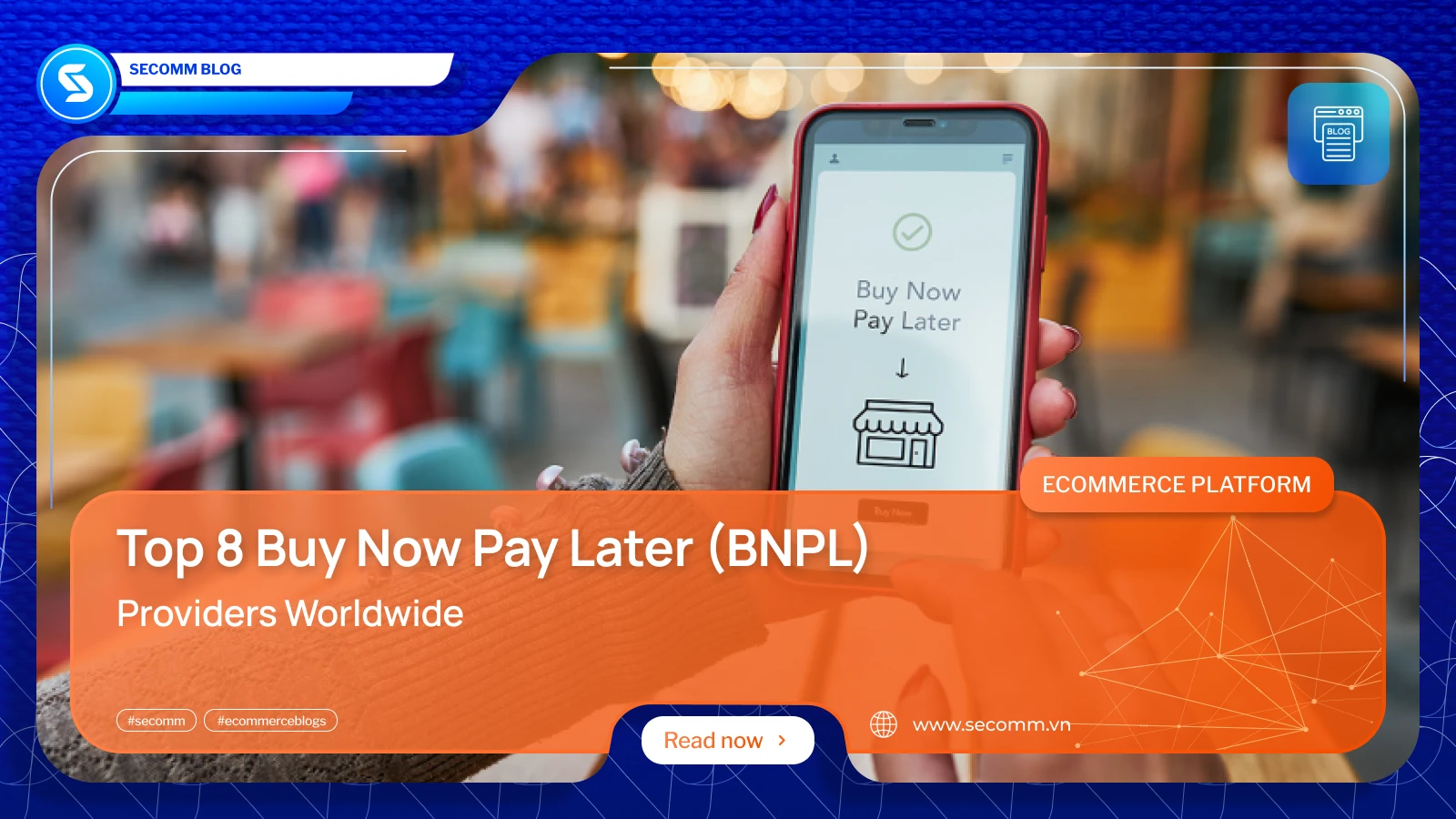
Buy Now Pay Later (BNPL) payment methods have become a global trend, making it easier for consumers to shop without paying the full amount upfront. Below are some of the most famous BNPL providers worldwide.
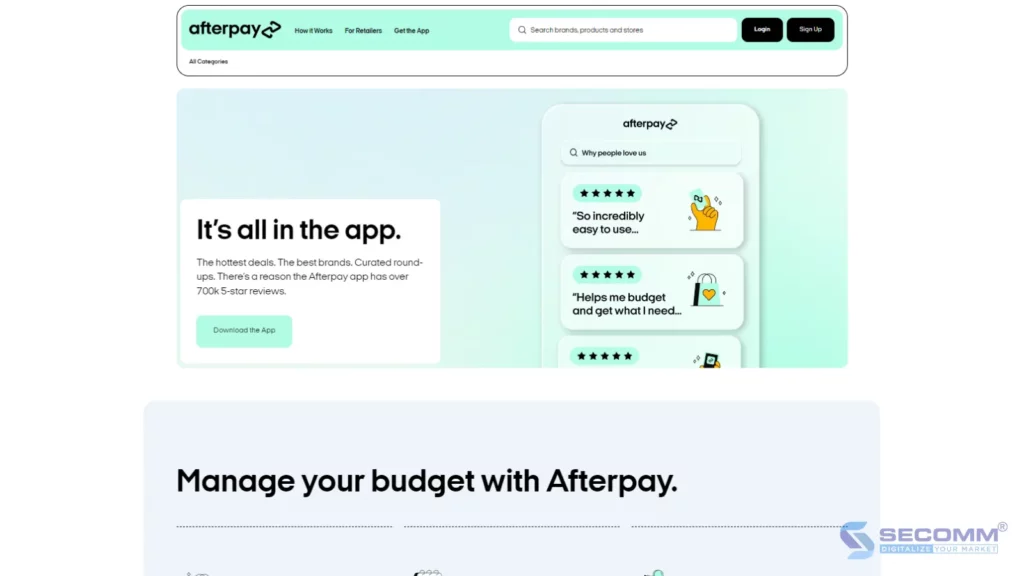
Afterpay is one of the most popular BNPL services globally, especially in Australia, the US, and the UK. Founded in 2014 in Australia, Afterpay quickly expanded to many other markets and became a well-known name in the BNPL industry.
How it works: Afterpay allows consumers to split their payments into four interest-free installments over two weeks. No credit checks are required, and it is easily integrated into many eCommerce websites.
Benefits:
Drawbacks:
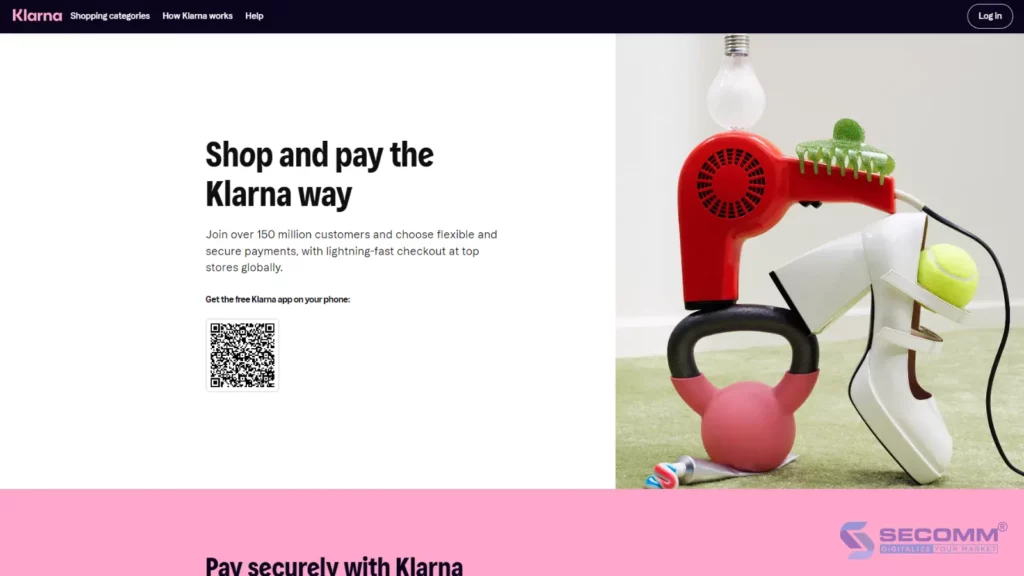
Klarna is a Swedish fintech company providing BNPL services in many European countries and the US. With over 90 million users worldwide, Klarna is one of the largest BNPL providers.
How it works: Klarna offers various payment options, including paying in 30 days, splitting payments into four interest-free installments, or long-term financing with interest.
Benefits:
Drawbacks:
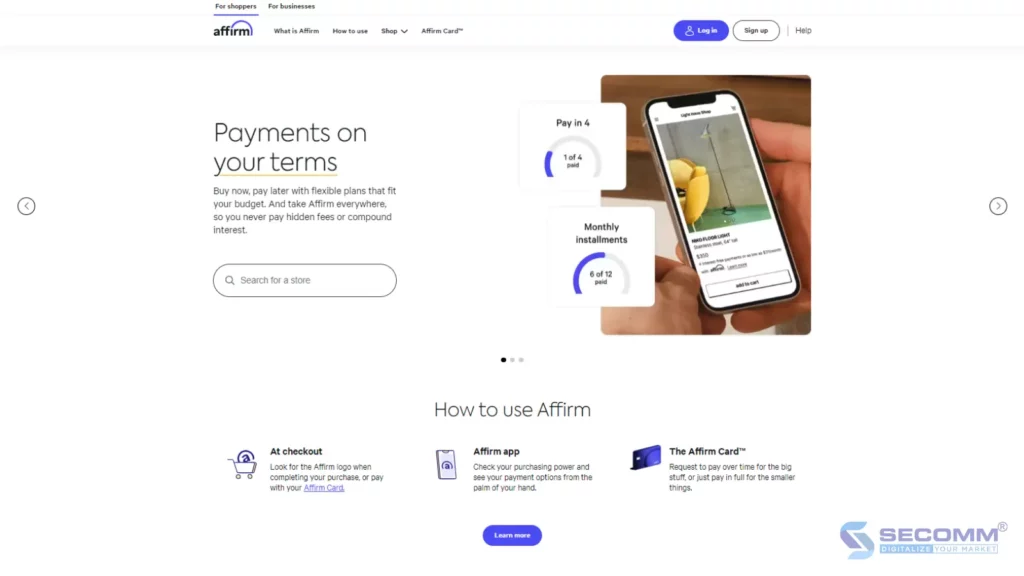
Affirm is a BNPL service from the US, founded by Max Levchin, one of the co-founders of PayPal. Affirm allows consumers in the US and Canada to shop and pay in flexible installments.
How it works: Affirm offers loans with payment terms from 3 to 36 months with clear interest rates from 0% to 30%, depending on the consumer’s credit.
Benefits:
Drawbacks:
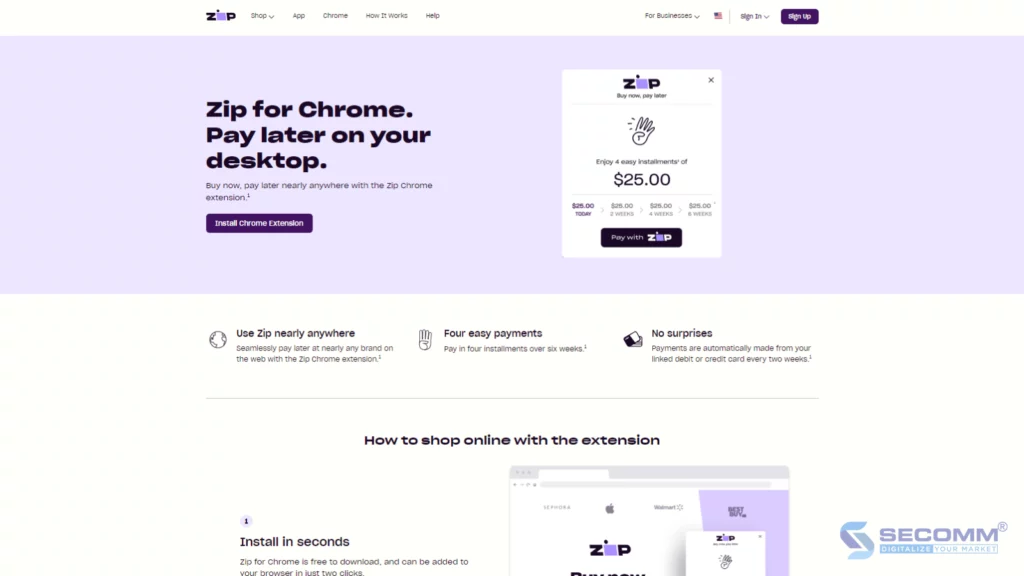
Zip is a BNPL service based in Australia, operating in several countries including the US, the UK, and New Zealand. Zip offers flexible payment solutions for consumers.
How it works: Zip allows consumers to split payments into four interest-free installments every two weeks or choose longer-term financing with interest.
Benefits:
Drawbacks:
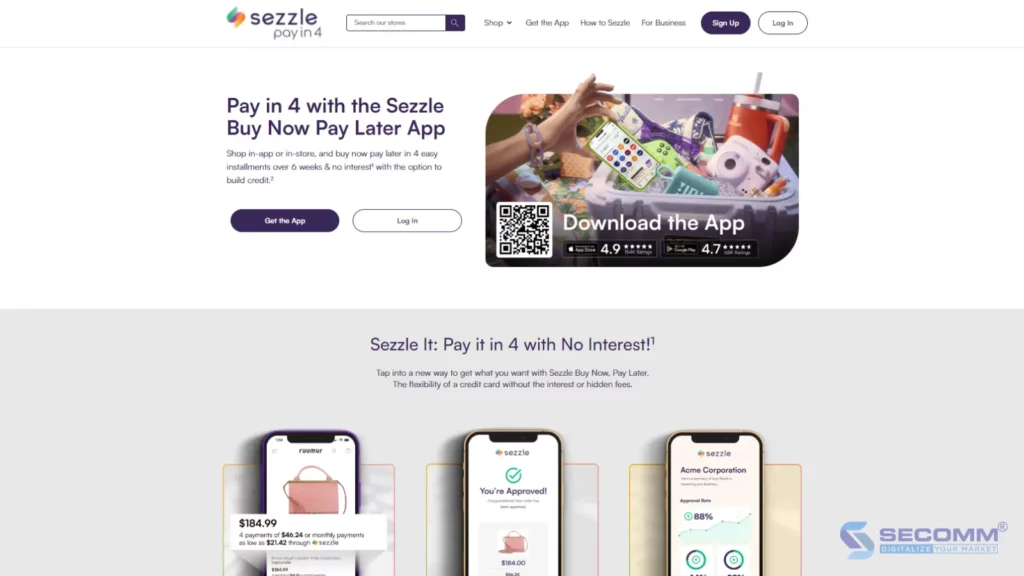
Sezzle is a BNPL service from the US, primarily operating in North America. Sezzle focuses on providing flexible payment solutions for young consumers.
How it works: Sezzle allows consumers to split payments into four interest-free installments over six weeks. No credit checks are required during registration.
Benefits:
Drawbacks:
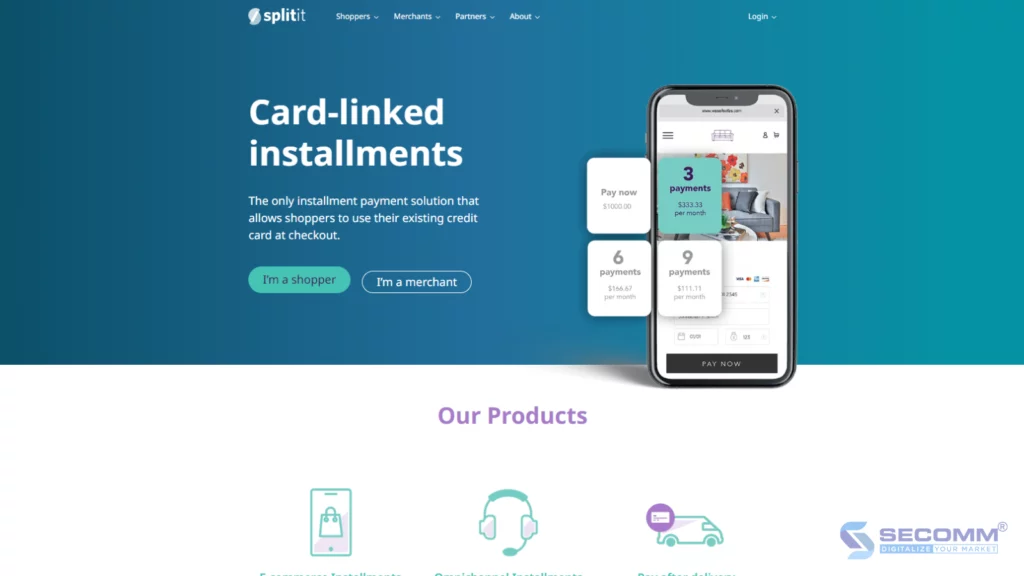
Splitit is another BNPL service from the US, with a different approach compared to traditional services. Splitit uses the available credit limit on consumers’ credit cards to split payments.
How it works: Splitit allows consumers to split payments into interest-free installments by holding the credit limit on their credit cards.
Benefits:
Drawbacks:
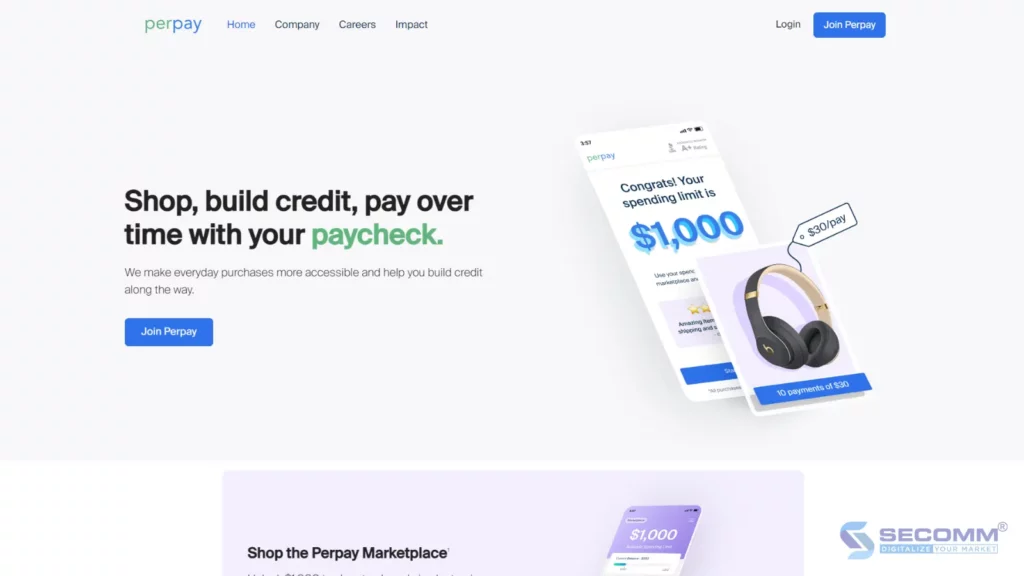
Perpay is a BNPL service from the US, focusing on helping consumers purchase everyday products and pay in installments through direct payroll deductions.
How it works: Consumers can shop on the Perpay platform and pay monthly installments through direct payroll deductions.
Benefits:
Drawbacks:
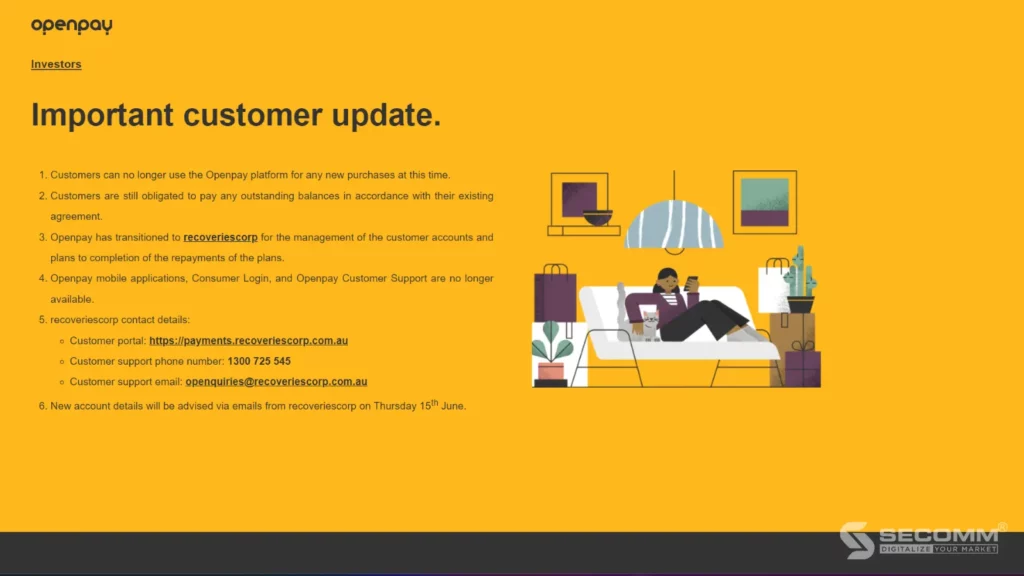
Openpay is a BNPL service from Australia, offering flexible payment plans for consumers and businesses in Australia, New Zealand, and the UK.
How it works: Openpay allows consumers to split payments into flexible installments ranging from 2 to 24 months.
Benefits:
Drawbacks:
FINAL WORDS
The Buy Now Pay Later (BNPL) services have revolutionized how consumers shop globally, providing significant flexibility and convenience. Providers such as Afterpay, Klarna, Affirm, Zip, Sezzle, Splitit, Perpay, and Openpay have developed diverse financial solutions, meeting the needs of both consumers and businesses. Each service has its own advantages; however, using BNPL also comes with challenges such as late fees, the risk of overspending, and the impact on credit scores if not managed well.
To maximize the benefits of BNPL, consumers need to manage their finances carefully and choose the service that fits their needs and capabilities. Meanwhile, businesses should continue to work closely with BNPL providers to offer the best shopping experience for customers while fully exploiting the potential of this payment method.
 2
2
 5,165
5,165
 0
0
 1
1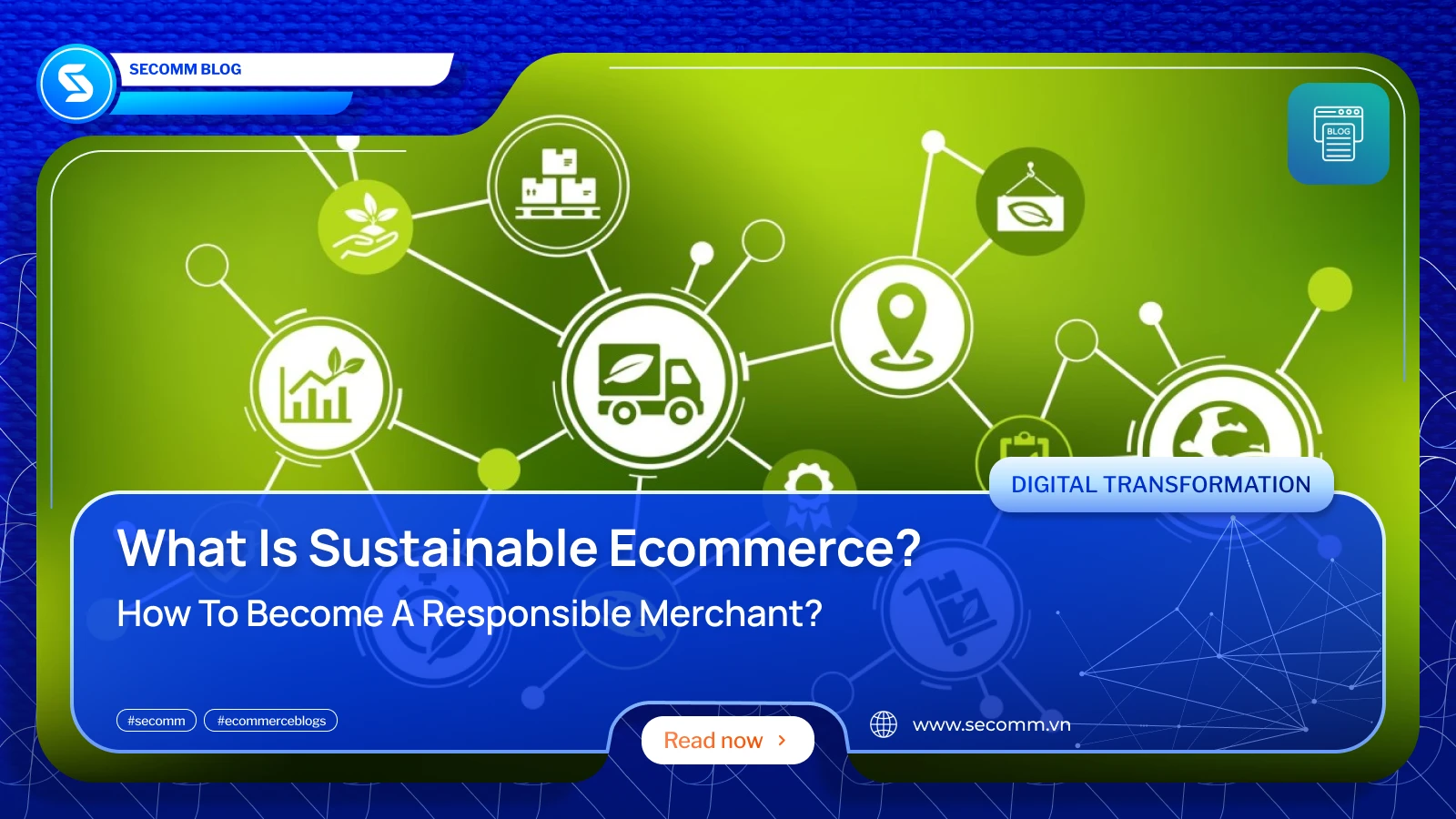
eCommerce has become an integral part of our daily lives, offering unparalleled convenience and access to a vast array of products. However, as the industry continues to grow, so does its environmental footprint. From excessive packaging waste to carbon emissions from shipping, the environmental impact of eCommerce cannot be ignored. This brings us to the concept of sustainable eCommerce—a transformative approach that seeks to minimize the negative environmental effects of online retail while promoting ethical business practices.
Sustainable eCommerce is not just a trend; it’s a response to the increasing consumer demand for environmentally friendly and socially responsible products. A survey shows that 72% of respondents reported that they were actively buying more environmentally friendly products than they did five years ago, while 81% said they expected to buy even more over the next five years.
In this blog, we will delve into the essence of sustainable eCommerce, explore its importance, examine the growing demand for it, and provide practical steps on how you can become a responsible merchant.
Sustainable eCommerce refers to the practice of conducting online business in a way that minimizes environmental impact and promotes social responsibility. At its core, it involves making mindful decisions at every stage of the business process, from product sourcing and manufacturing to packaging, shipping, and customer engagement. The goal is to reduce the carbon footprint, minimize waste, and ensure that ethical standards are upheld throughout the supply chain.
There are some common components in the eCommerce sustainability, including:
Offering products that are made from sustainable materials, are biodegradable, or have a lower environmental impact is crucial. This means choosing materials that are renewable, such as organic cotton or bamboo, over conventional materials that may deplete natural resources or cause pollution. Additionally, promoting products that are ethically sourced ensures that they are produced under fair labor conditions, respecting workers’ rights and contributing to social sustainability.
Sustainable packaging involves using materials that can be recycled, are biodegradable, or are made from recycled content. For instance, using cardboard boxes made from recycled paper or packing peanuts that are biodegradable can greatly reduce the environmental footprint. This approach not only minimizes waste but also appeals to environmentally conscious consumers.
Reducing energy consumption in the warehousing and logistics aspects of eCommerce is another critical component. This can be achieved by:
Minimizing waste throughout the entire eCommerce process is essential. This involves:
Ensuring that all business practices are ethical and transparent is fundamental to sustainable eCommerce. This includes:
By integrating these key components to strategies, eCommerce businesses can significantly reduce their environmental impact, support social responsibility, and meet the growing demand from consumers for more sustainable and ethical products.
Understanding the importance of eCommerce sustainability is crucial for businesses looking to thrive in today’s market. Here are several reasons why adopting sustainable practices in eCommerce is vital:
The environmental impact of traditional eCommerce practices is significant. From the excessive use of plastic packaging to the carbon emissions from shipping and logistics, the eCommerce industry contributes to environmental degradation. By adopting sustainable practices, businesses can significantly reduce their carbon footprint, decrease pollution, and help conserve natural resources. Sustainable eCommerce practices, such as using eco-friendly packaging and optimizing delivery routes, play a vital role in mitigating the industry’s environmental impact.
Consumer behavior is shifting towards sustainability. More and more customers are becoming environmentally conscious and prefer to purchase from brands that align with their values. Studies show that a growing number of consumers are willing to pay a premium for products that are sustainably produced and packaged. By adopting sustainable practices, eCommerce businesses can meet this demand, attract a broader customer base, and enhance customer loyalty. Being a responsible and eco-friendly brand can also differentiate a business in a crowded market.
Sustainable eCommerce practices can lead to significant business benefits. These include cost savings from reduced waste and energy consumption, improved brand reputation, and increased customer loyalty. Businesses that prioritize sustainability can also access new markets and opportunities, such as partnerships with other eco-friendly brands and certifications that can enhance credibility. Additionally, sustainable practices can lead to innovation, as companies find new ways to reduce their environmental impact and improve efficiency.
Governments and regulatory bodies are increasingly implementing stricter environmental regulations. Businesses that do not comply with these regulations risk facing fines, penalties, and damage to their reputation. By adopting sustainable practices, eCommerce businesses can stay ahead of regulatory changes, ensure compliance, and avoid potential legal issues. Proactively embracing sustainability also positions businesses as leaders in their industry, setting an example for others to follow.
Sustainability is essential for the long-term viability of businesses. As natural resources become scarcer and environmental issues become more pressing, companies that do not adopt sustainable practices may face higher costs and supply chain disruptions. By integrating sustainability into their business model, eCommerce companies can ensure they are resilient to future challenges and are better prepared for a changing market landscape. Sustainable practices also contribute to a positive corporate image, which can attract investors and stakeholders who prioritize responsible business operations.
Becoming a sustainable eCommerce business involves implementing practices that minimize environmental impact and promote social responsibility. Here are key steps to help you achieve sustainability:
Optimizing your supply chain is crucial for sustainability. This involves sourcing materials and products from suppliers who adhere to ethical and environmental standards.
Shipping is a significant contributor to the environmental footprint of eCommerce. Optimizing your shipping strategy can help reduce emissions and improve efficiency.
Packaging is a major source of waste in eCommerce. Switching to recyclable packaging can significantly reduce environmental impact.
Supporting environmental charities and initiatives can enhance your sustainability efforts and demonstrate your commitment to making a positive impact.
By implementing these strategies, your eCommerce business can significantly reduce its environmental impact, meet the growing demand for sustainable practices, and build a loyal customer base that values social responsibility. Adopting sustainability is not only good for the planet but also beneficial for your business’s long-term success.
Final words
eCommerce sustainability is no longer a luxury but a necessity. Consumers are increasingly prioritizing eco-friendly and socially responsible brands, and businesses must adapt to meet this demand. Embracing sustainable eCommerce practices, businesses can make informed decisions that contribute to a healthier planet.
 80
80
 2,706
2,706
 1
1
 27
27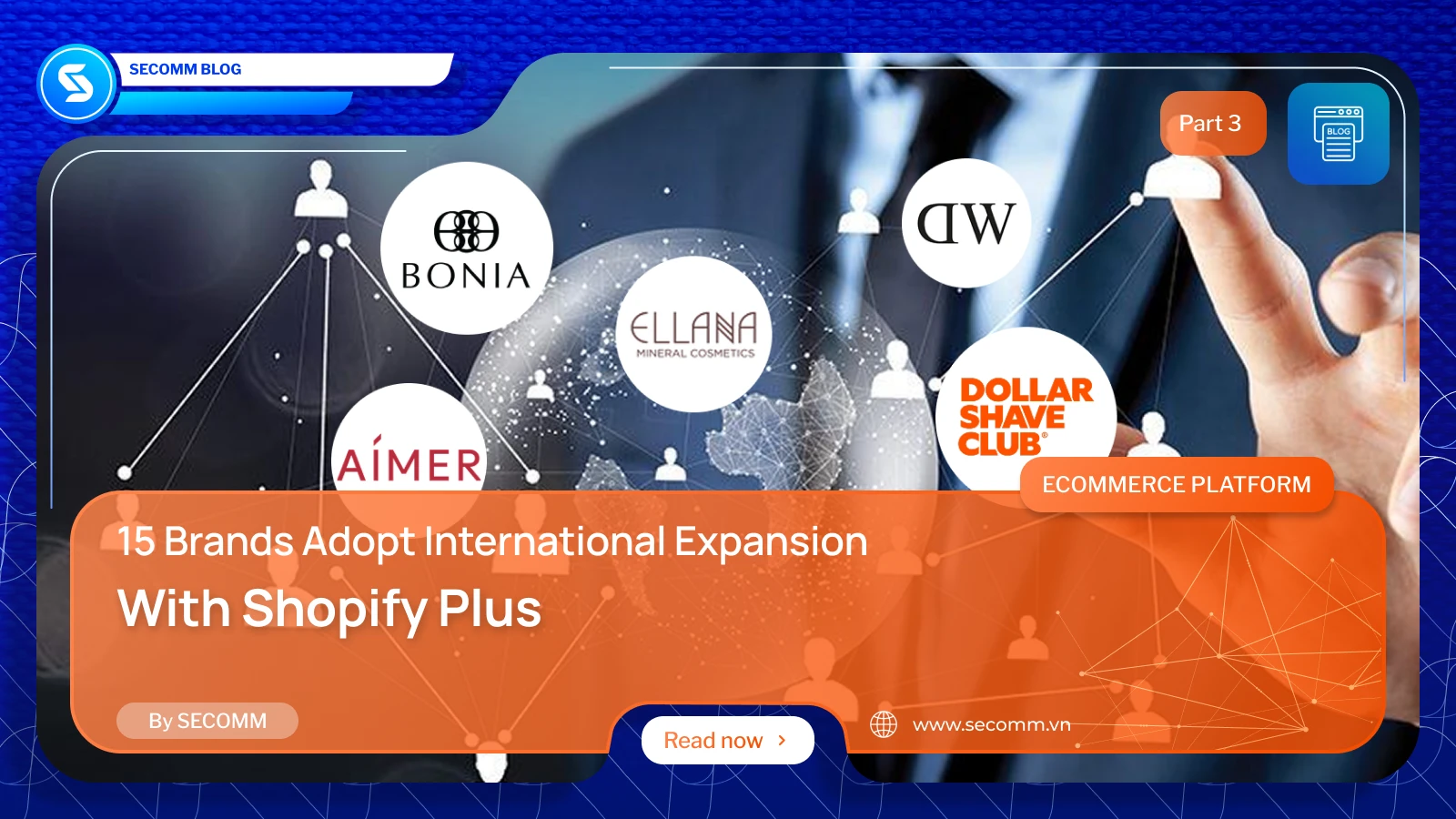
Welcome to the final installment of our three-part series on brands that have successfully embraced international expansion with Shopify Plus. In the previous parts, we explored the journeys of ten dynamic brands that leveraged Shopify Plus to navigate the complexities of global growth. In this concluding chapter, we turn our attention to five more outstanding brands: Ellana Cosmetics, Dollar Shave Club, Daniel Wellington, BONIA, and AIMER.
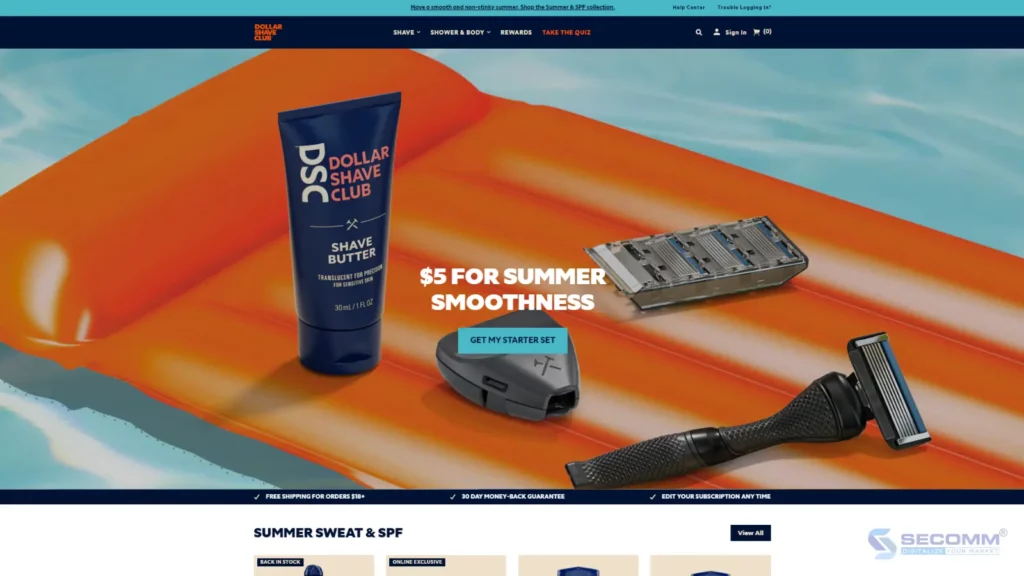
Dollar Shave Club (DSC) is a renowned American company that revolutionized the personal care industry with its subscription model for razors and personal care products.
Initially, DSC built its own custom eCommerce platform, which provided flexibility and high customization. While this allowed DSC to shape its business model in the digital landscape, managing and maintaining it became complex and resource-intensive over time. As technological solutions like Shopify emerged, offering features and tools that DSC could leverage, the company explored available solutions to integrate them into its existing system. After careful consideration, DSC transitioned to Shopify Plus to better support its profit growth and international expansion goals.
Through Shopify Plus, DSC operates and manages its subscription business model more effectively, integrating multiple applications within the Shopify ecosystem to optimize marketing campaigns and customer care. As a result, DSC reduced system maintenance resources by 40%, reached over 100 million global consumers through ShopApp, swiftly converted international stores to Shopify Plus within weeks instead of months, and increased conversion rates using Shopify’s applications.
Website: dollarshaveclub.com
Industry: Men Health
Traffic: 3.148M/month
Rank: #9,907 (USA) & #50,278 (Global)
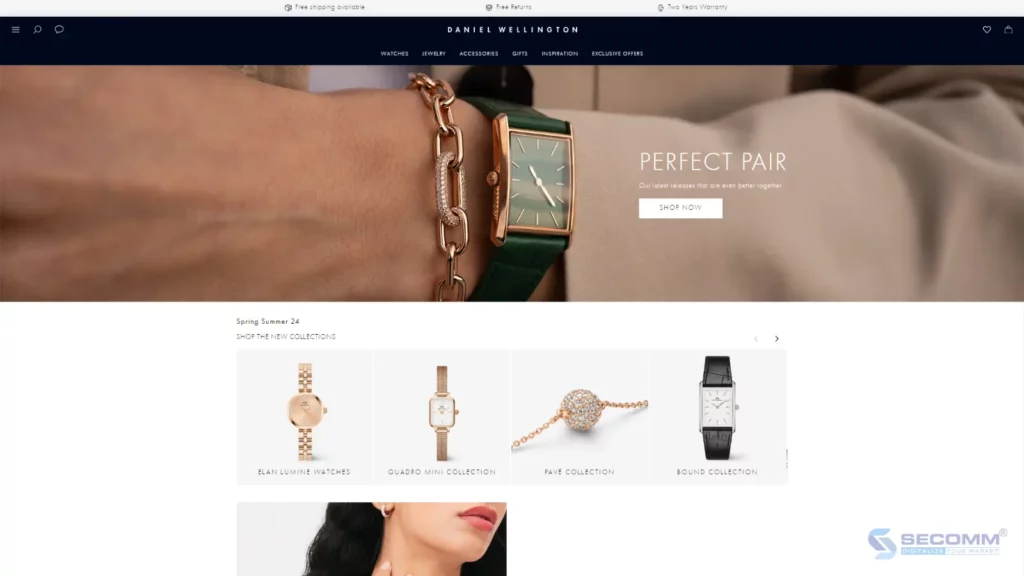
Launched in Sweden in 2011, Daniel Wellington is known for its elegant, minimalist watch designs and superior quality. Before Daniel Wellington adopted Shopify, they faced significant operational challenges, particularly the complexity and cost of their current technology systems, which included an e-commerce platform lacking user interface from CommerceTools and Contentful as their chosen CMS platform. The development and rollout of new features were time-consuming and cumbersome, consuming substantial resources. Additionally, Daniel Wellington used an on-premise ERP system, which increased costs and complexity. With multiple stores and integrated systems, product changes took months or even years to implement, resulting in delayed time-to-market.
Since transitioning to Shopify Plus, all these issues have been thoroughly addressed. Website features that previously took months or even years to develop and launch now take only days or weeks. This practical approach allows for quicker decision-making and agile response based on market dynamics. Other notable outcomes include the rapid launch of 12 expansion stores, a 50% reduction in platform fees, and fewer resource expenditures on maintenance and development compared to before.
Website: https://global.danielwellington.com/
Industry: Fashion
Traffic: 2.773M/month
Rank: #78,900 (USA) & #63,785 (Global)
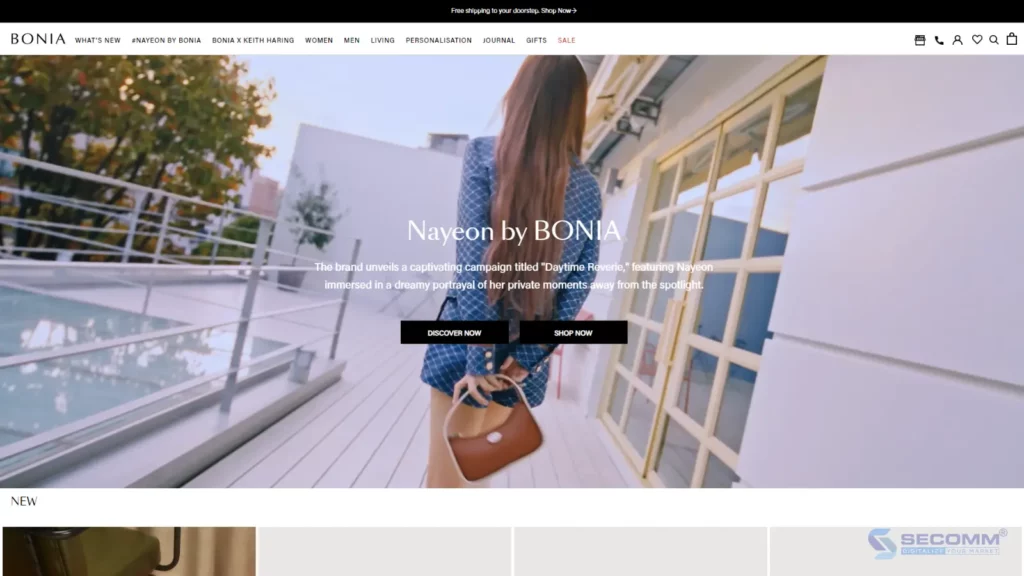
Established in 1974, BONIA has gradually become a prestigious and irreplaceable fashion brand in Southeast Asia. After making the strategic decision to transition from Adobe Commerce to Shopify due to previous challenges with product launch speed and website responsiveness, BONIA aimed to leverage its online presence for international expansion. Recognizing the need to provide personalized experiences for customers while maintaining a consistent brand identity across different markets, BONIA also sought to ensure that managing multiple websites wouldn’t burden its team with excessive time and costs.
Therefore, BONIA upgraded to Shopify Plus. This strategic move enabled BONIA to harness the expansive capabilities of Shopify Plus storefronts, allowing them to establish multiple online storefronts alongside their flagship Malaysian website. Leveraging this capability, BONIA seamlessly integrated themes and layouts from its Malaysian store while ensuring each new store exudes its own distinct charm and is localized to specific locations. This localization was achieved through customized adjustments tailored to each specific region. Shopify Plus’s organizational admin also played a crucial role, providing BONIA with a centralized command center for all its stores.
As a result, BONIA increased its overall revenue by 10% through expansion into Singapore and saw a 25% annual increase in website traffic.
Website: https://bonia.com/
Industry: Fashion
Traffic: 108,842/month
Rank: #27,473 (Malaysia) & #1,510,285 (Global)
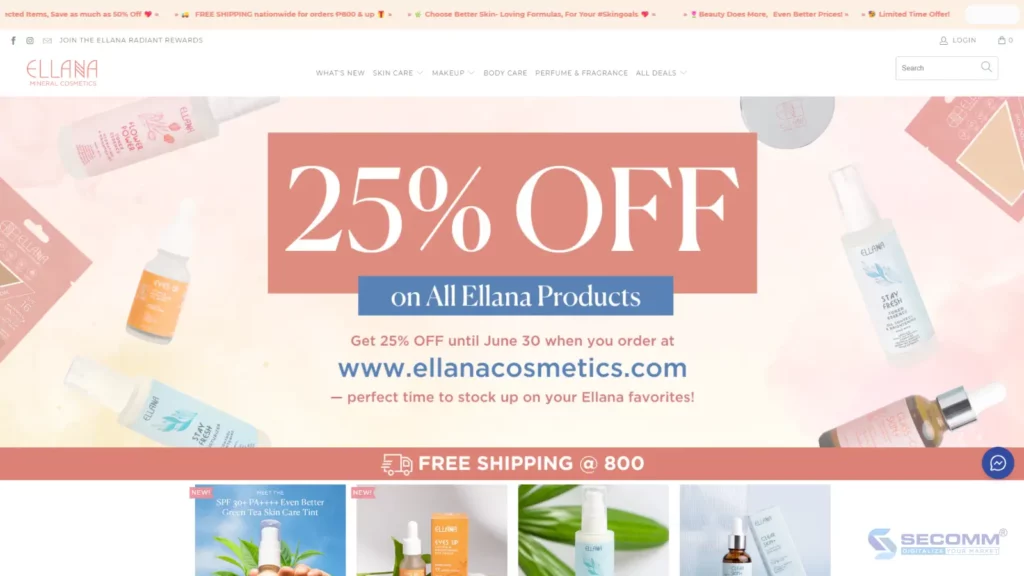
In 2007, Ellana Cosmetics was founded with the goal of helping global consumers achieve better skin and improve their skincare knowledge. Recognizing the opportunity to reach more customers online, the brand initially started with a basic HTML website, then moved to Adobe Commerce and later WooCommerce. However, Ellana Cosmetics was dissatisfied with the results these platforms provided. The lack of robust data management tools made it difficult to personalize customer experiences across different markets, resulting in significant online sales losses.
Ellana Cosmetics switched to Shopify when their e-commerce marketing efforts were still in their infancy in the Philippines. This allowed Ellana to strengthen its technological foundation and accelerate growth and efficiency by upgrading to Shopify Plus shortly thereafter. The company leveraged various solutions to optimize managing multiple expanded storefronts, including Shopify Flow. As a result, the average order value increased by 17%, payment failure rates decreased by 40%, and online revenue increased by 50%.
Website: https://www.ellanacosmetics.com/
Industry: Cosmetics
Traffic: 88,075/month
Rank: #61,563 (Philippines) & #2,754,014 (Global)
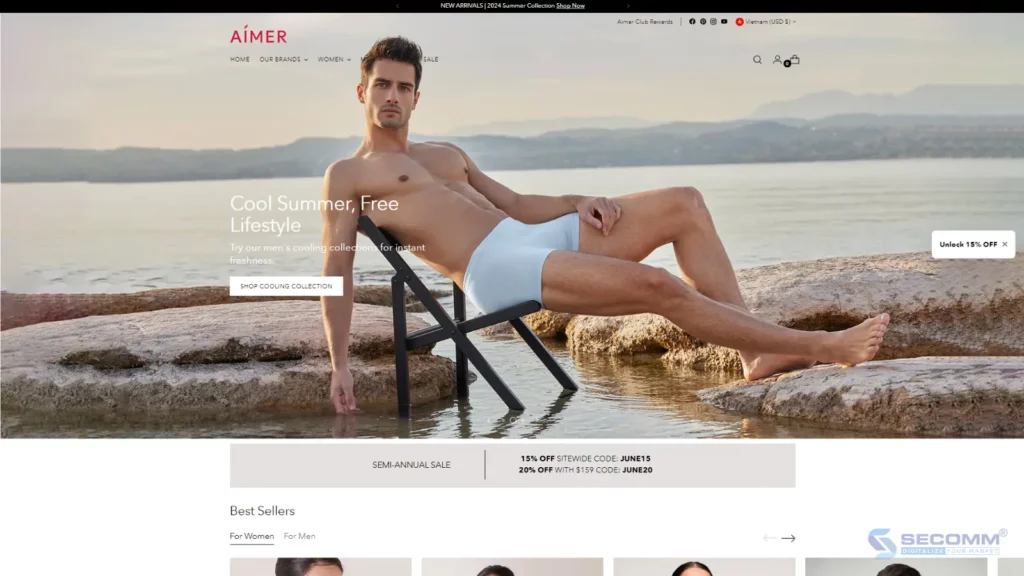
Founded in 1993, AIMER is one of the leading lingerie brands in China. With over 20 years of experience in designing and creating premium and luxurious lingerie, AIMER takes pride in its continuously evolving creative design team, which has developed more than 400 new products under its five main brands: AIMER, imi’s, LA CLOVER, AIMER Men, and Aimer Kids. Supported by these innovative products, AIMER has established an international presence far beyond its homeland, including regions such as North America, Europe, and the Middle East.
International sales are a crucial part of AIMER’s development strategy. However, the brand faced challenges regarding customization, taxation, and compliance with tax rules. AIMER migrated its platform to Shopify Plus, leveraging its customization capabilities to meet the needs of customers in international markets.
Additionally, utilizing Shopify Plus’s Avalara tax automation feature helped AIMER automatically calculate taxes based on the customer’s international address. Instead of manually calculating taxes, Shopify Plus accurately computed taxes for each order based on the latest tax regulations of the target market and automatically added taxes to the final checkout page, ensuring transparency in tax costs for consumers.
As a result, AIMER saw a 105% increase in monthly site visits, a 57% increase in monthly conversion rates, and a 62% increase in monthly page views.
Website: https://aimeronline.com/
Industry: Fashion
Traffic: 32,449/month
Rank: #51,992 (Hong Kong) & #1,948,207 (Global)
Final Words
In this final part of our series, we’ve delved into the inspiring journeys of Ellana Cosmetics, Dollar Shave Club, Daniel Wellington, BONIA, and AIMER. These brands exemplify how leveraging Shopify Plus can transform the challenges of international expansion into opportunities for growth and success.
As we conclude our series, it is evident that the journey to international expansion is complex but highly rewarding with the right tools and strategies. For brands looking to embark on this path, the experiences of 15 success stories will provide valuable insights and inspiration.
Need a deep consultation? Contact SECOMM for free!
 2
2
 3,571
3,571
 0
0
 1
1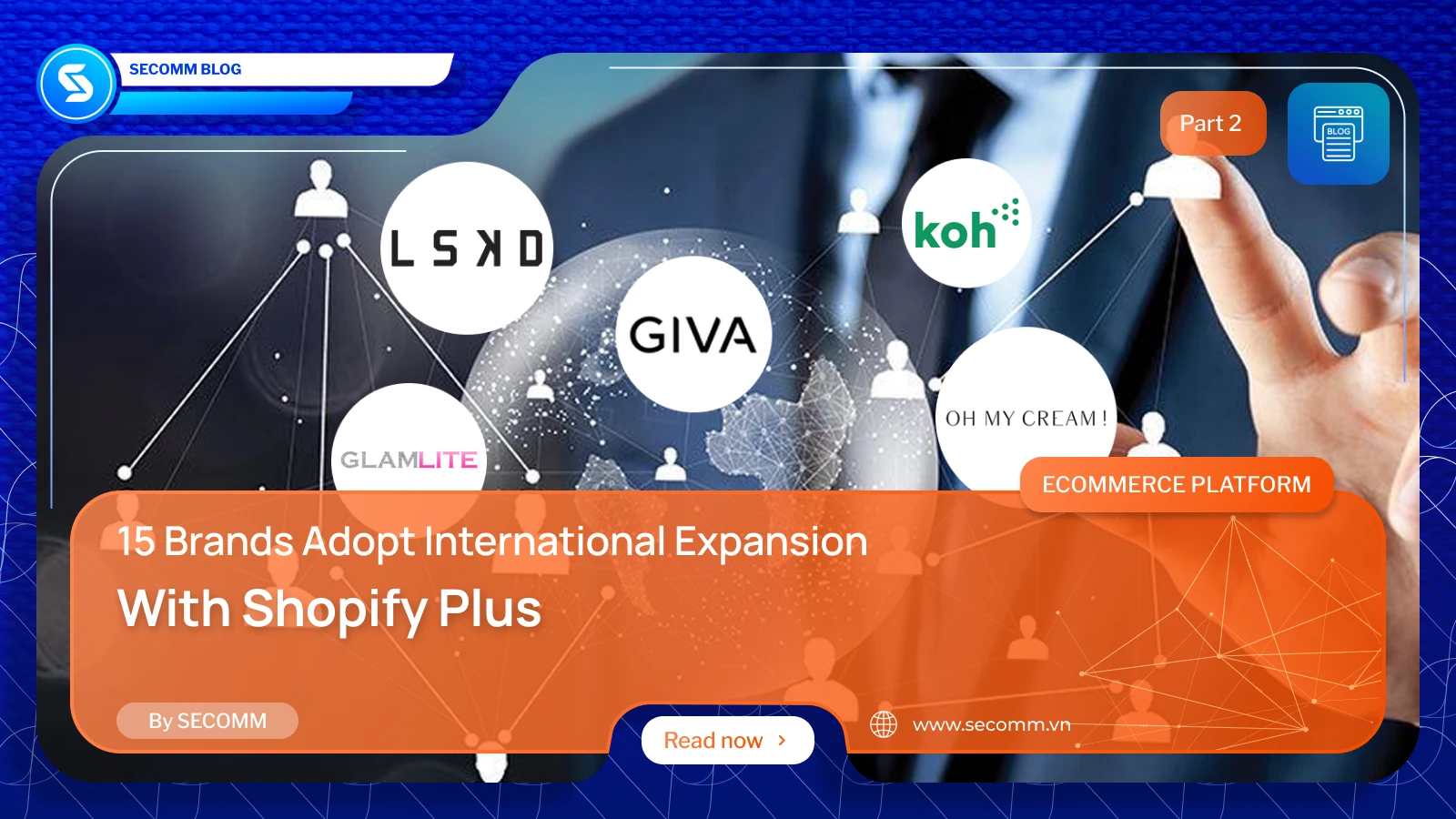
In Part 2 of our series, we delve into the journeys of Oh My Cream, Koh, LSKD, Glamlite, and GIVA. Each of these brands brings unique offerings to the global market, from skincare and household products to activewear and gourmet cosmetics. We explore how these companies have navigated the complexities of international expansion, overcoming challenges and seizing opportunities with the support of Shopify Plus.
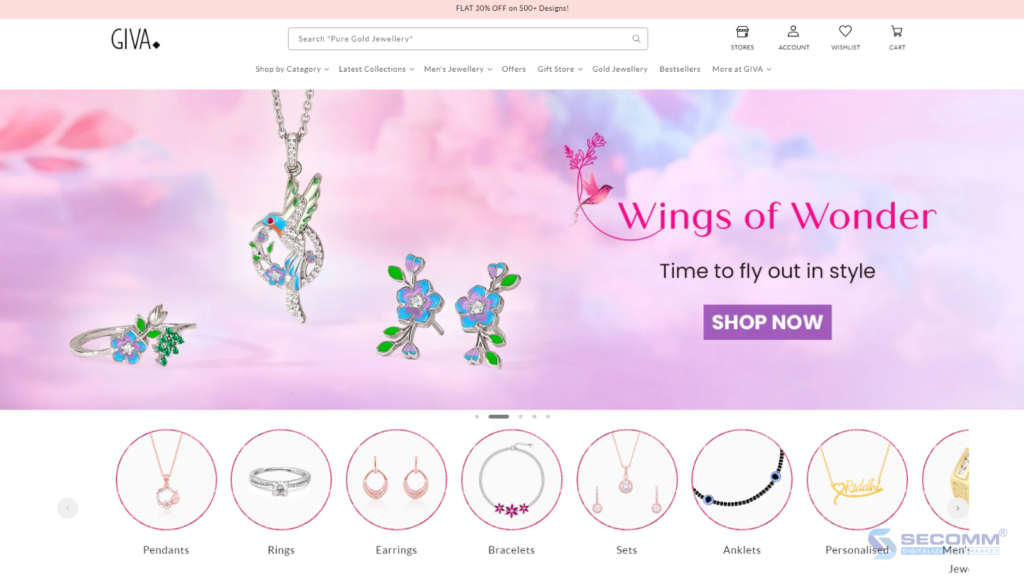
GIVA is India’s leading brand for providing luxurious and elegant gold and silver jewelry at affordable prices. Since its launch in 2019, the brand has been loved by both domestic and international customers. Consequently, within just four years, the company achieved remarkable growth, leading to the need for a more robust eCommerce system.
Initially, GIVA’s D2C system operated on Shopify, but to handle the large and increasing volume of transactions, the company upgraded to Shopify Plus. Through Shopify Plus, GIVA quickly launched additional stores in the USA and Sri Lanka, and also set up an expansion store for its sub-brand, AVNI.
GIVA leveraged the exclusive Shopify Plus feature, organizational admin setting, to seamlessly and efficiently perform actions across multiple stores, rather than managing each store individually. As a result, GIVA experienced a 100% year-over-year revenue increase compared to 2021, a 193% increase in its global customer base from April 2021 to April 2022, and reached customers in three different geographical regions.
Website: https://www.giva.co/
Industry: Jewelry
Traffic: 7.160M/month
Rank: #1,523 (India) & #21,585 (Global)
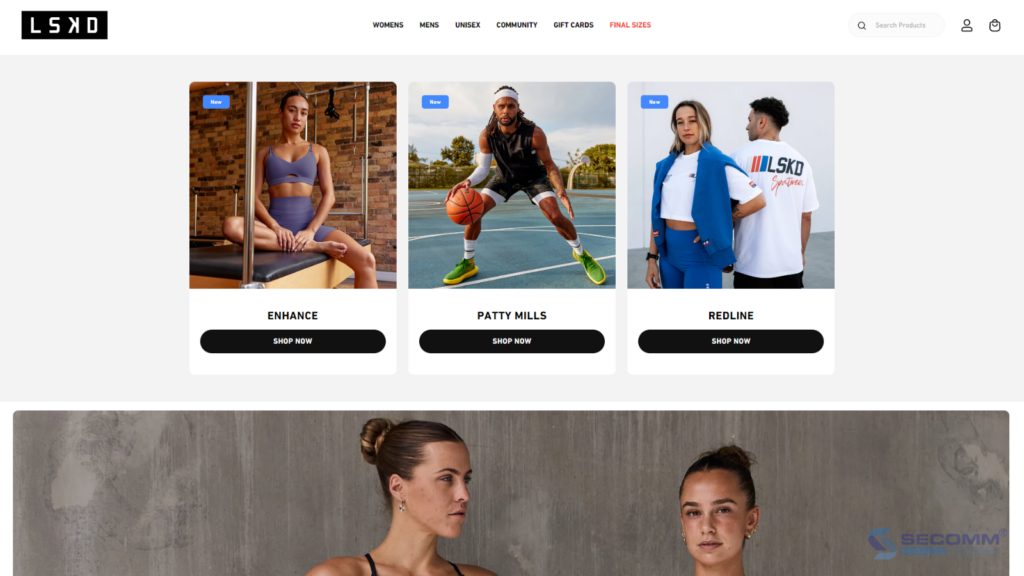
Founded in 2007, LSKD (short for ‘Loose Kid’) is an Australian-based apparel brand specializing in high-quality athletic wear with a street style and a focus on fitness functionality. Although LSKD began as a wholesaler, it has since reinvented itself as a vibrant consumer-oriented brand with online retail at the core of its operations. The company has also made a name for itself in physical retail, opening several stores both domestically and internationally.
As LSKD planned its international expansion into the United States, the brand aimed to ensure a highly personalized customer experience. Despite having a system capable of serving shoppers in multiple countries, LSKD needed a more flexible and easily manageable system. Consequently, LSKD transitioned to Shopify Plus and used the expansion store feature to quickly and easily create a new store targeting the US market. Using the online store in the US as a springboard, LSKD opened a physical store in San Diego and pop-up shops at sports events nationwide. All these operations were smoothly run on Shopify POS.
Website: https://www.lskd.co/
Industry: Fashion
Traffic: 2.112M/month
Rank: #1,182 (Australia) & #70,075 (Global)
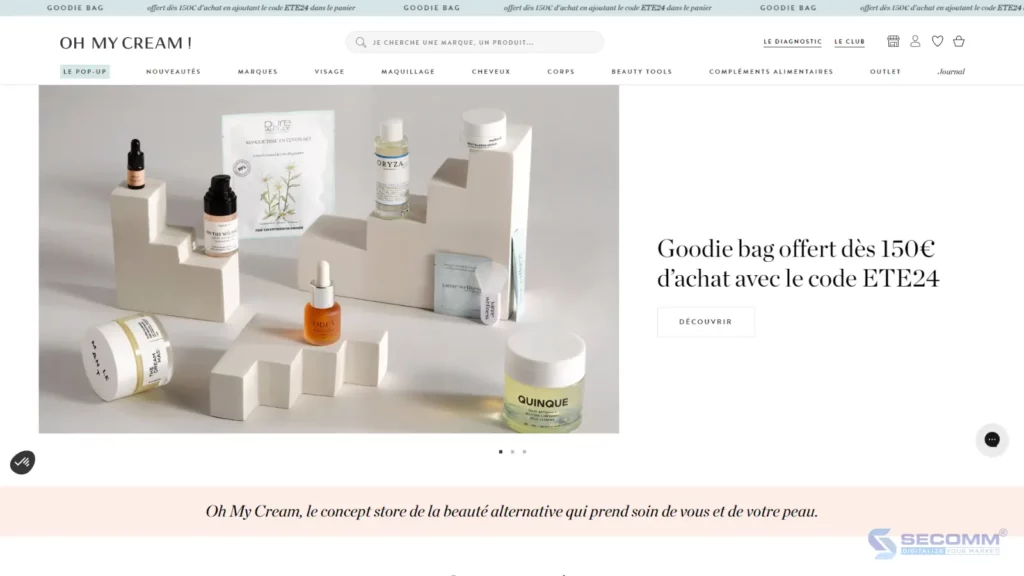
Oh My Cream is a French cosmetics brand founded in 2012, with an omnichannel strategy as its core focus. Oh My Cream currently operates both physical stores and an eCommerce website. As of now, the company has expanded internationally with over 20 retail stores, including two in London, and a bilingual website.
To customize and optimize the omnichannel experience, Oh My Cream implemented Shopify Plus. The unique and superior omnichannel features of Shopify Plus met Oh My Cream’s expectations. Additionally, Oh My Cream transitioned its outdated payment system to Shopify POS to collect more comprehensive customer data. After optimizing the omnichannel experience with Shopify Plus, Oh My Cream increased the average customer lifetime value by 50%, the average basket value by 25%, and enhanced data collection to implement a loyalty program.
Website: https://www.ohmycream.com/
Industry: Cosmetics
Traffic: 602,976/month
Rank: #7,537 (France) & #180,940 (Global)
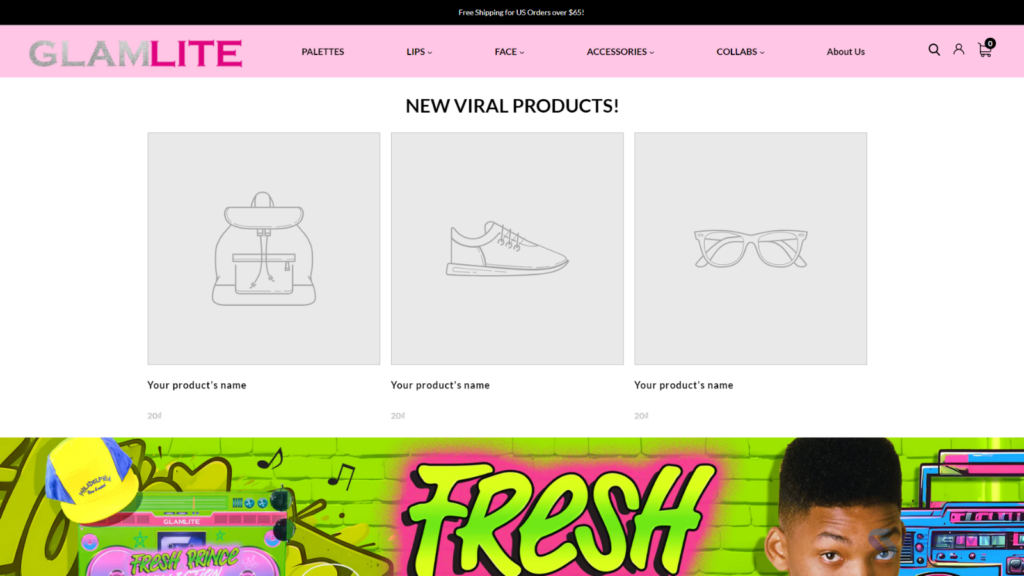
Glamlite, a cosmetics brand founded in 2018 in Los Angeles, is renowned for its colorful lipsticks and eyeshadow palettes. Glamlite launched its e-commerce website using Shopify Plus from the beginning and initially sold products internationally. However, their growth rate was not promising due to high USPS shipping costs, long delivery times, and the inability to track international packages.
The lack of international tracking by USPS left Glamlite and their customers unaware of the whereabouts of shipments, with some customers never receiving their orders. Unsurprisingly, Glamlite’s customer retention rate and international sales were significantly lower than expected. However, after implementing Shopify Market Pro, Glamlite overcame these issues, resulting in:
Website: https://glamlite.com/
Industry: Cosmetics
Traffic: 376,734/month
Rank: #56,604 (USA) & #316,746 (Global)
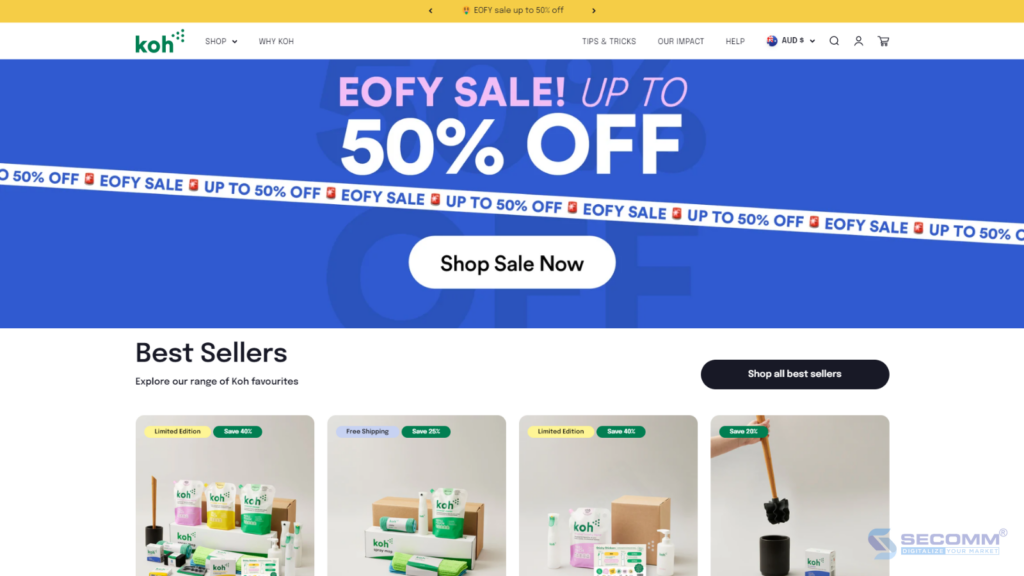
Koh is a brand specializing in producing and supplying chemical-free, eco-friendly cleaning products. Two years after its establishment, Koh achieved $50 million in revenue. The eCommerce website was converting well but started to look outdated. The product line was also expanding, creating opportunities for upselling, cross-selling, and promotions that were not being fully utilized. Global expansion was also on the agenda, and Koh’s founder, Alexander, wanted a solution that would allow Koh to grow without limitations.
After operating on Shopify for some time, Koh decided to upgrade to Shopify Plus. The expansion store feature of Shopify Plus enabled Koh to scale seamlessly into new regions with custom payment tools to improve conversion rates. For example, Koh could customize the checkout process using third-party apps like Rebuy for comprehensive personalization, upselling, and cross-selling with A/B testing, and Klaviyo for better product recommendations. Finally, the Launchpad scheduling tool allowed the team at Koh to quickly set up and schedule promotional and sales events.
Website: https://koh.com/
Industry: Home and Garden
Traffic: 371,270/month
Rank: #5,902 (Australia) & #310,539 (Global)
Final Words
The stories of Oh My Cream, Koh, LSKD, Glamlite, and GIVA showcased in Part 2 of our series exemplify the dynamic possibilities that emerge when innovative brands embrace Shopify Plus for international growth. From pioneering new markets to enhancing customer experiences through tailored eCommerce solutions, these brands have demonstrated resilience, creativity, and strategic foresight in their expansion efforts.
Stay tuned for Part 3 of our series, where we’ll uncover more success stories and strategies as brands continue to thrive with Shopify Plus on their path to global expansion.
 2
2
 3,126
3,126
 0
0
 1
1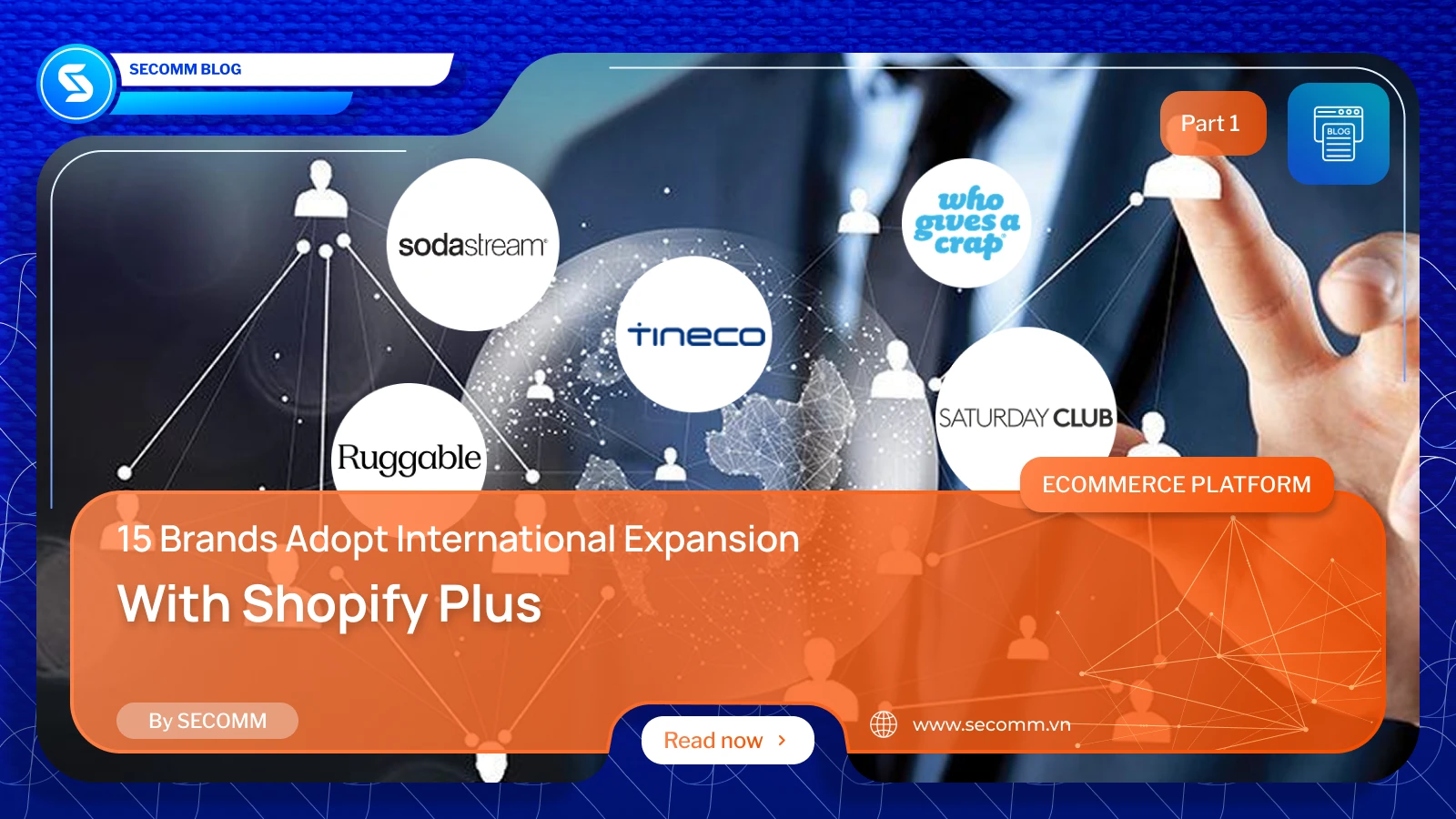
In today’s global economy, international expansion is essential for e-commerce brands seeking revenue growth and global recognition. However, navigating new markets presents challenges such as logistics, regulations, and cultural differences.
Shopify Plus offers a robust platform designed to help high-growth businesses expand seamlessly. With features for localization, multi-currency transactions, and international shipping, it simplifies cross-border commerce.
In this three-part series, we’ll explore how 15 brands have successfully expanded internationally using Shopify Plus. In Part 1, we’ll dive into the success stories of Saturday Club, Who Give a Crap, Tineco, SodaStream, and Ruggable, examining their strategies, challenges, and the results of their global ventures.

Ruggable is known as a brand that specializes in producing and supplying high-quality rugs with a wide variety of designs, sizes, and materials. During the social distancing period due to Covid-19, the increased demand for home decoration and renovation helped Ruggable achieve remarkable growth, laying the foundation for its goal of expanding into international markets.
With Shopify Plus, Ruggable implemented a Headless store to flexibly customize the interface and features, providing customers with a seamless shopping experience. The Headless implementation also helped Ruggable customize their expanding store. The company has expanded into Canada, the United Kingdom, Germany, Austria, France, the Netherlands, Australia, and the United States. Shopify Markets made it much easier for Ruggable to convert currencies and update product prices when launching in new markets. Ruggable didn’t have to worry about issues like manual pricing or tracking currency conversions over time. Shopify Plus handled everything for Ruggable.
Website: https://ruggable.com/
Industry: Home and Garden
Traffic: 15.49M/month
Rank: #2,252 (USA) & #11,656 (Global)
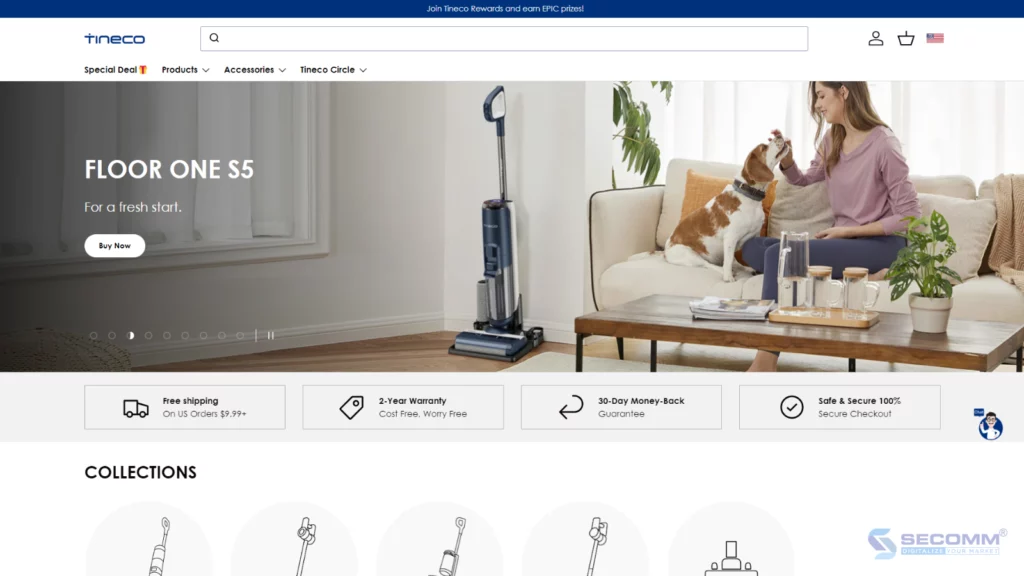
Since its establishment in 2002, Tineco has continuously researched and improved to provide customers with high-end vacuum cleaners and mops, enhancing the quality of life and saving time. Believing that offering customers an experience beyond expectations is the key to success, Tineco aims to target international markets. Initially, Tineco used Shopify to quickly build a functional eCommerce website as an independent sales channel. However, Tineco wanted to drive overseas growth by creating highly customizable stores without adding operational burdens like switching between different pages of the website.
Tineco upgraded to Shopify Plus to accelerate its international expansion. With the growth of the European market, Tineco utilized Shopify Plus’s expansion store feature to create additional stores across the continent. Tineco also used checkout extensibility to customize checkout pages, integrating apps like Smile: Loyalty & Rewards to add point reminders, encouraging repeat business, and offering buy-now-pay-later options to support conversions of high-order-value products.
Website: https://store.tineco.com/
Industry: Consumer Electronics
Traffic: 2.688M/month
Rank: #33,866 (USA) & #62,833 (Global)
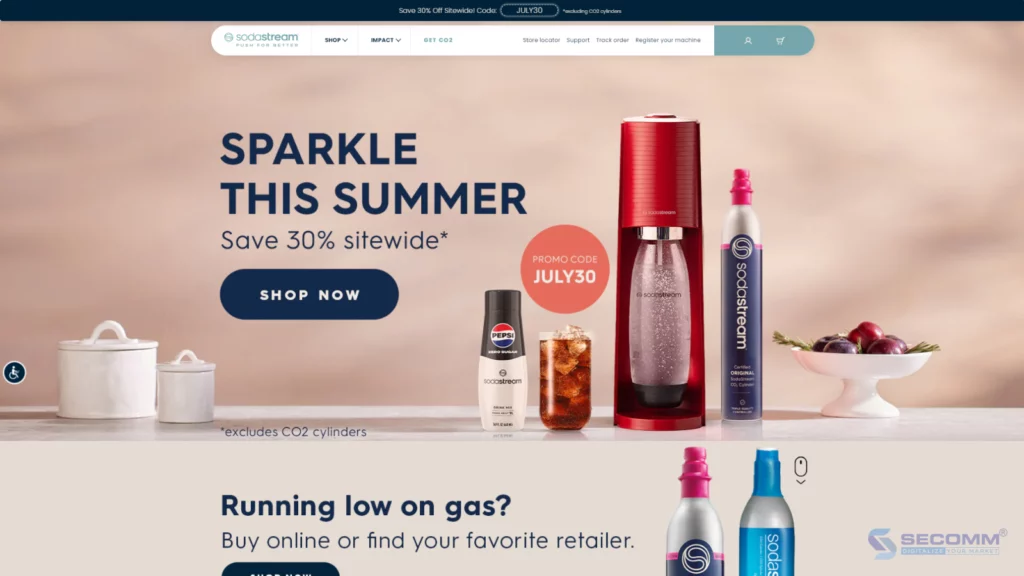
Founded in 1903, SodaStream is an environmentally friendly brand that transforms tap water into carbonated beverages for consumers. Initially, some solutions and features of SodaStream’s website were based on Adobe Commerce, while others relied on local systems. The lack of uniformity in its e-commerce operations led to inefficiencies and hindered SodaStream’s ability to scale. This prompted the business to transition to the Shopify Plus platform. The flexibility of Shopify Plus allowed SodaStream to easily customize its expansion stores to meet the specific needs and preferences of customers in different regions. Additionally, Shopify Plus facilitated rapid deployment of new websites as SodaStream entered new markets, synchronizing online store launches with retail stores to create a seamless customer experience. As a result, SodaStream’s revenue increased by 20%, effectively managed data for 9 million users, and expanded globally to 16 websites across 15 countries within four years.
Website: https://sodastream.com/
Industry: FnB
Traffic: 2.496M/month
Rank: #12,360 (USA) & #56,939 (Global)
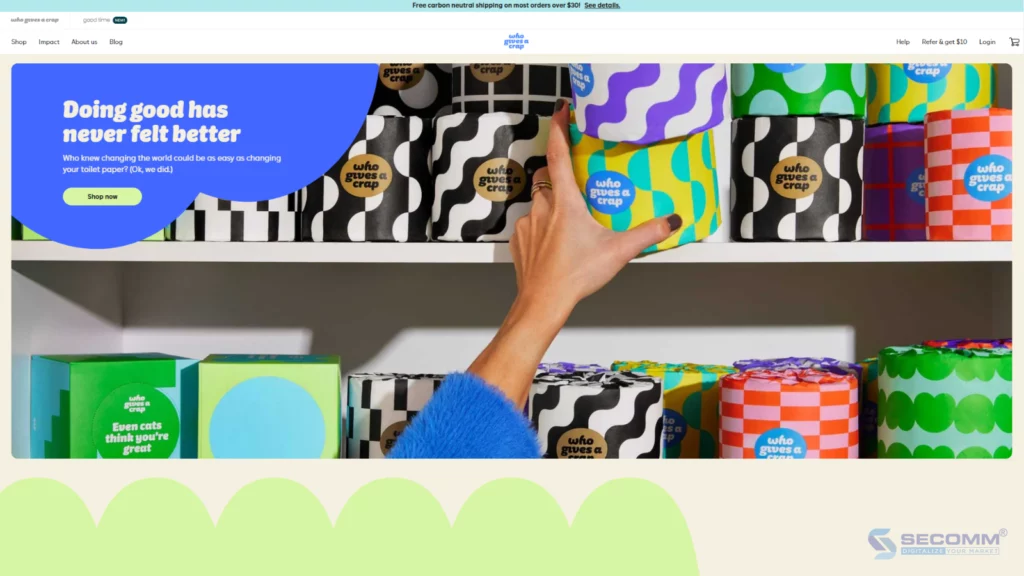
Who Gives a Crap is a brand specializing in manufacturing and supplying high-quality toilet paper with attractive designs. Initially, the brand adopted a direct-to-consumer (D2C) model and used the Shopify platform. However, as the brand aimed to transition to the next growth phase with a primary goal of international expansion, Who Gives a Crap needed more robust eCommerce capabilities. Additionally, the company targeted implementing a business-to-business (B2B) model for growth. However, with mostly manual B2B ordering processes, each new wholesale transaction meant additional time spent on administrative tasks like inventory reconciliation, making B2B scaling challenging.
Soon after, Who Gives a Crap upgraded to Shopify Plus to leverage the expansion store feature and swiftly set up three separate custom online stores for target markets in the US, UK, and Europe. The company also used the expansion store feature to launch B2B stores. By using B2B on Shopify, Who Gives a Crap enabled creating custom pricing for each wholesale customer, self-service ordering, and automated order fulfillment processes. This toilet paper brand also utilized Shopify Flow to create and customize automation workflows to optimize operations integrating both D2C and B2B.
Website: whogivesacrap.org
Industry: Groceries
Traffic: 2.247M/month
Rank: #5,310 (UK) & #66,212 (Global)

Saturday Club is a renowned fashion retailer based in Singapore, dedicated to providing customers with high-quality products and an engaging shopping experience. Starting as a B2B brand, Saturday Club has evolved over two decades to establish a large retail business with an extensive online presence spanning countries such as Malaysia, Japan, the USA, the UK, and Australia.
Saturday Club expanded its online operations to several other countries using the Adobe Commerce eCommerce platform and deployed PrestaShop in some markets. However, each country launch typically took over a month and incurred high costs, sometimes exceeding SGD 10,000 for markets served by the Adobe Commerce platform. Additionally, troubleshooting, complexities arising from integrations and backups, and data migration consumed significant time and budget for Saturday Club.
After transitioning to Shopify Plus, Saturday Club utilized the expansion store feature to scale up to 4 international stores and checkout extensibility to easily implement third-party payment gateway solutions, offering customers in different international markets more purchasing options. As a result, Saturday Club launched 9 international stores within 6 months, increased its global customer base by 5%, and achieved a 38% year-over-year revenue growth in Malaysia during the Chinese New Year 2024.
Website: https://sg.saturdayclub.com/
Industry: Fashion
Traffic: 435,965/month
Rank: #2,578 (Singapore) & #233,691 (Global)
Final Words
Expanding internationally is a significant milestone for any e-commerce brand, and as we’ve seen, Shopify Plus is a powerful ally in this journey. The success stories of Saturday Club, Who Give a Crap, Tineco, SodaStream, and Ruggable highlight how leveraging the right tools and strategies can overcome the complexities of entering new markets.
As we conclude Part 1 of this series, it’s clear that the potential for global e-commerce is immense. Whether you’re a budding entrepreneur or an established brand, the experiences of these companies provide valuable insights and inspiration. Stay tuned for Part 2, where we’ll continue to explore more brands thriving globally with the help of Shopify Plus.
 2
2
 3,035
3,035
 0
0
 1
1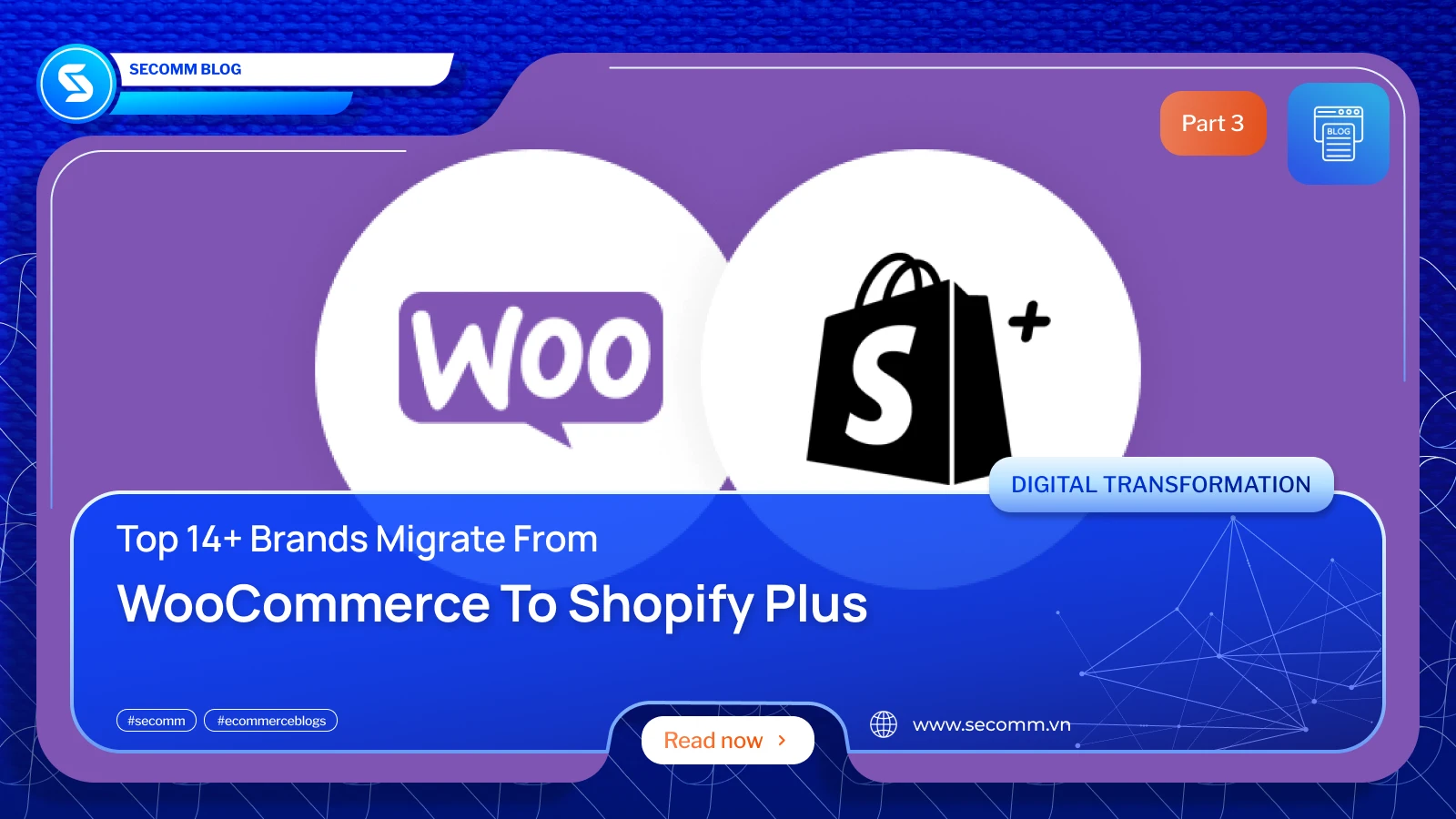
Building upon the narratives in parts 1 and 2, this third part invites you to delve into the stories of the remaining brands within the series of 14 that migrate from WooCommerce to Shopify Plus. Explore how this strategic decision has led to their success in terms of sales and paved the way for sustainable growth in the future.
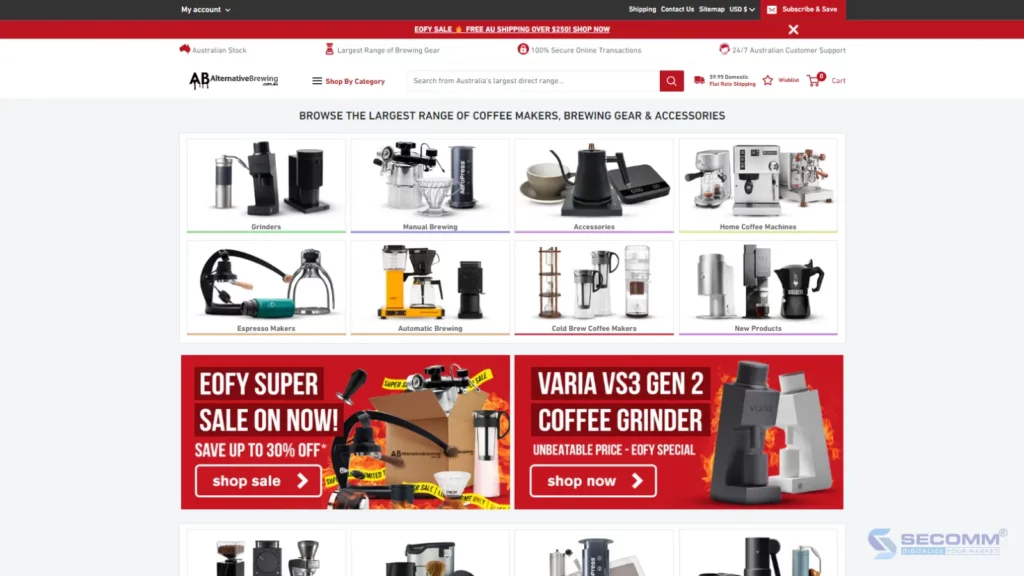
Alternative Brewing is a leading brand in Australia specializing in providing high quality coffee making equipment and utensils. After operating on WooCommerce, Alternative Brewing encountered a problem. WooCommerce eCommerce websites require constant maintenance, causing a lot of worry on shopping occasions like Black Friday or Cyber Monday.
Within 4 months of converting to the Shopify Plus platform, Alternative Brewing’s new eCommerce website loaded faster and had faster checkout, helping the brand significantly increase average order value. Shopify Plus platform with an intuitive, user-friendly interface, Alternative Brewing does not need to deal with a lot of complicated code. This allows the Alternative Brewing team to focus on growing their business and make more informed decisions with Shopify’s in-depth reports and analytics.
Website: https://alternativebrewing.com.au/
Industry: FnB
Traffic: 919,295/month
Rank: #3,071 (Australia) & #144,195 (Global)
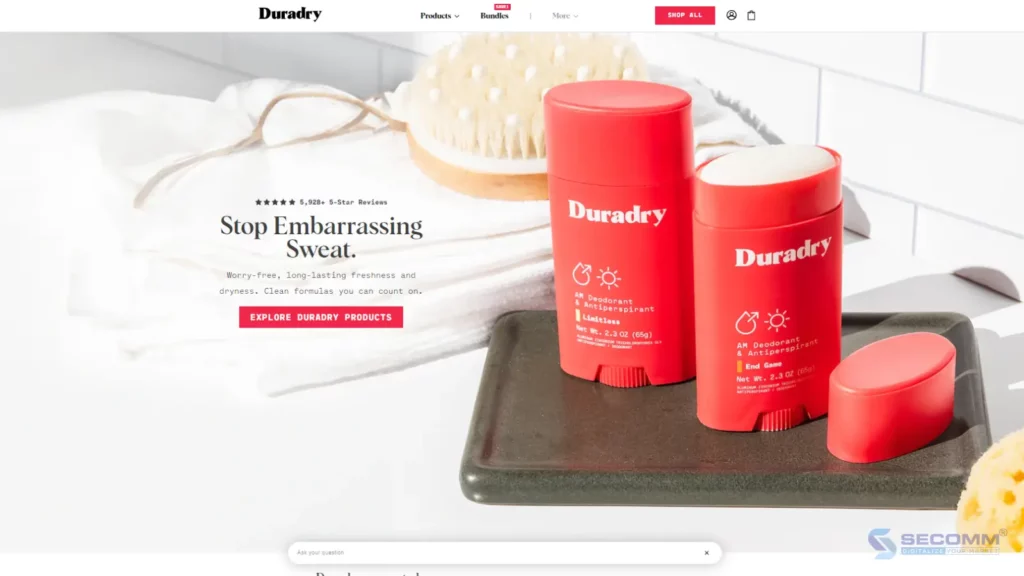
Duradry is a leading personal care brand that offers effective antiperspirant products. Operating on WooCommerce costs Duradry a lot of money when testing many different marketing campaigns. The brand migrated to the Shopify Plus platform to take advantage of many exclusive tools and solutions that help them optimize operations and deploy marketing processes more effectively.
Duradry also leverages Shopify Collabs to partner with popular content creators to drive marketing success, bringing Duradry products to more potential customers. The result was 250 content creators joining Duradry’s community, $50k in sales through Shopify Collabs in less than 7 months.
Website: https://duradry.com/?view=hero-a
Industry: Beauty & Cosmetics
Traffic: 386,080/month
Rank: #119,405 (USA) & #445,775 (Global)
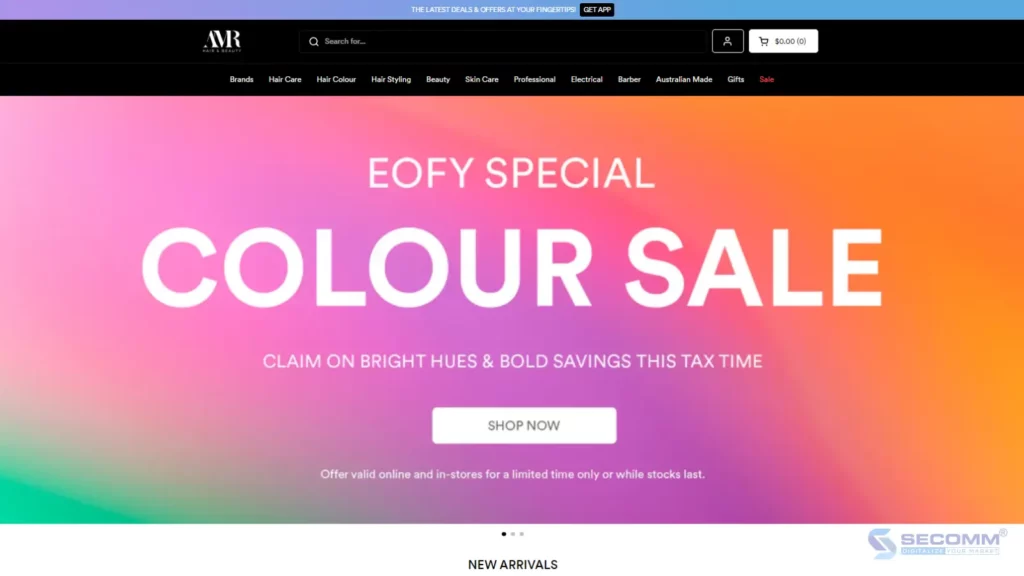
AMR Hair & Beauty is one of the leading suppliers of hair care and beauty products in Australia. Established in 2004, AMR has quickly grown to become a trusted destination for hair salons and individual consumers.
Although WooCommerce has served AMR Hair & Beauty well for many years, with the rapid growth of the business, the platform began to show its limitations. Among them are limited scalability, difficult order management, poor security, and suboptimal customer support.
After switching to Shopify Plus, AMR Hair & Beauty leveraged the B2B on Shopify solution to build a wholesale store and further customize advanced search features and filtering options. This means AMR Hair & Beauty’s B2B customers can quickly narrow down search results and view products along with prices and offers. As a result, AMR Hair & Beauty increased sales by 200%, average B2B order value by 77%, and conversion rate by 93%.
Website: https://amr.com.au/
Industry: Beauty & Cosmetics
Traffic: 258,448/month
Rank: #8,360 (Australia) & #381,873 (Global)

Abode Living was founded in 1991 and since then the brand has become Australia’s leading supplier of luxury bed linen, using the highest quality European fabrics and sewing products in its own factories. I’m in Australia.
With the need to increase online sales in Australia and other markets, and upgrade customer experience. However, the previous platform the company used, WooCommerce, did not offer enough flexibility to customize advanced features. WooCommerce also doesn’t give Abode Living the ability to add international marketplaces to its existing eCommerce system. Switching to Shopify Plus met all of Abode Living’s goals. The brand saw a 15% increase in average order value, faster page load speeds, and faster responses.
Website: https://www.abodeliving.com/
Industry: Home Funishing
Traffic: 16,645/month
Rank: #57,874 (Australia) & #2,352,607 (Global)
Final Words
So, SECOMM has gathered insights from 14 representative brands that courageously stepped out of the “WooCommerce world” to revamp their eCommerce websites with Shopify Plus. These brands prioritize customer experience and streamlined processes, inspiring others to confidently opt for platform migration.
Contact SECOMM or call directly at (+84)28 7108 9908 for advice and implementation of the eCommerce migration process from WooCommerce to Shopify Plus today!
 2
2
 3,581
3,581
 0
0
 1
1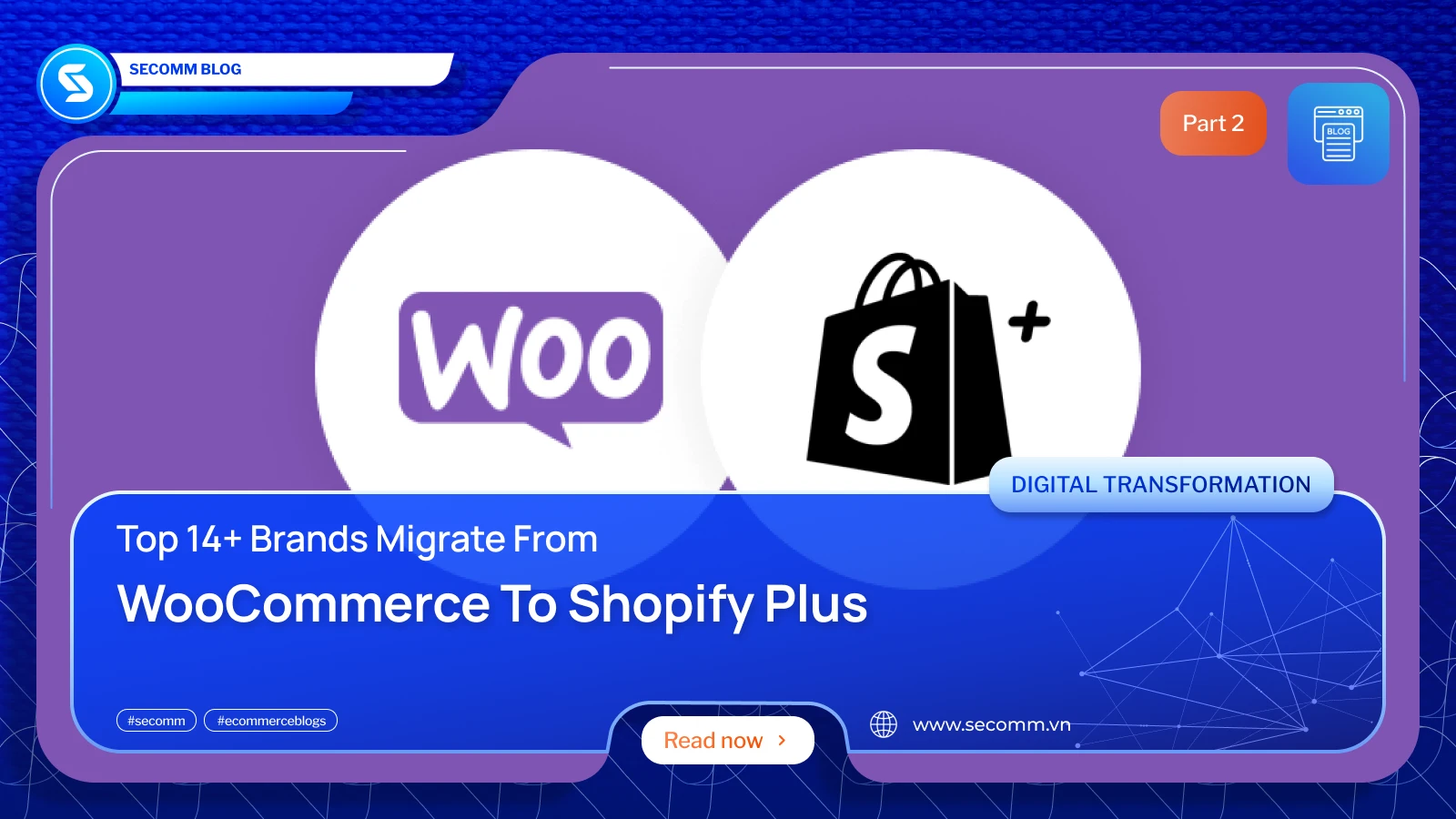
When it comes to brands that re-platformed from WooCommerce to Shopify Plus, it’s good to read their success stories in sales behind.
In the second part of this series, let’s continue to delve into more brands that chose to migrate their eCommerce platforms from WooCommerce to Shopify Plus, and explore how this decision paved the way for boundless success.
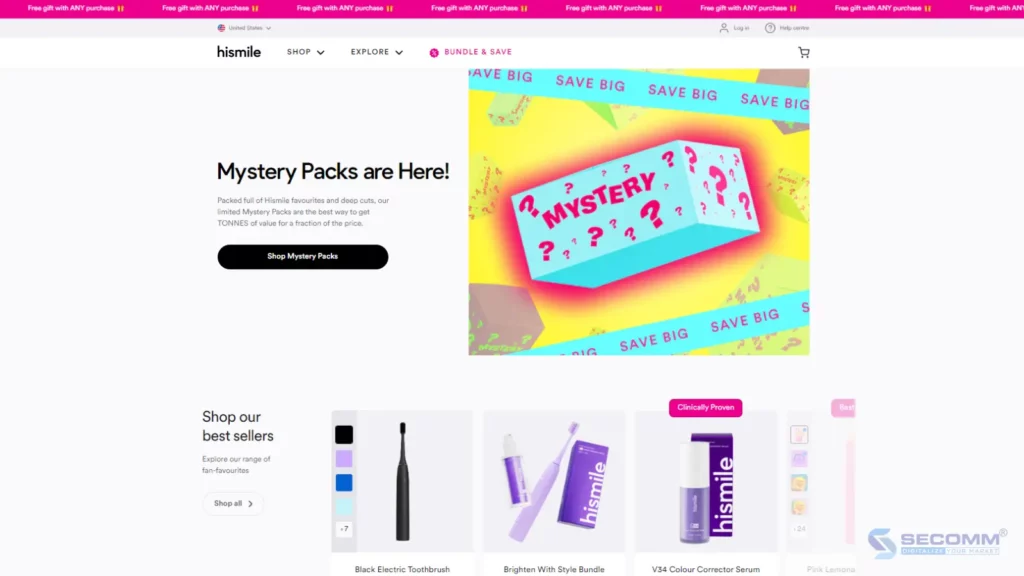
HiSmile is a globally renowned brand for teeth whitening products, aiming to help customers achieve a bright, confident smile. Founded in 2014 in Australia, HiSmile quickly gained attention due to its high-quality, easy-to-use, and effective products.
In the early days of its eCommerce operations, HiSmile’s WooCommerce website performed well. However, as HiSmile gained recognition and became more popular, website traffic began to surge, especially during sales events. Page load issues and site crashes cost the HiSmile team a lot of money in repairs and maintenance. Therefore, they decided to seek a more robust and stable solution and chose Shopify Plus.
With the new Shopify Plus website, HiSmile boosted its social media sales strategy and expanded into the global market. To date, HiSmile has attracted over three million social media followers, 5.5 billion social media impressions, and over 1.5 billion views on its social media videos. These numbers demonstrate the brand’s extensive customer reach. Additionally, global sales have significantly increased since the transition.
Website: https://int.hismileteeth.com/
Industry: Beauty & Cosmetics
Traffic: 4.55M/month
Rank: #10,390 (USA) & #33,392 (Global)
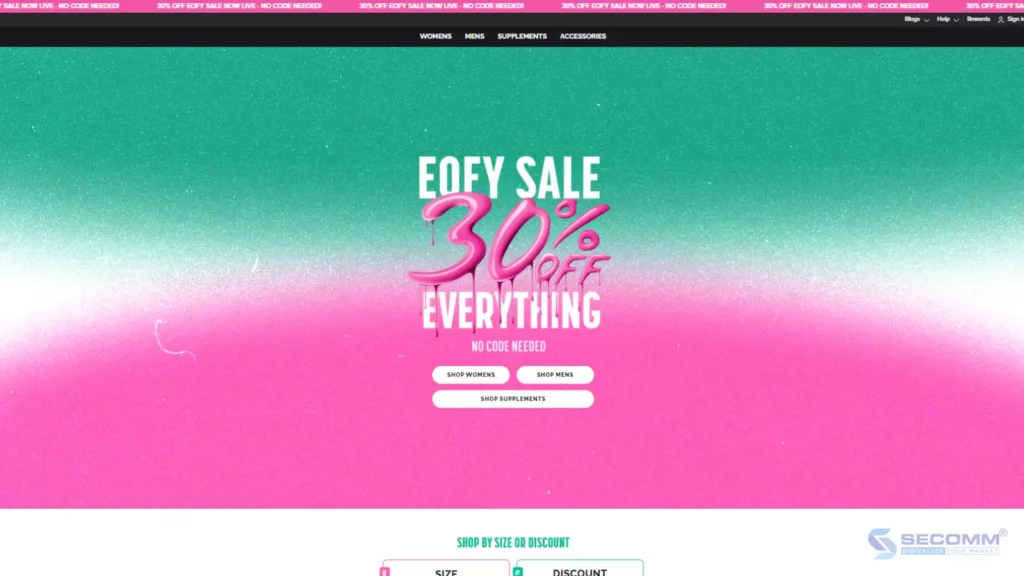
Muscle Nation is renowned in the fitness and sports fashion industry, established with the goal of providing high-quality products tailored to the needs of fitness enthusiasts. The Muscle Nation team focuses on delivering an optimal customer experience and implements social media sales strategies. In its first year, the brand earned $1 million in revenue. At that time, Muscle Nation only had a basic website with eCommerce integration, which led to performance issues and a decline in sales.
Since transitioning to the Shopify Plus platform, Muscle Nation has leveraged the superior ecosystem of apps and tools offered by Plus to customize customer experiences and specific features. The brand uses Shopify Flow to manage high-risk orders and tag customers, Launchpad to handle product releases and event launches, and Peoplevox for warehouse management.
As a result, Muscle Nation generated over $4 million in revenue on Black Friday 2019 and handled more than 208,000 customers shopping simultaneously without any website issues.
Website: https://musclenation.org/
Industry: Fashion
Traffic: 961,900/month
Rank: #2,676 (Australia) & #137,488 (Global)
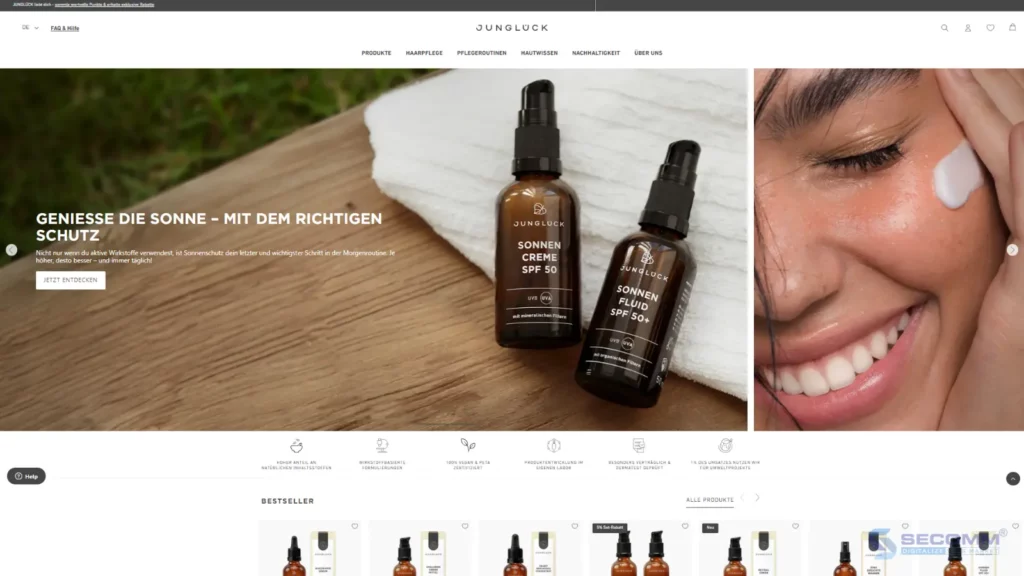
Junglück is a renowned cosmetics brand in Germany, known for its natural and environmentally friendly skincare products. Initially, Junglück used WooCommerce to manage its online store. However, with the brand’s rapid growth, WooCommerce began to show limitations, including slow page load speeds, poor website performance, and restricted integration and scalability.
The cosmetics brand decided to switch to the Shopify Plus platform. This transition allowed Junglück to seamlessly integrate with various third-party systems such as CRM and ERP, enhancing operational efficiency. As a result, Junglück increased its revenue sevenfold since implementing the Shopify Plus website, boosted average order value by 22%, and improved conversion rates by 34%.
Website: https://junglueck.de/
Industry: Beauty & Cosmetics
Traffic: 355,059/month
Rank: #12,653 (Germany) & #308,899 (Global)
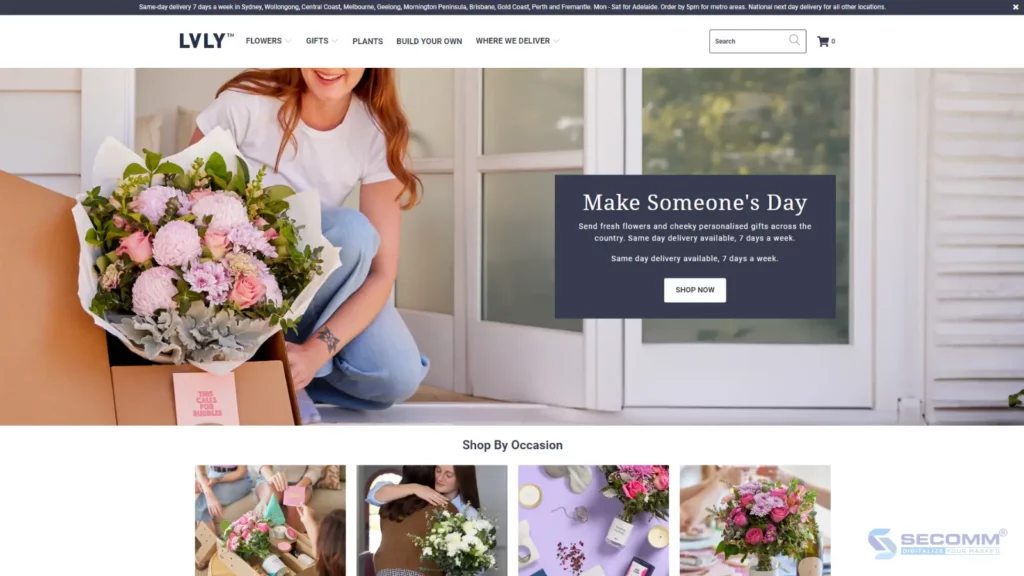
LVLY is a prominent brand in the gift and fresh flower arrangement industry, known for its sophistication and modern style. Each LVLY product is meticulously designed and delivered promptly to the recipient, perfectly conveying messages of love and care.
Previously, LVLY used the WordPress platform and WooCommerce plugin to build its eCommerce website. The brand encountered many customization limitations, and the basic features gradually failed to support expansion. Particularly during major shopping events, the system became overloaded and couldn’t handle the high traffic volume. LVLY decided to switch to the Shopify Plus platform. The platform migration took less than 90 days without reducing the conversion rate. The scalability of Shopify Plus helped LVLY achieve its biggest Valentine’s Day sales ever in 2023. Personalization options and add-ons, which LVLY could not implement on its previous platform, also played a crucial role in the cross-sell/up-sell strategy during this shopping event.
Website: https://www.lvly.com.au/
Industry: Gifts & Flowers
Traffic: 354,352/month
Rank: #6,734 (Australia) & #334,427 (Global)

Since its establishment in 1971, Mandaue Foam has become an indispensable name in the furniture industry in the Philippines. After four years of using the standard Shopify version, Mandaue Foam upgraded to Shopify Plus to seek solutions for expansion and customization.
The brand utilized LaunchPad – an exclusive feature of Shopify Plus – to schedule marketing campaigns and automate product price updates and discounts. Because LaunchPad allows tracking the performance of each campaign in real-time, the Mandaue Foam team can understand customer behavior and adjust campaigns accordingly.
Next, with Shopify Flow, Mandaue Foam automated its order management process by creating a workflow where, as soon as an order is placed, one of the 28 physical locations with inventory for that product is notified to process the order. This process ensures order fulfillment speed while eliminating the need for manual order tracking.
The platform switch and the implementation of eCommerce automation have helped Mandaue Foam increase order volume by 200%, total sales by 151% YOY, and customer return rate by 16%.
Website: https://mandauefoam.ph/
Industry: Furniture
Traffic: 486,503/month
Rank: #2,745 (Philippines) & #170,520 (Global)
Final Words
Here are the next 5 brands in the series re-platform from WooCommerce to Shopify Plus. Throughout SECOMM’s process of executing platform conversion projects, whether from WooCommerce or any other eCommerce platform to Shopify Plus, the pivotal factor determining success is a detailed and well-structured conversion plan.
Contact SECOMM or directly call the hotline at (028 7108 9908) to collaborate on devising the optimal plan for the platform migration to Shopify Plus.
 2
2
 3,244
3,244
 0
0
 1
1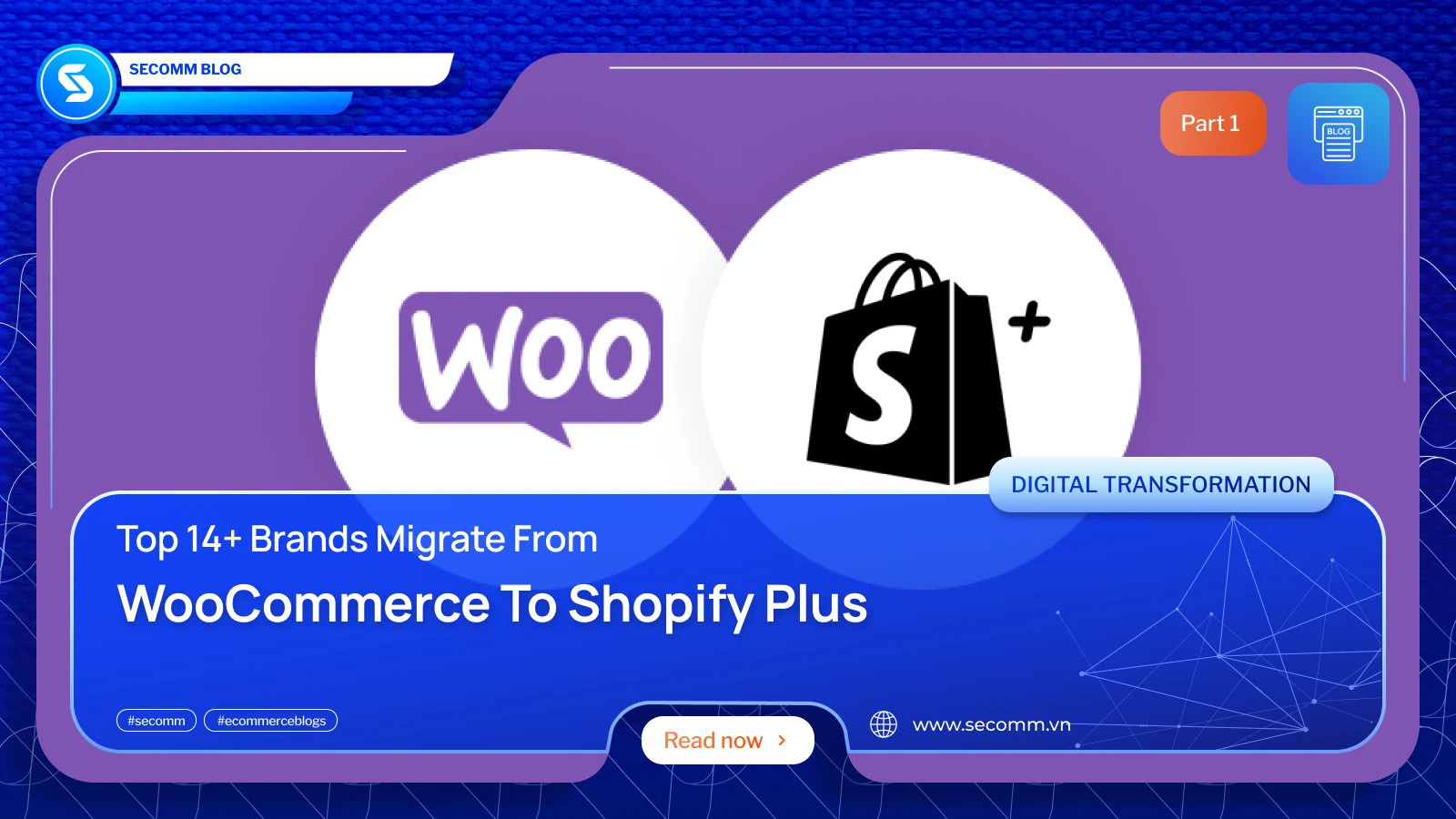
WooCommerce is known as the ‘golden standard’ for many eCommerce businesses. With its intuitive, user-friendly interface and free usage, WooCommerce enables businesses to start operating immediately.
However, its limitations in customization, scalability, and performance, along with the need for ongoing maintenance, have driven many brands to look for better solutions beyond the “WooCommerce world.” Shopify Plus has become a popular choice for those seeking to optimize their platform transition.
Let’s delve into why the five brands below chose to migrate their e-commerce websites from WooCommerce to Shopify Plus and how this decision has boosted their conversion rates and sales.
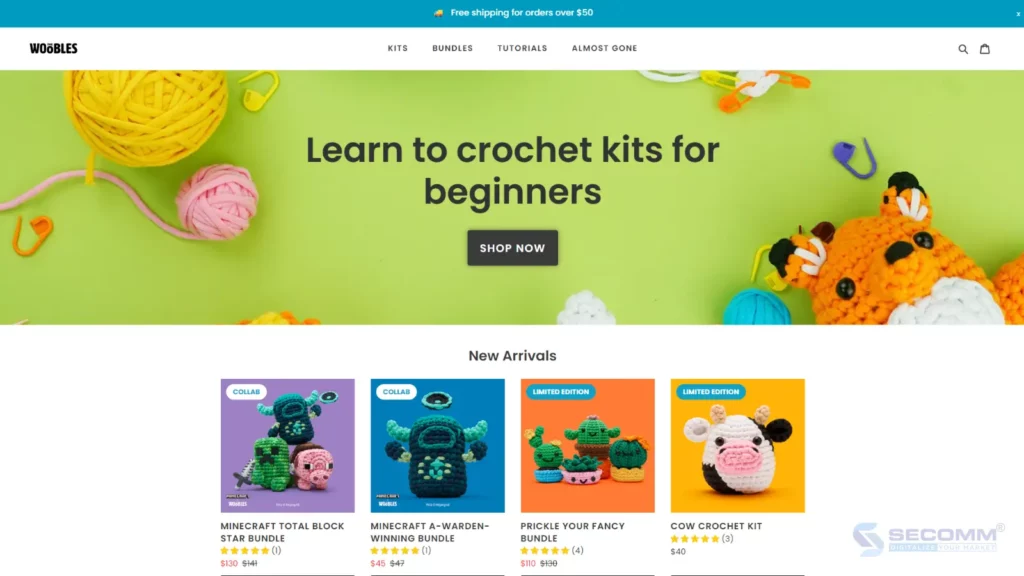
The Woobles is a prominent brand specializing in crochet kits for beginners, with a mission to bring joy and creativity through learning to crochet. Founded with the goal of making it easy for people to access and experience the art of crochet, The Woobles provides complete kits and detailed instructions, enabling users to create adorable products within just a few hours of learning.
After a period of selling on Etsy, the company decided to build its own eCommerce website. Initially, they chose WooCommerce and took only a few weeks to set up the site. However, as The Woobles’ brand grew more popular and website traffic increased, the page loading speed became inefficient. They realized that the money saved on platform fees was far outweighed by the costs of fixing technical issues and maintaining the system.
Switching from the WooCommerce platform to Shopify Plus allowed The Woobles to optimize their investment and leverage the application ecosystem and solutions offered by Shopify and third parties. Shopify’s robust infrastructure helped The Woobles provide customers with a customized shopping experience and handle surges in traffic. Notably, The Woobles’ Shopify Plus website can maintain an uptime of up to 99.99%.
Website: https://thewoobles.com/
Industry: Toys and Gifts
Traffic: 4.997M/month
Rank: #6,216 (USA) & #31,974 (Global)
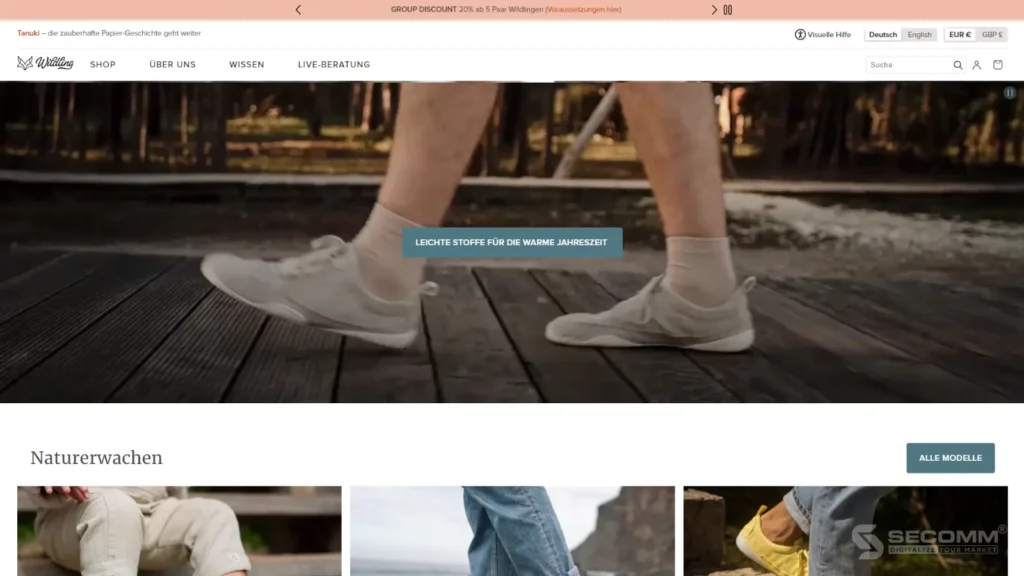
Wilding is a prominent shoe brand that specializes in providing comfortable and stylish footwear for consumers. In 2018, Wilding experienced remarkable growth. However, despite a fairly high repeat customer rate, the conversion rate for new customers did not meet expectations.
With a multi-channel sales strategy, Wilding decided to transition from WooCommerce to the Shopify Plus platform to rebuild its eCommerce system. Additionally, the brand opened several showrooms in various locations across Germany and implemented the Shopify POS solution. This allows customers to try on shoes before deciding to purchase either in-store or through the website. The Shopify POS system integrates sales channels and links transactions, enabling Wilding to manage inventory, orders, and track customer behavior more easily and efficiently.
Website: wildling.shoes
Industry: Fashion
Traffic: 1.783M/month
Rank: #4,971 (Germany) & #80,383 (Global)

Since its founding in 2019, Sunology has gradually established itself as one of Europe’s leading solar equipment providers. After a long period of eCommerce implementation with WooCommerce, Sunology decided to switch to Shopify Plus to seek better customization and scalability solutions to achieve its growth and global expansion goals.
Using Shopify Script allows the company to manage custom material allocations for each solar device. This way, customers can design solar power stations tailored to their specific needs. In addition to streamlining and optimizing Sunology’s management processes, Script also optimizes checkout to provide a more appealing shopping experience for customers.
Sunology also leverages the Shopify Markets tool to quickly set up and efficiently manage multiple stores from a single dashboard. This application makes it easy to translate store content from one language to another, significantly supporting Sunology’s international expansion ambitions.
Website: https://sunology.eu/
Industry: Home & Garden
Traffic: 583,349/month
Rank: #12,355 (France) & #353,837 (Global)
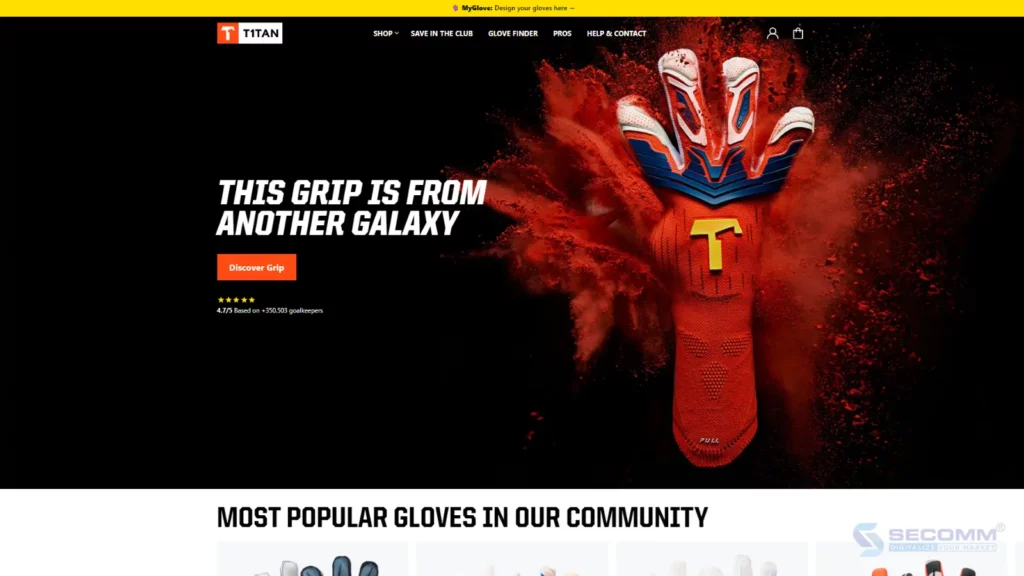
T1TAN is a brand specializing in the production and supply of high-quality sports equipment and accessories, particularly in the field of football. T1TAN’s flagship product is goalkeeper gloves, renowned for their durability, comfort, and superior protection. These gloves are developed to meet the most stringent standards.
With their WooCommerce system, T1TAN experienced a website crash during a sale of limited edition products at discounted prices. The T1TAN team realized they needed a more robust and flexible eCommerce platform. Since switching to Shopify Plus, T1TAN has handled multiple major shopping events with surges in traffic and transactions without any website crashes. This platform change has resulted in a 25% increase in conversion rates, zero downtime, and expansion into six additional markets across Europe.
Website: https://uk.t1tan.com/
Industry: Sport
Traffic: 492,054/month
Rank: #621,737 (USA) & #241,413 (Global)
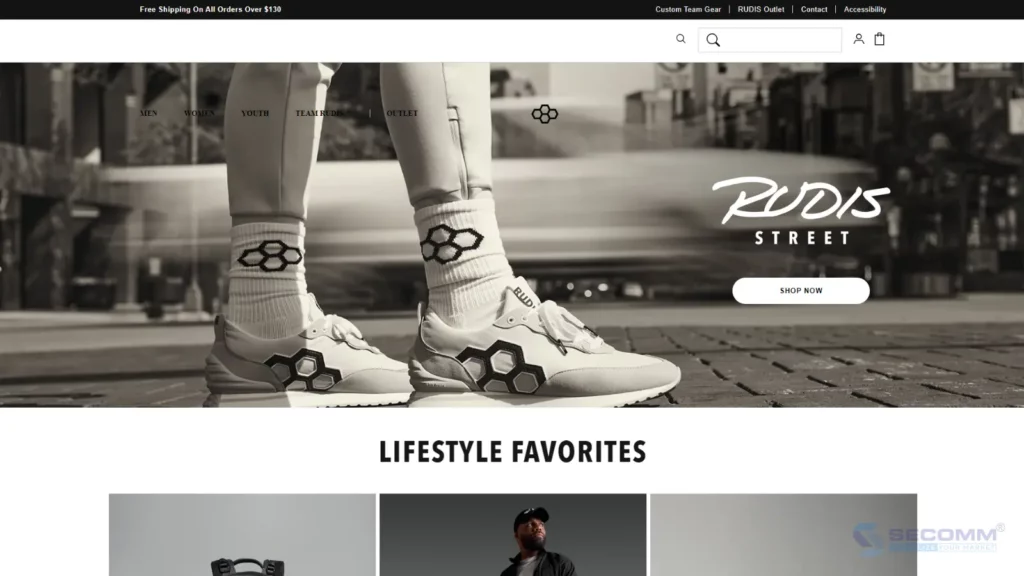
RUDIS is a renowned brand specializing in products and equipment for wrestling, with a mission to support and enhance the performance of athletes at all levels. RUDIS products are designed using advanced technology and premium materials, ensuring durability, comfort, and high performance.
As their eCommerce business grew rapidly, RUDIS struggled to scale their existing WooCommerce system, making a platform switch the only viable solution. RUDIS chose Shopify Plus. After launching the new website, the RUDIS team quickly integrated ERP NetSuite and third-party systems to optimize sales, shipping, and payment processes. With Shopify Plus, RUDIS achieved unprecedented growth, including:
Website: https://www.rudis.com/
Industry: Sport
Traffic: 395,166/month
Rank: #42,519 (USA) & #252,797 (Global)
Final Words
Here are five brands that have witnessed a remarkable change in sales by re-platforming from WooCommerce to Shopify Plus. An important point to note is that while WooCommerce is free and easy to use, complex customizations can be costly and sometimes impractical due to limitations in WordPress and WooCommerce infrastructure. Additionally, businesses may face performance and website speed issues, leading to higher costs for system repairs and maintenance.
On the other hand, Shopify Plus provides businesses with flexible customization options at a more optimal cost, and maintenance and updates are streamlined following Shopify’s standards.
Need more help? Contact SECOMM today!
 18
18
 3,072
3,072
 0
0
 8
8Subscribe to get the latest eBook!
Hotline